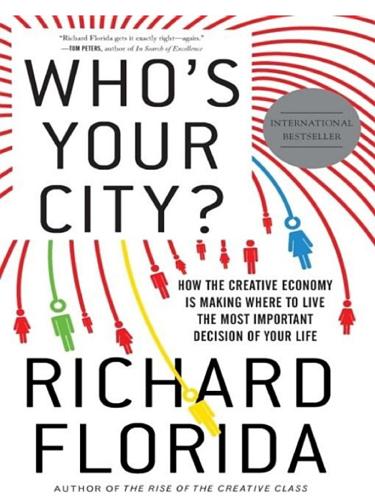
Who's Your City?: How the Creative Economy Is Making Where to Live the Most Important Decision of Your Life
by
Richard Florida
Published 28 Jun 2009
By the end of this book, you’ll better understand the critical role of place in today’s global economy, and how to maximize your chances for a happy and fulfilling life by picking the place that’s right for you. PART I WHY PLACE MATTERS 2 SPIKY WORLD THE WORLD IS FLAT, SAYS NEW YORK TIMES COLUMNIST Thomas Friedman.1 Thanks to advances in technology, the global playing field has been leveled, the prizes are there for the taking, and all of us are players—no matter where on the surface of the earth we may reside. “When the world is flat,” Friedman writes, “you can innovate without having to emigrate.” It’s an old idea with a long history. Since the turn of the twentieth century, commentators have been writing about the leveling effects of trade and technology that make place unimportant.
…
Much of my own research on this subject is summarized in The Rise of the Creative Class, Basic Books, 2002. Chapter 2 1 Thomas Friedman, The World Is Flat, Farrar, Straus & Giroux, 2005. 2 The original article is Frances Cairncross, “The Death of Distance,” The Economist, September 30, 1995. She later published an influential book by the same title, The Death of Distance, Harvard Business School Press, 2001. Also, “Conquest of Location,” The Economist, October 7, 1999. 3 Edward E. Leamer, “A Flat World, A Level Playing Field, a Small World After All or None of the Above? Review of Thomas L. Friedman, The World Is Flat,” Journal of Economic Literature 45, 1, 2007, pp. 83-126. 4 Urbanization data are from “World Population Prospects: The 2006 Revision Population Database,” Population Division, Department of Economic and Social Affairs, United Nations 2007, esa.un.org/unpp. 5 “Q&A with Michael Porter,” Business Week, August 21, 2006, www.businessweek.com/magazine/content/06_34/b3998460.htm. 6 Richard Florida, “The World is Spiky,” Atlantic Monthly, October 2005. 7 Gulden used the light that is visible from space at night as a basis for estimating economic activity.
…
By almost any measure, the international economic landscape is not at all flat. “There are many advantages that children can enter this world with—including intelligence, physical power and agility, good looks and caring parents,” wrote UCLA economist and global trade expert Edward Leamer in a devastating review of Friedman’s book The World Is Flat in the highly respected Journal of Economic Literature: “It also matters where you live.”3 And while theoretically we can choose to live virtually anywhere, the reality of the global economy is that certain places offer far more opportunity than others. The most obvious challenge to the flat-world hypothesis is the explosive growth of cities and urban areas worldwide.
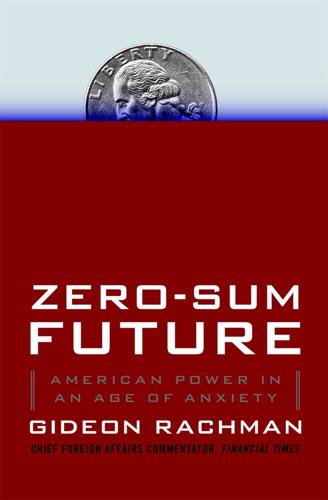
Zero-Sum Future: American Power in an Age of Anxiety
by
Gideon Rachman
Published 1 Feb 2011
Therefore the collapse of the Soviet Union—the end of the Cold War was also a major factor—influencing thinking on economic reforms in our country.”15 Singh also admitted to a “great admiration” for Margaret Thatcher, although he downplays her influence on Indian economic thinking. The rapid rise of the Indian economy in the 1990s, allied to the country’s size, meant that it swiftly became not just another big player in the global economy but a potent symbol of the very process of globalization. Thomas Friedman’s bestseller The World Is Flat, which was published in 2005 and rapidly became the most popular book ever written on globalization, began its narrative in Bangalore, the capital of the Indian IT industry. The rise of Bangalore is indeed a breathtaking story and it is one that was directly attributable to the Indian economic reforms.
…
Why not outsource the dirty old factories to somewhere else in the world and do the clever, lucrative, higher value-added stuff in the United States? The rise of outsourcing in India after 2000 suggested that this rosy picture might be a little oversimplified. What if the Indians could do the clever white-collar stuff as well? Thomas Friedman’s bestselling book on high tech and globalization, The World Is Flat, spent some time wrestling with the implications of Internet-driven outsourcing. But in the end, Friedman came down decisively on the side of the optimists, arguing that America would prosper in a flat world by investing more in education and technology.4 New technology was clearly at the very core of the new industries on the West Coast.
…
The divided world of the cold war had given way to a unified global economy, tied together by high technology. The new technologies empowered individuals and broke down national boundaries. In a “borderless world,” the idea of nation-states going to war seemed positively antediluvian. In his second book on globalization, The World Is Flat, Friedman came up with another version of “democratic peace” theory to illustrate the argument. The “Dell theory of conflict prevention” argued that war between China and Taiwan was made much less likely (impossible, said Friedman) by the fact that they were part of the same high-tech supply chain that manufactured Dell computers.2 Friedman was skillfully popularizing ideas that had been part of liberal theory for many years.
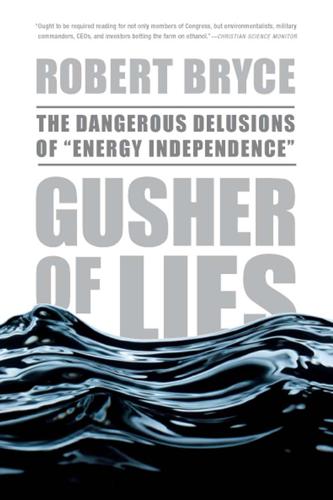
Gusher of Lies: The Dangerous Delusions of Energy Independence
by
Robert Bryce
Published 16 Mar 2011
The Impossibility of Independence 231 Thomas Friedman’s Maginot Line Thomas Friedman is a big deal. He’s won the Pulitzer Prize three times. He’s a columnist for the New York Times and a frequent guest on some of the most prominent TV shows in the U.S. He’s written several best-selling books, including his latest, The World Is Flat (published in 2005), which was on the Times best seller list for more than 100 weeks. The World Is Flat was named one of the best business books of 2006, and U.S. News & World Report has named Friedman as one of America’s “best leaders.” Therefore, when it comes to energy, Friedman must really know what he’s talking about. Right? Alas, if only that were so.
…
Neither Friedman nor Luft bothered to mention the pivotal role that Brazil’s national oil company, Petrobras, has had in Brazil’s energy mix.35 In fact, Friedman’s story ignores Petrobras altogether, a startling omission given that in 2005, the company was producing about 1.7 million barrels of oil per day. That 1.7 million barrels of oil contained roughly eight times as much energy as all of the ethanol that Brazil was producing on a daily basis in 2005, a fact that escaped Friedman’s attention.36 Friedman’s lack of knowledge about the energy business is also obvious in The World Is Flat (in which he also dutifully quotes Luft). In a section devoted to energy issues, Friedman says that the U.S. should be using more electricity in the transportation sector so as to reduce oil consumption. He then states, “We don’t import electricity.”37 Wrong. The U.S. has been importing electricity from both Canada and Mexico for many years and will likely continue doing so for many years to come.38 Friedman’s problem is that he wants it both ways: He espouses the merits and potential of the new flat world, while also insisting that continues 234 GUSHER OF LIES Thomas Friedman’s Maginot Line continued the U.S. should withdraw into energy isolationism and thereby surrender any participation in the world’s single biggest business.
…
The U.S. has been importing electricity from both Canada and Mexico for many years and will likely continue doing so for many years to come.38 Friedman’s problem is that he wants it both ways: He espouses the merits and potential of the new flat world, while also insisting that continues 234 GUSHER OF LIES Thomas Friedman’s Maginot Line continued the U.S. should withdraw into energy isolationism and thereby surrender any participation in the world’s single biggest business. The irreconcilable contradictions in Friedman’s arguments are easily seen in the penultimate paragraph in The World Is Flat, where he states the two greatest dangers he thinks Americans face. The first is “an excess of protectionism—excessive fears of another 9/11 that prompt us to wall ourselves in.” The other danger, claims Friedman, is fear of competing in the world that “prompt us to wall ourselves off, in search of economic security.”
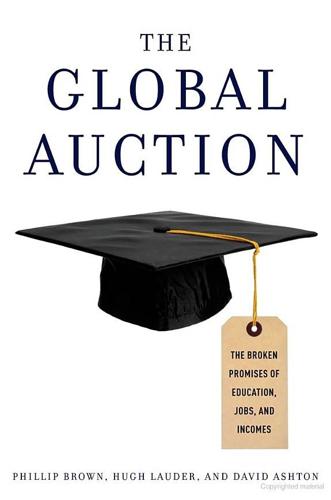
The Global Auction: The Broken Promises of Education, Jobs, and Incomes
by
Phillip Brown
,
Hugh Lauder
and
David Ashton
Published 3 Nov 2010
In today’s knowledge economy, Drucker believed that competitive advantage has come to depend on the productivity of knowledge— using existing knowledge to create new knowledge.3 The use of existing ideas to create new ideas also required a change in the role of management from responsibility “for the performance of people” to responsibility “for the application and performance of knowledge.”4 This is why knowledge management has become a key business issue. Thomas Friedman adds weight to the idea that America’s competitive advantage depends on creativity, innovation, and a highly skilled workforce, as the full force of the hi-tech revolution remains nascent. In The World Is Flat, he suggests that “the last twenty years were just about forging, sharpening, and distributing all the new tools with which to collaborate and connect. Now the real IT revolution is about to begin, as all the complementarities between these tools start to really work together to level the playing field.”5 This chapter will show that there has been an IT revolution, but Freidman along with many others have failed to understand its full significance, especially for college-educated workers.
…
Richard Florida, The Flight of the Creative Class (New York: Harper Business, 2005); Phillip Brown and Stuart Tannock, “Education, Meritocracy and the Global War for Talent,” Journal of Education Policy, 24, no. 4 (2009): 377–392. 20. AnnaLee Saxenian, The New Argonauts: Regional Advantage in a Global Economy (Cambridge, Mass.: Harvard University Press, 2006). 21. Thomas Friedman, The World Is Flat (New York: Penguin, 2005), 230. 22. Gordon Brown, “We’ll Use Our Schools to Break Down Class Barriers,” The Observer, February 10, 2008. 23. President Barack Obama, “Explaining the Promise of Education in America,” White House Briefings, March 10, 2009. http://www.whitehouse.gov/the_press_ office/Fact-Sheet-Expanding-the-Promise-of-Education-in-America/ 24.
…
Drucker observed, “the only thing that increasingly will matter in national as well as in international economics is management’s performance in making knowledge productive.” Post-Capitalist Society, 176. 172 Notes to Pages 59–66 4. 5. 6. 7. 8. 9. 10. 11. 12. 13. 14. 15. 16. 17. 18. 19. 20. 21. 22. 23. 24. Ibid., 40. Thomas Friedman, The World Is Flat (New York: Penguin, 2005), 200. It is not innovation or standardization but innovation as standardization. We credit the idea of “permission to think” to Ian Jones, who was a doctoral student of Phillip Brown. David Landes, The Wealth and Poverty of Nations (London: Abacus, 1998), 187. Ibid., chapter 13.

Globish: How the English Language Became the World's Language
by
Robert McCrum
Published 24 May 2010
Friedman’s ‘Eureka moment’, he writes, came in Bangalore when Nandan Nilekani, the CEO of Infosys, used the phrase ‘the playing field is being levelled’ to describe the new opportunities available to the India-based computer company. London, Boston, San Francisco, Kuala Lumpur, Bangalore: in the new knowledge economy, all these cities could be linked simultaneously, offering a new challenge as much for a modernising India as for a globalising America. ‘My God,’ exclaimed Friedman, ‘he’s telling me the world is flat.’ Armed with this insight, Friedman mobilised himself to explore the many economic aspects of globalisation, from Wal-Mart to Yahoo!, that were contributing to this flattening process. For Friedman, the fall of the Berlin Wall, the rise of the PC, Netscape, outsourcing, and ‘off – shoring’ – his ‘flattening’ forces – combined to enhance a new global awareness.
…
See also Nury Vittachi, Mr Wong Goes West (Crows Nest, NSW, 2008). 7 ‘a kind of global-hegemonic post-clerical Latin’: Benedict Anderson, Imagined Communities (London, 1983), p. 207. 8 Microsoft at their Bangalore headquarters: Evan Osnos, ‘Letter from China’, New Yorker, 28 April 2008. 8 ‘gives all its members a chance to speak’: Abley, The Prodigal Tongue, p. 2. 9 debates surrounding Magna Carta: I thank Philippe Sands for this important insight into the law lords’ deliberations. 10 Bollywood English: Dominic Rushe, Sunday Times Magazine, 15 June 2008. 11 ‘I was recently waiting’: Ben MacIntyre, The Last Word: Tales from the Tip of the Mother Tongue (London, 2009), p. 239. 12 ‘the worldwide dialect of the third millennium’: Robert McCrum, ‘The Globish Revolution’, Observer, Review, 3 December 2006. 12 the linguistic default position: see Thomas L. Friedman, The World is Flat: The Globalised World in the Twenty-First Century (London, 2005). 12 Alan Rusbridger recently codified: the full list is as follows: There is no such thing as Abroad. Most of our readers are ‘foreign’. They expect us to inform them about their own countries. Their decisions will affect us.
…
Chapter 13: ‘The World At Your Fingertips’ 226 ‘the process whereby American girls turn into American women’: Christopher Hampton, Savages (London, 1974), scene 16, p. 75. 226 In 1959 Alistair Cooke complained: Alistair Cooke, America Observed (New York, 1988), p. 120. 227 Many legislators were alarmed: Jean-Benoît Nadeau and Julie Barlow, The Story of French (Toronto, 2007), p. 409. 228 ‘Les angleglottes’, declared the petitioners: Tony Judt, Postwar: A History of Europe Since 1945 (London, 2007), p. 761. 228 ‘a miserable time in Brussels’: author interview with MEP Charles Tannock. 228 ‘British interpreters are now so rare in Brussels’: The Times, 15 February 2009. 229 a complex adolescent mixture: Judt, Postwar, p. 758. 230 farcical interludes, like the Parsley Crisis: Fareed Zakaria, The Post-American World (London, 2008), p. 215. 231 ‘Our souls and our blood are sacrifices’: ibid., p. 216. 232 The Berlin Wall began to crumble: Judt, Postwar, p. 614. 232 ‘If I celebrate the fall of the Wall’: quoted in Thomas L. Friedman, The World is Flat: The Globalized World in the Twenty-First Century (London, 2005), p. 53. 232 In the next two decades: Zakaria, The Post-American World, p. 20. 234 ‘the Internet boom triggered’: Michael Lewis, The New New Thing (New York,1999), p. 2 235 called it ‘an abstract’: quoted in Friedman, op. cit., p. 60 235 Two weeks after Netscape: see Michael Lewis, The New New Thing (New York, 1999). 235 the next Californian Gold Rush: see John Naughton, A Brief History of the Future: The Origins of the Internet (London, 1999). 235 ‘a whole new global platform for collaboration’: Friedman, The World is Flat, p. 91. 237 Anglophile Latin Americans: Allen Guttmann, Sports: The First Five Millennia (Amherst, Mass., 2004). 237 the Superbowl and the World Cup: Franklin Foer, How Soccer Explains the World (London, 2004). 237 The international dimension is comparatively new: David Goldblatt, The Ball is Round, (London, 2006), p. 681. 238 a dreadful anthem: David Goldblatt, The Ball is Round: A Global History of Football (London, 2006), p. 840. 239 ‘You like muffin?’

Consumed: How Markets Corrupt Children, Infantilize Adults, and Swallow Citizens Whole
by
Benjamin R. Barber
Published 1 Jan 2007
Kevin Roberts, Lovemarks: The Future Beyond Brands (New York: power House Books, 2004), p. 150. 4. Ibid., p. 125. 5. As described in the Indian magazine Outlook, and turned into a model of the new entrepreneurship by Thomas L. Friedman in The World Is Flat: A Brief History of the Twenty-first Century (New York: Farrar, Straus and Giroux, 2005), p. 184. 6. It is again Friedman who portrays and uncritically celebrates this consumerist paradigm; The World Is Flat, pp. 184–186. 7. Cited in Michelle Cottle, “The Gray Lady Wears Prada,” The New Republic, April 17, 2006. 8. Daryl Travis, Emotional Branding: How Successful Brands Gain the Irrational Edge (Roseville, Calif.: Prima Venture, 2000), p. 54. 9.
…
He preferred the de facto to high principles: “Many of the most successful standards, however,” he observes, “are ‘de facto’: ones the market discovers…. But because de facto standards are supported by the marketplace rather than by law, they are chosen for the right reasons and to get replaced when something truly better shows up.”79 In his boosterist paean to new technologies called The World Is Flat, Thomas L. Friedman rightly extols the pioneering work of Marc Andreessen in developing the Mosaic web browser, which set an industry standard and turned the internet into a usable technology.80 What he fails to notice is that it was not Andreessen the pioneer but Gates the rational consolidator who fashions the consumer monopoly and makes the fortune off of pioneers who came first.
…
“I guess one reason there’s so much success in America is because there’s so much advertising—of things to want—things to work for.”3 One can almost hear the cheers echoing down through the century, “Hoo-ray! and ya-hoo!” right up to Thomas L. Friedman’s exercise in gee-whiz consumer technology boosterism called The World Is Flat. Yet Andy Consumer has a point. Polls show many people go shopping without a list or a specific purchase in mind. Friedman begins his paean to the new digital technologies that have putatively “flattened the world” (leveled the international playing field) by acknowledging it all happened (in the title of his first chapter) “While I Was Sleeping.”

Factory Man: How One Furniture Maker Battled Offshoring, Stayed Local - and Helped Save an American Town
by
Beth Macy
Published 14 Jul 2014
“It’s the Real Love-Gift”: http://www.ebay.com/itm/1948-Lane-Cedar-Hope-Chest-Wanda-Hendrix-vintage-2pg-ad-/150536985049?pt=LH_DefaultDomain_0&hash=item230cb419d9. “creative destruction”: Joseph Schumpeter (1883–1950) coined the term to describe the free market’s messy way of delivering progress. He called capitalism “the perennial gale of creative destruction.” The World Is Flat: The benefits of globalization appear on page 143 of Friedman’s The World Is Flat (New York: Picador, 2005); he is quoting a study by Morgan Stanley that was originally reported in Fortune magazine on October 4, 2004. Background on Grimes Manufacturing: Sarica Manufacturing Company, a circuit-card assembly supplier for Honeywell based in Urbana, was started by former Honeywell employees when Honeywell announced it was going to begin outsourcing the circuit boards.
…
The lost jobs and vanishing industries that resulted from the ratification of the North American Free Trade Agreement in 1994 and China’s joining the World Trade Organization in 2001 were necessary outcomes, the theory goes. Over time, society becomes richer and more productive, and citizens across the globe benefit from higher living standards. Thomas L. Friedman devotes nearly all 639 pages of The World Is Flat to the benefits of globalization, noting that it saved American consumers roughly $600 billion, extended more capital to businesses to invest in new innovations, and helped the Federal Reserve hold interest rates down, which in turn gave Americans a chance to buy or refinance homes. Or as Joel put it, reminding me of my hundred-and-sixty-dollar recliner: “We’ve all enjoyed the benefits of falling prices.
…
JBIII “let [Schewel] talk for longer than he normally listens to anyone,” and he took copious notes in a rare (for him) show of tongue-holding. Though he often has a tin ear when it comes to workaday diplomacy, his hearing tends to sharpen when there’s money at stake. Schewel advised JBIII to read Milton Friedman’s Free to Choose in a speech that would have made the other Friedman proud (Thomas L. Friedman, author of The World Is Flat; no relation). When the low-paying furniture jobs were among the last to go overseas, Schewel explained, Americans everywhere paid less for imported furniture, just as they had for shoes and clothes, creating a rise in living standards across the board. In the case of his stores, imported bedroom suites were typically 20 to 25 percent cheaper than domestically made ones.
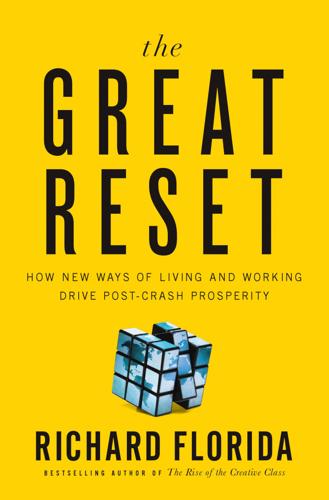
The Great Reset: How the Post-Crash Economy Will Change the Way We Live and Work
by
Richard Florida
Published 22 Apr 2010
Friedman himself writes that the inspiration for his best-selling book The World Is Flat came from a conversation with the CEO of a high-tech company in Bangalore, India, an agglomeration of more than 6 million people at the center of India’s software industry and a key part of the Bangalore-Mumbai megaregion. Thomas Friedman, The World Is Flat (New York: Farrar, Straus and Giroux, 2005). See also Edward Leamer, “A Flat World, A Level Playing Field, a Small World after All, or None of the Above? Review of Thomas L. Friedman, The World Is Flat,” Journal of Economic Literature 43, no. 1 (2007): 83–126; Richard Florida, “The World Is Spiky,” Atlantic, October 2006, retrieved from www.theatlantic.com/images/issues/200510/world-is-spiky.pdf. 4.
…
Megaregions are the strategic power centers of the economy, housing 85 percent of all corporate headquarters in the United States and Canada.2 Though many analysts have predicted that the importance of cities—and that of location—would fade with globalization, the reality is that cities and megaregions have become more important economically than ever before. Even as globalization has spread factories, businesses, and laboratories to places such as India, China, Brazil, and beyond, these activities are being concentrated in the megaregions of those countries. Contrary to the notion that the world is flat, the most successful megaregions, in fact, are becoming economically stronger and spikier, not flatter.3 Megaregions are to our time what suburbanization was to the postwar era. They provide the seeds of a new spatial fix. They expand and intensify our use of land and space the way that the industrial city did during the First Reset and suburbia did in the Second.
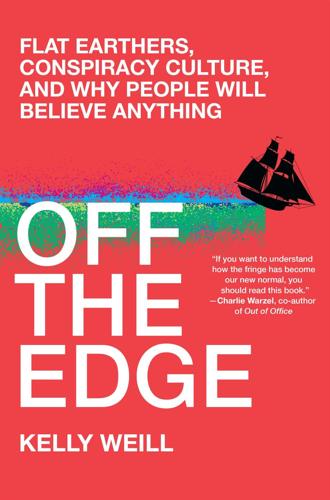
Off the Edge: Flat Earthers, Conspiracy Culture, and Why People Will Believe Anything
by
Kelly Weill
Published 22 Feb 2022
He let loose on his sixty-fifth birthday when, the Chicago Tribune reported, he ate two poached eggs “and on the insistence of his grandchildren nibbled a small piece of birthday cake—the first cake he had eaten in several years.” “I never felt better in my life,” Voliva told the Tribune at the birthday party. “If you don’t believe the world is flat, just try a diet of buttermilk and Brazil nuts.” The organs of power Dowie had abused became even more corrupt under Voliva. Because he’d repurchased the city under his own name, typically public institutions like parks were his private property. He couldn’t completely expel the city’s “independents” (nonmembers of the Christian Catholic Apostolic Church), but he could do everything in his power to make them miserable.
…
But as with the British version of IFERS, there was good reason to be skeptical of Johnson’s membership claims. “Not all of them have paid their dues,” he told the Globe. “Some people don’t want it known they’re in the society. They’re afraid people will think they’re crazy for believing that the world is flat.” In 1978, Johnson wrote in his newsletter, Flat Earth News, that “we have over 1600 ‘Members,’ but don’t think they are keeping up with their dues; they are not. We don’t have any system of keeping at members, prod[d]ing them, etc., etc., so there is just a Hard Core of Stalwarts who make it possible for FLAT EARTH NEWS to go forth.”
…
He told the New York Times that Hughes had texted him the morning of the launch. “Is the media going to be there?” Hughes’s last message read, according to Shuster. Shuster gave me a similar line when I emailed him. “It was part of the PR story to help to get traction with global media. We talked about it many times,” he wrote to me. “He would say: ‘I’m not saying the world is flat, I’m saying I want to motivate people to discover things for themselves.’ And we agreed that nothing gets attention like the then emerging ‘flat earth movement’ and the whole YouTube rabbit hole thing.” Shuster mentioned that he was working on a screenplay and that he was wary speaking to me because of “how this conflicts with my own writings and projects surrounding Mad Mike Hughes (have turned down Sports Illustrated and many others).”

Thank You for Being Late: An Optimist's Guide to Thriving in the Age of Accelerations
by
Thomas L. Friedman
Published 22 Nov 2016
Yeo, George Yildiz, Sadik YouTube; advertising/ISIS video controversy and Zambrano, Patricio Zedillo, Ernesto Zelle, Charlie Zika virus ALSO BY THOMAS L. FRIEDMAN From Beirut to Jerusalem (1989) The Lexus and the Olive Tree (1999) Longitudes and Attitudes (2002) The World Is Flat (2005) Hot, Flat, and Crowded (2008) That Used to Be Us (with Michael Mandelbaum, 2011) A Note About the Author Thomas L. Friedman is a three-time recipient of the Pulitzer Prize for his work with The New York Times and is the author of six bestselling books, including The World Is Flat. You can sign up for email updates here. Thank you for buying this Farrar, Straus and Giroux ebook. To receive special offers, bonus content, and info on new releases and other great reads, sign up for our newsletters.
…
In 2004, I started writing a book about what I thought then was the biggest force driving the Machine—namely, how the world was getting wired to such a degree that more people in more places had an equal opportunity to compete, connect, and collaborate with more other people for less money with greater ease than ever before. I called that book The World Is Flat: A Brief History of the Twenty-First Century. The first edition came out in 2005. I wrote an updated 2.0 edition in 2006 and a 3.0 edition in 2007. And then I stopped, thinking I had built a pretty solid framework that could last me as a columnist for a while. I was very wrong! Indeed, 2007 was a really bad year to stop thinking.
…
I first realized just how bad the minute I sat down in 2010 to write my most recent book, That Used to Be Us: How America Fell Behind in the World It Invented and How We Can Come Back, which I coauthored with Michael Mandelbaum. As I recalled in that book, the first thing I did when I started working on it was to get the first edition of The World Is Flat off my bookshelf—just to remind myself what I was thinking when I started back in 2004. I cracked it open to the index, ran my finger down the page, and immediately discovered that Facebook wasn’t in it! That’s right—when I was running around in 2004 declaring that the world was flat, Facebook didn’t even exist yet, Twitter was still a sound, the cloud was still in the sky, 4G was a parking space, “applications” were what you sent to college, LinkedIn was barely known and most people thought it was a prison, Big Data was a good name for a rap star, and Skype, for most people, was a typographical error.
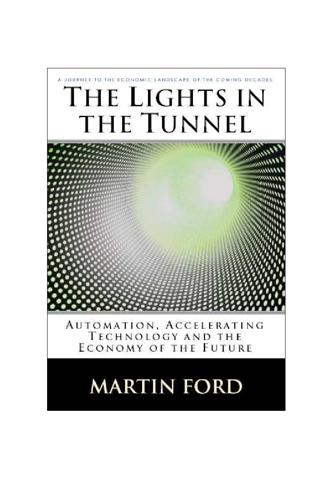
The Lights in the Tunnel
by
Martin Ford
Published 28 May 2011
The conventional answer is: first, the number of workers as compared with the number of retired persons in most countries, and second the number of workers (and the wages they are willing to accept) in developing nations like China as compared with the number of workers in advanced countries. Two of the most notable books that have fleshed out these commonly held views are The World is Flat: A Brief History of the Twenty-first Century by Thomas Friedman and Futurecast: how superpowers, populations, and globalization will change the way you live and work by Robert J. Shapiro. In his book, Shapiro gives a very insightful analysis of the conventional view.38 He identifies three basic forces that he feels will shape the coming decades: (1) The demographic crisis—or “baby boom” problem—that will result in most countries having an unprecedented number of elderly persons relative to the number of workers in their populations. (2) Globalization, which allows labor and capital, as well as products and many services to move effortlessly across borders, and (3) The fall of Soviet-style communism and the adoption of market-based economies throughout the world.
…
Nearly everyone agrees that technology has played an important role in making globalization possible, and that globalization is certainly a highly disruptive force, but now everyone seems to expect that technology will be put back into its box. It will behave. Technology’s role will be to continue pushing the existing trends forward so that the projection lines all the analysts have drawn will remain nice and straight. Friedman’s book, The World is Flat, offers a longer list of ten forces that have “flattened” the world, and he does include some facets of technology in that list.39 However, the focus is almost entirely on specific technologies that enable global competition and collaboration. No attention is given to the overall impact of accelerating technology, and in particular, subjects such as artificial intelligence and robotics go virtually unmentioned.
…
Web: http://www.automationworld.com/webonly-320 34 Alan Greenspan, The Age of Turbulence, New York, The Penguin Press, 2007, p.397. 35 ABC News 20/20 Special, “Last Days on Earth”, 2006 36 Kurtzweil predicts the Technological Singularity by 2045: Fortune Magazine, May 14, 2007, Web: http://money.cnn.com/magazines/fortune/fortune_archive/2007/05/14/100008848/ 37 “Vernor Vinge on the Singularity,” Web: http://mindstalk.net/vinge/vinge-sing.html Chapter 3: Danger 38 Robert J. Shapiro, Futurecast: how superpowers, populations, and globalization will change the way you live and work, New York, St. Martin’s Press, 2008. 39 Thomas L. Friedman, The World is Flat: A Brief History of the Twenty First Century, New York, Farrar, Strause and Giroux, 2005, 2006. 40 China’s high saving rate the result of government policy, see: Eamonn Fingleton, In the Jaws of the Dragon: America’s Fate in the Coming Era of Chinese Hegemony, New York, St. Martin’s Press, 2008. 41 Pietra Rivoli, The Travels of a T-Shirt in the Global Economy: An Economist Examines the Markets, Power and Politics of World Trade, John Wiley and Sons, New York, 2005, p 40. 42 Ibid. p 142. 43 Jeff Rubin and Benjamin Tal, “Will Soaring Transport Costs Reverse Globalization?
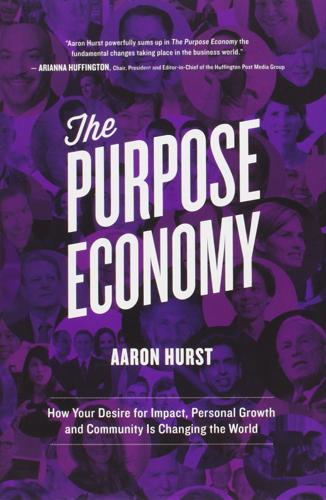
The Purpose Economy: How Your Desire for Impact, Personal Growth and Community Is Changing the World
by
Aaron Hurst
Published 31 Aug 2013
It’s become increasingly hard to close our eyes and ears to that devastation and to the inadequacies in so many countries around the globe, from the teeming slums of India to the horrors of Haiti’s fragile infrastructure. That awareness has spurred an increasing commitment to take part in making change happen. Globalization has also brought transformative technologies to the developing world, opening up extraordinary opportunities for rapid social change there. As Thomas Friedman argued in his bestseller The World Is Flat, globalization has acted as a leveler of the playing field of business, providing both the impetus and opportunity for those in the developing world to begin to compete with the leading industrial powers.20 He points out that one of the ironies of the excesses of the dot-com boom was that it led to so much installation of high-speed cable, and with this over-capacity, the costs of entry to the wired world were driven down dramatically.
…
“Babysitters, Nannies, Child Care and Senior Home Care.” Care.com. N.d. Web. 18. Seligman, Martin E. P. Flourish: A Visionary New Understanding of Happiness and Well-being. New York: Free, 2011. Print. 19. Grant, Adam M. Give and Take: A Revolutionary Approach to Success. New York, NY: Viking, 2013. Print. 20. Friedman, Thomas L. The World Is Flat: A Brief History of the Twenty-first Century. New York: Farrar, Straus and Giroux, 2005. Print. 21. Harth, Chris. “GSF Fact Sheet 1: The State of Global Studies in the United States.” Publication, Global Studies Foundation. N.d. Web. 22. Gardner, John W. Self-Renewal: The Individual and the Innovative Society.
…
The Meaning of It All: Thoughts of a Citizen-Scientist. Reading, MA: Perseus Books, 1998. Print. Foremski, Tom. “Fortune Asks, ‘Why Does America Hate Silicon Valley?’” ZDNet. N.p., 4 Oct. 2013. Web. Freedman, Marc. Encore: Finding Work That Matters in the Second Half of Life. New York: PublicAffairs, 2007. Print. Friedman, Thomas L. The World Is Flat: A Brief History of the Twenty-first Century. New York: Farrar, Straus and Giroux, 2005. Print. Gardner, Howard. Responsibility at Work: How Leading Professionals Act (or Don’t Act) Responsibly. San Francisco: Jossey-Bass, 2007. Print. Gardner, John W. Self-Renewal: The Individual and the Innovative Society.

I Remember Nothing
by
Nora Ephron
Published 9 Nov 2010
He sent a tape of himself. He took the entire thesis of his best-selling book The World Is Flat and squished it down into twenty minutes. Coincidentally, two nights earlier, I had found myself standing across from Friedman, in person, at a craps table in Las Vegas. As he rolled the dice to make a five, I shouted, “This is it, Tom, this is your chance to make up for being wrong on Iraq.” But he rolled a seven and crapped out. And then there he was at this conference. There was a big banner over the screen that said THE WORLD IS FLAT, and all the bright, young Internet people watched Friedman talk about globalization and say that technology had flattened the walls of the world.
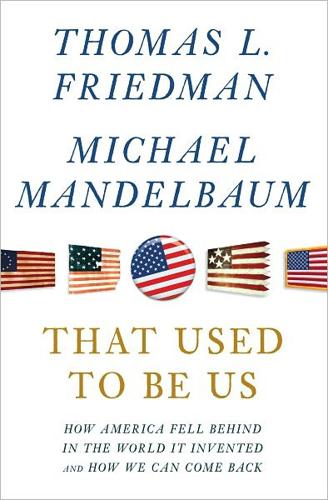
That Used to Be Us
by
Thomas L. Friedman
and
Michael Mandelbaum
Published 1 Sep 2011
‘Five years ago the cost of phone calls, especially those using VOIP, was much higher than it is today. Calls between members of services like Skype are always free but calls to other phones, landlines or mobiles, carry a very small per minute charge,’ Syed says.” In other words, since The World Is Flat was published in 2005, the world has only gotten, well, flatter. How far and how fast have we come? When Tom wrote The World Is Flat, Facebook wasn’t even in it. It had just started up and was still a minor phenomenon. Indeed, in 2005 Facebook didn’t exist for most people, “Twitter” was still a sound, the “cloud” was something in the sky, “3G” was a parking space, “applications” were what you sent to colleges, and “Skype” was a typo.
…
At the same time, these same people in these same places discovered that they were being touched by people who had never touched them before—whether it was a young Indian voice on the phone from a Bangalore call center trying to sign them up for a new Visa card or a young Chinese student in Shanghai who had just taken the place they had hoped to have at Harvard. What they were all feeling was that the world is flat (the title of Tom’s 2005 book)—meaning that more people could suddenly compete, connect, and collaborate with more other people from more different places for less money with greater ease than ever before in the history of humankind. That flattening, which would eventually affect businesses, schools, armies, terrorist groups, governments, and—most of all—individual workers across the globe, was the product of three powerful forces that came together between the late 1980s and the new millennium.
…
And because that used to be us, it can be again. That is why, today, the history books we need to read are our own and the country we need to rediscover is America. ALSO BY THOMAS L. FRIEDMAN From Beirut to Jerusalem (1989) The Lexus and the Olive Tree (1999) Longitudes and Attitudes (2002) The World Is Flat (2005) Hot, Flat, and Crowded (2008) ALSO BY MICHAEL MANDELBAUM The Nuclear Question (1979) The Nuclear Revolution (1981) The Nuclear Future (1983) Reagan and Gorbachev (co-author, 1987) The Fate of Nations (1988) The Global Rivals (co-author, 1988) The Dawn of Peace in Europe (1996) The Ideas That Conquered the World (2002) The Meaning of Sports (2004) The Case for Goliath (2006) Democracy’s Good Name (2007) The Frugal Superpower (2010) Acknowledgments We have benefited enormously from the many people who took time to share their thoughts with us about America’s future.
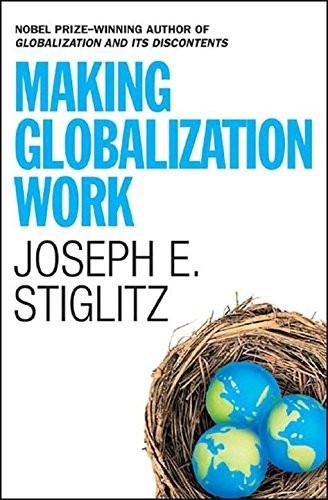
Making Globalization Work
by
Joseph E. Stiglitz
Published 16 Sep 2006
—Times Literary Supplement “[Stiglitz] briskly sorts out an assortment of issues—growth and poverty reduction, climate change, patent regimes, developing-country debt—with the air of a grandmaster dispatching 20 hapless opponents in a game of simultaneous chess.” —Alan Beattie, Financial Times “A worthy counterpoint to Thomas Friedman’s popular The World Is Flat.” —Brendan Driscoll, Booklist “A searing critique of the conventional wisdom…. Stiglitz’s analysis is eye-opening…because it is consistent and comprehensive, and he writes with rare clarity and passion for a distinguished economist.” —Jeffrey E. Garten, Newsweek International “Presented with powerful, often emotional, arguments…[Stiglitz’s] head may be in his profession, but his heart is with the idealist and the hoodlums who disrupt high-toned conferences.”
…
The public debate about globalization has been especially lively within the last half decade, with important contributions by Martin Wolf (Why Globalization Works), Jagdish Bhagwati (In Defense of Globalization), Bill Easterly (The Elusive Quest for Growth), Jeff Sachs (The End of Poverty), and Thomas Friedman (The World Is Flat). Onstage and offstage, we have continued these debates with each other, and I believe we have all benefited—even if we have not been able to convince each other of the merits of our positions. Our democracies have given us the opportunity—I would say the responsibility—to engage in these debates, which hopefully will play a role in shaping public policy in this vital area.
…
Every bribe requires both a briber and a bribee—and too often the briber comes from a developed country. Corruption would occur even if there were not safe havens to which the money can go, and in which the corrupt can sustain their lifestyle after their wrongdoing has been discovered; but secret bank accounts make it easier. MAKING GLOBALIZATION WORK—FOR MORE PEOPLE In his 2005 book, The World Is Flat, Thomas L. Friedman says that globalization and technology have flattened the world, creating a level playing field in which developed and less developed countries can compete on equal terms.32 He is right that there have been dramatic changes in the global economy, in the global landscape; in some directions, the world is much flatter than it has ever been, with those in various parts of the world being more connected than they have ever been, but the world is not flat.33 Countries that want to participate in the new world of high-tech globalization need new technologies, computers, and other equipment in order to connect with the rest of the world.

Masters of Management: How the Business Gurus and Their Ideas Have Changed the World—for Better and for Worse
by
Adrian Wooldridge
Published 29 Nov 2011
Friedman returned to his first calling, the Middle East, in the wake of September 11, when, as it were, the Lexus and the Olive Tree collided with each other with horrific consequences, becoming one of America’s leading “liberal hawks” and providing powerful support for preemptive action to reorder the Middle East. However, as the Iraq War turned into a disaster, he distanced himself from the neoconservatives and returned to the subject of globalization with The World Is Flat (2005), which sold even more copies than Lexus. Friedman argued that the trends that he had analyzed in Lexus had accelerated dramatically in the ensuing years. The Internet had introduced a new phase of globalization: services were being denationalized and brainworkers were joining the global labor market as computer programmers in Bangalore competed head to head with computer programmers in Boston.
…
(Mead gets it exactly wrong when he says that this style is best “taken in small doses”: analyzed sentence by sentence, Friedman’s style can grate; taken in rapidly, preferably on an airplane, it can carry you along.) Gregg Easterbrook complains of Hot, Flat, and Crowded, Friedman’s green-tinged follow-up to The World Is Flat, that “there are so many buzz phrases in Thomas Friedman’s new book that it practically vibrates in your hand.” Malcolm Gladwell’s style also grates on some of his critics. Joseph Epstein has produced an uncannily accurate parody of Gladwell’s signature pen portraits: “Tall, wearing earrings and a metal plate in his head, availing himself of profanity of a kind that would make an Algerian camel driver blush, Zack Zipperman, PhD, has for the past 26 years, in his windowless laboratory at MIT, been teaching white mice to dance the cha-cha-chaa, with interesting results for those who can’t comprehend why men born after 1942 never carry handkerchiefs.”
…
For the three ideas that people have most often plucked out of this cloud—that globalization would usher in an era of standardized global products; that big, global companies would sweep all before them; and that geography and politics would be rendered irrelevant—have all been shown to be myths. Tom Friedman has stamped his brand onto the idea that “the world is flat.” But, in fact, the best modern starting point for this debate is an article that was published almost thirty years ago by Theodore Levitt, “The Globalization of Markets.”3 Levitt, Harvard’s most respected marketing guru, argued that technology was creating “a new commercial reality—the emergence of global markets on a previously unimagined scale of magnitude.”
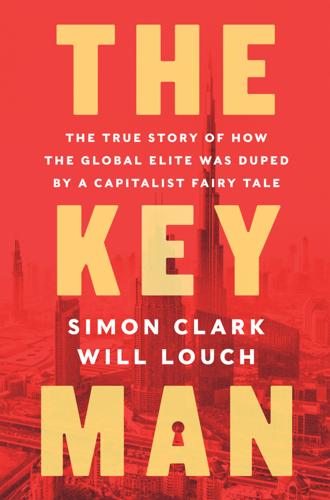
The Key Man: The True Story of How the Global Elite Was Duped by a Capitalist Fairy Tale
by
Simon Clark
and
Will Louch
Published 14 Jul 2021
access to the system: Fadi Ghandour, “How I Did It: The CEO of Aramex on Turning a Failed Sale into a Huge Opportunity,” Harvard Business Review, March 2011, hbr.org/2011/03/how-i-did-it-the-ceo-of-aramex-on-turning-a-failed-sale-into-a-huge-opportunity Sales doubled: Aramex, Aramex Annual Report 2005, www.aramex.com/content/uploads/100/55/27272/2005%20-%20Annual%20Report.pdf second private equity fund: Abraaj Group press release, “Abraaj Capital Announces Closing of Largest Private Equity Fund,” December 17, 2005, wam.ae/en/details/1395227551237 $14 million payout: Thomas Friedman, The World Is Flat: A Brief History of the Twenty-First Century. New York: Farrar, Straus and Giroux, 2005, 150–216. antidote for the terrorism: Thomas Friedman, The World Is Flat: A Brief History of the Twenty-First Century. New York: Farrar, Straus and Giroux, 2005, 150–216. CHAPTER 4: THE GREAT SHOWMAN “agents of change”: Arif Naqvi, “Defining Future Trends: Entrepreneurship in the Arab World,” September 2004.
…
The duo became evangelists for private equity in the Middle East and talked enthusiastically at business conferences about Aramex and Abraaj as successful role models. They courted the media to spread their message, and one particularly influential journalist was listening. Thomas Friedman was a high priest of globalization who wrote for the New York Times. He had nothing but praise for Aramex in The World Is Flat, his book about how the global expansion of business practices and the internet was creating unprecedented opportunities for entrepreneurs in developing countries. “It is the example that is worth a thousand theories. It should be the role model of a self-empowered Arab company, run by Arab brainpower and entrepreneurship, succeeding on the world stage,” Friedman wrote.
…
Prahalad’s theory, 45–46 private-sector healthcare companies in, 167–68, 169, 173, 176 risks of investing in, 139–40, 221, 222 Linda Rottenberg and, 100 Emerging Markets Private Equity Association, 99, 288 Endeavor, 100–101 Epstein, Jeffrey, 271, 284 Erdoğan, Recep Tayyip, 117–18, 121 ethical investment, 87 Ethiopia, 174 European Bank for Reconstruction and Development (EBRD), 119 European Medicines Agency, 237–38 Fancy, Samir, 12, 20 Fan Milk, 122–26, 293 Farnum, Andrew, 215–18, 220, 225–30 Featherston, Scott, 167–68, 178 Federal Express, 25 Feinberg, Stephen, 261 Fendi family, 137 Ferat, Jean-Michel, 242 Financial and Management Services, Karachi, 14–15 financial crisis of 2008, 55, 62, 89, 95, 96, 139–40, 221 Financial Services Authority, Britain, 27 Financial Times, 208 Fink, Larry, 199, 222 Finsbury, 239 Flippen, Flip, 107, 266 Food and Drug Administration, 237–38 Forbes, 128, 150–51, 152, 163, 176, 289 Fortune, 232 Francis (pope), 2, 148–49, 151 French government, 3, 4, 96, 98, 116, 182, 226–27, 229, 291 Freshfields Bruckhaus Deringer, 206, 235 Friedman, Milton, 88–89, 100 Friedman, Thomas, The World Is Flat, 39 Galleon Group, 95 Gandhi, Mahatma, 11, 132, 134 Garten, Jeffrey, 138–41 Gates, Bill. See also Bill & Melinda Gates Foundation Giving Pledge and, 165, 228 healthcare fund of, 165, 167 impact investing and, 216–17 Middle East and, 199 Arif Naqvi on risk-taking of, 41 as Arif Naqvi’s associate, 1, 4, 6, 46, 164, 166, 170, 171–72, 182, 185, 222, 237, 291 Arif Naqvi’s philanthropy and, 43, 151 poverty conference in Italy and, 87 on poverty in Africa, 163–65 UAE speech of 2012, 170–71 at World Economic Forum, 237–38 Gates, Melinda, 43, 163–67 Gauhar, Tabish, 60–64, 66–68, 153 Genghis Khan, 41 German government, 96, 98, 168 Ghana, 122–26, 174 Ghandour, Fadi Aramex and, 24–25, 26, 28, 34, 38–39 Celebration of Entrepreneurship conference and, 79–81 Arif Naqvi’s relationship with, 24–25, 26, 34, 39, 102 Barack Obama’s relationship with, 73–74 Ghosn, Carlos, 142 Global Business Forum, 222 globalization dark side of, 6 Kito de Boer and, 197–98, 201 following Cold War, 3 inequality and, 86 in Middle East, 29, 38 Arif Naqvi on, 38, 201–2, 205 in Pakistan, 9–10 spread of, 205 trade and, 3–4 Donald Trump on, 201 World Economic Forum meetings and, 44 Goldman Sachs, 49, 215–16, 285 Gore, Al, 129 The Government of the United States of America vs.
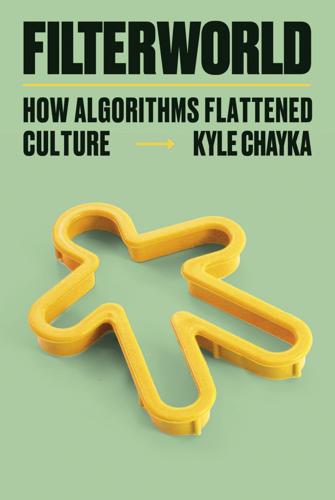
Filterworld: How Algorithms Flattened Culture
by
Kyle Chayka
Published 15 Jan 2024
Those years saw the dawning mainstream awareness of globalization, the way that colonialism and capitalism had led to a planet that was more interconnected and felt smaller than ever before. The major culprit for this popular idea was the New York Times columnist Thomas Friedman’s 2005 book The World Is Flat. It felt like common wisdom: flatness meant that people, goods, and ideas flowed across physical space faster and easier than ever. It was a turbulent moment in history, but even 9/11, and the enduring wars that followed, drove home a certain visceral lesson that America wasn’t so distant or separate from the rest of the planet. “The world is flat” thus became an ambivalent lesson: You can consume plentiful products manufactured in China, but what happens in China might also affect you personally.
…
Friedman’s model of increased international competition has resulted in only a few overall winners, which profit hugely from their monopolization of the internationalized digital space. (Individuals and small businesses compete, but mainly with each other for purchase in the landscape of much larger platform companies, like wolves competing for territory.) In fact, for more than a decade before The World Is Flat, cultural theorists were already describing how globalization, particularly the accelerated version caused by the Internet, breeds sameness and monotony. There was also a rising anxiety about this sameness, a disaffection with the cultural consequences of globalization. In 1989, the Spanish sociologist Manuel Castells conceived of the “space of flows,” which he defined as “the material arrangements that allow for simultaneity of social practices without territorial contiguity,” as he wrote in a 1999 article.
…
“After 1989, capitalism triumphant has led through to globalization,” she wrote in her 2012 collection An Aesthetic Education in the Era of Globalization. By evaluating everything solely in terms of financial productivity, capitalism has turned so many aspects of life into “nearly complete abstraction,” she wrote. One consequence is “the mind-numbing uniformization of globalization.” The world is flat, per Thomas Friedman, but flatness has revealed itself to be stultifying. I referenced one of Spivak’s aphorisms in this book’s introduction: “Globalization takes place only in capital and data. Everything else is damage control.” We talk about politics, culture, and travel becoming globalized, but on a more fundamental level, Spivak is correct that what really flows across the planet are various forms of money and information: investments, corporations, infrastructure, server farms, and the combined data of all the digital platforms, sluicing invisibly like wind or ocean currents between nations.

Age of the City: Why Our Future Will Be Won or Lost Together
by
Ian Goldin
and
Tom Lee-Devlin
Published 21 Jun 2023
This is a book that has been many years in the making, with its origin in the great paradox of modern globalization: that declining friction in the movement of people, goods and information has made where you live more important than ever. Appreciation of the complexity of globalization has come a long way since the early 2000s, when Thomas Friedman’s The World is Flat and Frances Cairncross’s The Death of Distance captured the public’s imagination. With the power of hindsight, we now know that place is of utmost importance in a globalized world. That world is being shaken by a populist politics, often built on anger against cosmopolitan urban elites in major global cities.
…
And the internet had arrived. The development of the World Wide Web in 1989 was followed by surging investment in communications infrastructure. By 2005 more than 1 billion people were connected over the internet.22 That year, the award-winning New York Times journalist Thomas Friedman published a daringly titled book, The World is Flat, in which he made the case that the global economic playing field was rapidly levelling. An instant bestseller, it captured the optimism of the era. But while the world was becoming increasingly frictionless, thanks to the liberalization of trade and the wonders of the internet, another profound change was also at work, the result of which has been an uneven world, more spiky than flat, in which place is more important than ever.
…
Florida, R., et al., 2008, ‘The rise of the mega-region’, Cambridge Journal of Regions, Economy and Society, Vol. 1, No. 3. Frankopan, P., 2015, The Silk Roads (Bloomsbury). Freemark, Y., 2018, ‘Travel mode shares in the U.S.’, The Transport Politic (thetransportpolitic.com). Friedman, T., 2007, The World is Flat (Penguin). Frost, R., 2020, ‘Are Americans stuck in place? Declining residential mobility in the US’, Joint Center for Housing Studies of Harvard University (jchs.harvard.edu). Gabour, J., 2015, ‘A Katrina survivor’s tale: “They forgot us and that’s when things started to get bad”’, Guardian.

The Wikipedia Revolution: How a Bunch of Nobodies Created the World's Greatest Encyclopedia
by
Andrew Lih
Published 5 Jul 2010
As I learned about the online volunteers flocking to Wikipedia, I also became part of the community of editors. Friends and academics used it more and more. They wanted to hear how the site worked—how articles get started, how errors get fixed, and of course about the curious edit wars. After Thomas Friedman, in his book The World Is Flat, quoted two pages from an article I wrote about Wikipedia, people kept telling me to put these stories in my own book, since few people had any insight into Wikipedia’s inner workings. And that’s how the book started. In 2003, I used Wikipedia as a proving ground for a class for eighty-some undergraduate students.
…
The Web site may be free of advertisements, but that hasn’t stopped entities from trying to exercise influence. Spammers, public relations companies, politicians, and those who can gain from crafting public perception have turned their sights to Wikipedia. Pulitzer Prize–winning columnist Thomas Friedman famously noted this in his book The World Is Flat: It is not an accident that IBM today has a senior staffer who polices Wikipedia’s references to IBM and makes sure everything that gets in there is correct. More young people will learn about IBM from Wikipedia in coming years than from IBM itself.5 12_The_Wikipedia_Revolution There is value in trying to influence Wikipedia’s articles, transparently or sur-reptitiously.
…
press=1049) and Alexa (http://www.alexa .com/data/details/traffic_details/wikipedia .org). 2. http://www.reason.com/news/show/36969.html. 3. ComScore, April 2008, http://www.comscore.com/press/release .asp?press=2160. 4. Reason magazine, June 2007, http://www.reason.com/news/show/ 119689.html. 5. Thomas Friedman, The World Is Flat (New York: Picador, 2007), p. 124. Chapter 2. A NUPEDIA 6. http://www.pbs.org/wgbh/amex/quizshow/peopleevents/pande02.html. 7. http://www.enewscourier.com/homepage/local_story_224212506 .html ?keyword= leadpicturestory. 8. http://www.stallman.org/archives/2007-may-aug.html. 9. The Early History of Nupedia and Wikipedia: A MemoirSlashdot, April 18, 2005, http://features.slashdot.org/article .pl ?
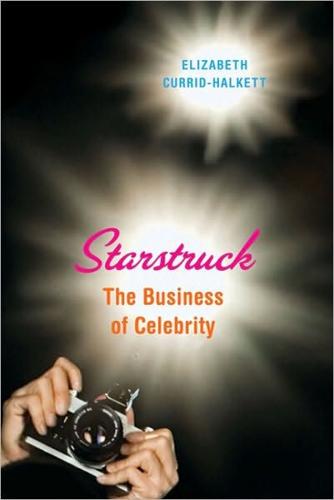
Starstruck: The Business of Celebrity
by
Currid
Published 9 Nov 2010
Martin Jacques, an academic and the former editor of Marxism Today, argues that China will overtake Western hegemony and dominance.9 Their arguments are not a million miles from the broader point that technology and globalization have created lower barriers to entry, which in turn have enabled people (whether Indian entrepreneurs or YouTube exhibitionists) to compete on a larger scale and distribute information about their ideas or personae to a global audience. Similarly, the “world is flat” when it comes to software competition, commerce, and the celebrity industry. The latter is no longer dominated by Hollywood; billions of dollars are being made by Bollywood and reality TV stars who will never visit Los Angeles and will still reap economic rewards for their celebrity. Through globalization and technology, celebrity has emerged as the defining example of cultural multipolarity.
…
“Evolution, Alienation and Gossip: The Role of Mobile Telecommunications in the Twenty-First Century.” Social Issues Research Centre, 2001. Frank, Robert H., and Philip J. Cook. The Winner-Take-All Society. New York: Free Press, 1995. Freiberger, Paul, and Michael Swaine. Fire in the Valley: The Making of the Personal Computer. New York: McGraw-Hill, 2000. Friedman, Thomas L. The World Is Flat: A Brief History of the Twenty-first Century. New York: Farrar, Straus and Giroux, 2007. Frith, Mark. The Celeb Diaries. London: Ebury Press, 2008. Gabler, Neal. “Reality TV: Truth Behind the Lens?” Spectrum Lecture, University of Southern California, January 27/28, 2004, www.learcenter.org.html/publications/?
…
See Weber, “The Nature of Charismatic Authority and Its Routinization.” 6. Uzzi, Amaral, and Reed-Tsochas, “Small-World Networks and Management Science Research.” 7. Zucker and Darby, “Star Scientists and Institutional Transformation.” 8. This story has been changed somewhat to protect the identity of the person described. 9. See Friedman, The World Is Flat; Jacques, When China Rules the World. 10. Geddes, “An Interview with Leo Braudy.” 11. Pinksy and Young, The Mirror Effect; Young and Pinksy, “Narcissism and Celebrity.” 12. Brim, Look at Me! 13. DiSalvo, “Are Social Networks Messing with Your Head?” See also Twenge and Campbell, The Narcissism Epidemic. 14.
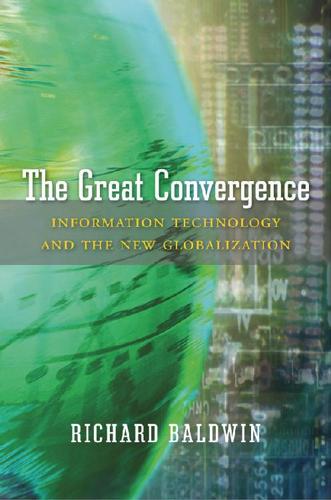
The Great Convergence: Information Technology and the New Globalization
by
Richard Baldwin
Published 14 Nov 2016
What happens when the last constraint is relaxed is the subject of conjectures in Chapter 10. CHAPTER 5 What’s Really New? Globalization is creating a brave new world, according to the journalist Thomas Friedman. His bestselling 2005 book The World Is Flat opens with a description of his “Columbus-like journey of exploration.” This brought him, oddly enough, to a golf game in India. Amazed that so many U.S. corporate brands could be seen from the teeing ground, he experienced a revelation: “I think the world is flat.” Worldly readers may conclude that he would do well to get out more. While this nothing-new-under-the-sun skepticism is tempting, the goal of this chapter is to argue that some things really are new about the New Globalization.
…
See also capital, human; education and training; fractionalization; offshoring; productivity; wages; work skills work skills (skilled and unskilled labor): Britain and, 210; bundling of, 206; development strategies and, 276–277; fractionalization/offshoring and, 205; globalization and, 185; policies and, 228–231, 229f, 230, 231–237, 241, 271, 275; wages and, 186–187, 201–202 World Bank, 243, 272 World Economic Forum competitiveness index, 201 The World Is Flat (Friedman), 142 The World of Odysseus (Finley), 118 “The World through Hitler’s Eyes” (Weinberg), 66 World Trade Organization (WTO), 68, 70, 101, 105, 106t–107t, 279 World Wars I and II, 47, 51, 64–67, 65f, 68, 77, 85, 284 writing, 27, 29, 117 Zheng He: China and the Oceans in the Early Ming Dynasty (Dreyer), 3 7

The Ecotechnic Future: Envisioning a Post-Peak World
by
John Michael Greer
Published 30 Sep 2009
Population decrease, like population increase, is influenced by geography and culture; migrations sweep across some areas but leave others unaffected; political and cultural shifts are exquisitely sensitive to local factors; and the global biosphere is made up of hundreds of bioregions and countless individual ecosystems, each of which will be affected by ecological shifts in its own way. In the short run, this will make many trends easy to miss in those areas little affected by them and easy to exaggerate in the regions that bear their brunt. In the long run, it guarantees that the future will take many forms. A Short History of the Future In his bestselling 2005 book, The World Is Flat, Thomas Friedman used the metaphor of a flat Earth to suggest the compression of distance that has been so potent a part of history in the 20th and early 21st centuries. Linked by telecommunications and cheap air travel, Earth’s nations and cultures have all been within easy reach of one another for the first time in recorded history.
…
The most drastic of these shifts, around 11,500 years ago, sent global temperatures rising 12°C in less than 50 years. See sciencedaily.com/releases/2008/ 06/080619142112.htm. 10. See Ponting, A Green History of the World, and Richardson B. Gill, The Great Maya Droughts: Water, Life, and Death, University of New Mexico Press, 2000. 11. Thomas Friedman, The World is Flat: A Brief History of the Twenty-first Century, Farrar, Strauss and Giroux, 2005. Chapter Four: Toward the Ecotechnic Age 1. See, for instance, David Korten, The Great Turning: From Empire to Earth Community, Berrett-Koehler 2006; Alexia Parks, Rapid Evolution: Seven Words That Will Change Your Life Forever, Education Exchange, 2002; and Graeme Taylor, Evolution’s Edge: The Coming Collapse and Transformation of Our World, New Society Publishers, 2008. 2.
…
Economic Research Service, United States Department of Agriculture, “Briefing Room: Organic farming and marketing,” ers.usda.gov/Briefing/Organic Energy Information Administration, Annual Energy Review, Energy Information Administration, 2007. Fichman, Martin, Evolutionary Theory and Victorian Culture, Humanity Books, 2002. Friedman, Thomas, The World Is Flat: A Brief History of the Twenty-first Century, Farrar, Straus and Giroux, 2005. Fukuyama, Francis, “The End of History?” The National Interest, Summer 1989. ——— The End of History and the Last Man, Free Press, 1992. Galbraith, John Kenneth, The Great Crash 1929, Houghton Mifflin, 1954. Bibliography Gerson, Mark, ed., The Essential Neoconservative Reader, Perseus, 1997.

Letters From an Astrophysicist
by
Neil Degrasse Tyson
Published 7 Oct 2019
But this whole thing is just the symptom of a larger problem. There is a growing anti-intellectual strain in this country that may be the beginning of the end of our informed democracy. Of course, in a free society you can and should think whatever you want. And if you want to think the world is flat go right ahead. But if you think the world is flat and you have influence over others, then being wrong becomes being harmful to the health, the wealth, and the security of our citizenry. Discovery and exploration got us out of the caves and each generation benefits from what previous generations have learned. Isaac Newton said, “If I have seen farther than others it is by standing on the shoulders of giants.”
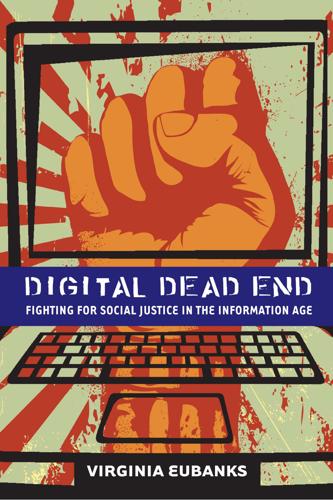
Digital Dead End: Fighting for Social Justice in the Information Age
by
Virginia Eubanks
Published 1 Feb 2011
He writes, “Change, even in its shocking forms, is rapid difference. Flux, on the other hand, is more like the Hindu god Shiva, a creative force of destruction and genesis. Flux topples the incumbent and creates a platform for more innovation and birth” (10). Thomas L. Friedman makes a similar argument in his 2005 bestseller, The World Is Flat, explaining that digital connectivity produced rapid changes in the last two decades—including the fall of the Berlin Wall, the invention of the Netscape Web browser, and employment practices such as outsourcing and off-shoring—that act as flattening and leveling forces, creating broad-based equity across the globe.
…
Among the most popular are Daniel Bell’s The Coming of Post-Industrial Society (1976), Alvin Toffler’s The Third Wave (1980), John Naisbett’s Megatrends (1984), Peter Drucker’s Post-Capitalist Society (1993), Bill Gates’s The Road Ahead (1996), Kevin Kelly’s Out of Control (1995) and New Rules for the New Economy (1998), Esther Dyson’s Release 2.0 (1997), Thomas Friedman’s The World Is Flat (2005), and Don Tapscott’s Wikinomics (2006). 15. Volatility is increasingly the topic of policy discussions about inequality and development. As Joshua Aizenman and Brian Pinto argue in Managing Economic Volatility and Crises: A Practitioner’s Guide (2005), there is a significant relationship between economic volatility and inequality.
…
Freire, Paulo. 1973. Education for Critical Consciousness. New York: Continuum. Freire, Paulo. [1970] 1997. Pedagogy of the Oppressed. New York: Continuum. Freire, Paulo. 1998. Pedagogy of Freedom: Ethics, Democracy, and Civic Courage. New York: Rowman & Littlefield. Friedman, Thomas L. 2005. The World Is Flat: A Brief History of the Twenty-First Century. New York: Picador. Fuller, Laurie, and Erica Meiners. 2005. Reflections: Empowering Women, Technology, and (Feminist) Institutional Changes. Frontiers: A Journal of Women Studies 26:168–180. Fusco, Coco. 2002. The Bodies That Were Not Ours and Other Writings.
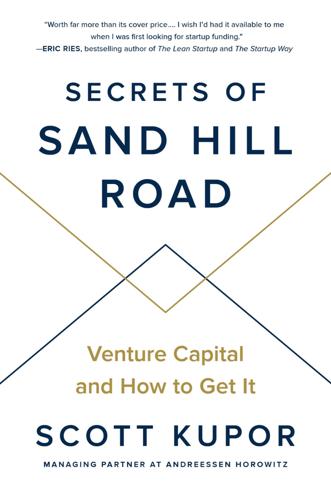
Secrets of Sand Hill Road: Venture Capital and How to Get It
by
Scott Kupor
Published 3 Jun 2019
The Alphabet Soup of Term Sheets: Part Two (Governance) 11. The Deal Dilemma: Which Deal Is Better? 12. Board Members and the Good Housekeeping Seal of Approval 13. In Trados We Trust 14. Difficult Financings: When Bad Things Happen to Good People 15. Exit Stage Left (The Good Kind) Conclusion: The World Is Flat Appendix: Sample Term Sheet Acknowledgments Notes Index About the Author FOREWORD Scott Kupor’s Secrets of Sand Hill Road: Venture Capital and How to Get It is motivated by the desire to democratize opportunity. It demystifies venture capital, laying out how this crucial part of the startup ecosystem works for anyone who picks it up.
…
In addition, the daily reminder of apparent success (or failure) that the stock price represents can become a distraction from keeping people’s eyes focused on the long-term prize of executing your product plan. These are of course first-class problems to have, given that you have achieved what a very small minority of venture-backed entrepreneurs ever do: getting your company from founding to a successful IPO. And thus a new day begins. CONCLUSION The World Is Flat If you made it this far, congratulations to you, and might I suggest that you find some hobbies? Seriously, though, I hope I have been able to give you a better perspective on how the venture industry works and how startup companies can best navigate their way through their interactions with venture capital firms.
…
Good VCs appropriately balance their duties to the common shareholders with those they owe to their limited partners. Good VCs recognize that, ultimately, it is the entrepreneurs and the employees who build iconic companies, with hopefully a little bit of good advice and prodding sprinkled in along the way by their VC partners. If VCs remain good, they won’t become dinosaurs. The World Is Flat I am very privileged to be part of an incredibly dynamic industry that, while small in terms of relative capital, contributes an enormous amount to the technological development and the economic growth of the global economy. For many years, as noted earlier, the US has occupied a special place in venture capital.
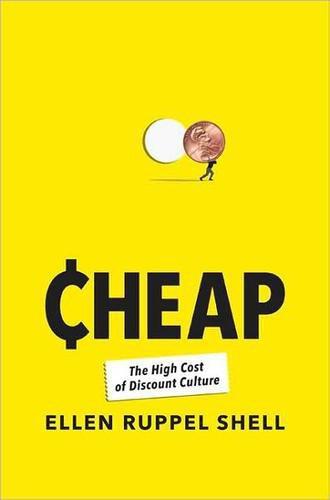
Cheap: The High Cost of Discount Culture
by
Ellen Ruppel Shell
Published 2 Jul 2009
Nearly one-third of those in graduate programs in science and engineering in the United States are foreign students, many of whom return to their home countries, set up businesses, and surpass their American rivals. Other foreign-born graduates stay here, competing for jobs. This, in turn, has made science and engineering less attractive to American students. New York Times columnist Thomas L. Friedman wrote in his best-selling The World Is Flat, “The Indians and Chinese are not racing us to the bottom. They are racing us to the top—and that is a good thing.” Well, yes and no. It is a very good thing that globalization has to some degree redistributed the spoils of innovation and that India and China are supporting educational and technological advance and building human capital.
…
Freeman, who was kind enough to speak with me at length on the topic of international labor markets. 211 surpass their American rivals: “Foreign Science and Engineering Graduate Students Returning to U.S. Colleges,” National Science Foundation press release, January 28, 2008. 211 “and that is a good thing”: Thomas L. Friedman, The World Is Flat (New York: Farrar, Straus & Giroux, 2005), 233. 212 “there is no strong labor response”: Richard B. Freeman, “Labor Market Imbalances: Shortages or Surpluses or Fish Stories,” delivered to the Boston Federal Reserve Economic Conference, “Global Imbalances—As Giants Evolve,” in Chatham, Massachusetts, June 14-16, 2006. 212 working conditions for the rest of us: Interview with Richard B.
…
Boston: Beacon Press, 1996. Freud, Anna. The Ego and Mechanisms of Defense: The Writings of Anna Freud. Madison, Conn.: International Universities Press, reprint edition, 1967. Friedman, John. China’s Urban Transition. Minneapolis, Minn.: University of Minnesota Press, 2005. Friedman, Thomas L. The World Is Flat. New York: Farrar, Straus & Giroux, 2005. Galbraith, James K. Balancing Acts: Technology, Finance, and the American Future. New York: Basic Books, 1989. Galbraith, John Kenneth. The Affluent Society. Boston: Houghton Mifflin, 1958. Gavin, Alexander. The American City: What Works, What Doesn’t.
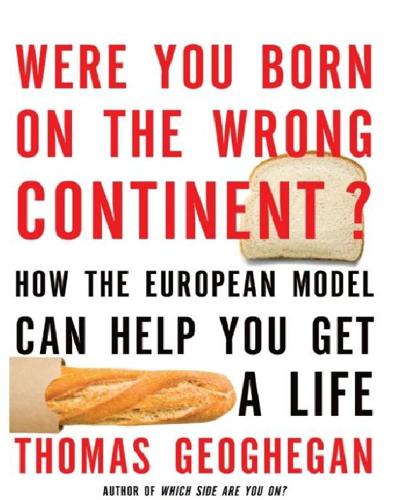
Were You Born on the Wrong Continent?
by
Thomas Geoghegan
Published 20 Sep 2011
So for most of the recent past, it’s not been China, with 1.3 billion people, or the U.S., with 300 million, but Germany, with 82 million, that has led the world. But in China and the U.S., we have to work till we drop. The Germans take six weeks off: in a sense, they have been outcompeting us with one hand tied behind their backs. Surprised? None of this is supposed to be true, according to the business books. Pick up Thomas Friedman’s The World Is Flat. We’re all competing with each other, and we’re competing on cost. Everyone says, “Labor markets have to be flexible.” But at least by our standards, the German labor market is anything but flexible. Even in the big firms, they have half the corporate boards made up of workers. So how can they be so competitive?
…
And that’s one reason why labor here is in collapse and we’re the biggest debtor country in the world. Germany has its problems. But the “German model,” this particular form of European social democracy, knocks down so many of the glib things we tell ourselves about globalization. Here are three examples of ways that some of the public policy books we buy at the airports are wrong:1. “The World Is Flat”—or, the country with the lowest labor cost “wins.” But if it were a flat world, Germany should be toast. Look below at this chart from The State of Working America 2008/2009. Because it’s difficult to denominate labor costs in different currencies, the chart below just fixes the U.S. labor cost at 100 in purchasing power parity.
…
Why the Allies Won (Overy) Wigand (IG Metall organizer) Wilde, Oscar Wilentz, Sean Wilkinson, Richard Wings of Desire (film) Wolfsburg, Germany women’s equality and benefits birthrates France Germany life expectancy pay and job rights U.S. works councils and the German model after the Krise all-day meetings civic trust and EU intense right to be consulted numbers of people serving on and papal social democracy training people to bargain and unions The World Is Flat (Friedman) World News Association World War I World War II Yuenger, Jim Zurich, Switzerland Postscript © 2011 by Thomas Geoghegan © 2010 by Thomas Geoghegan All rights reserved. No part of this book may be reproduced, in any form, without written permission from the publisher.
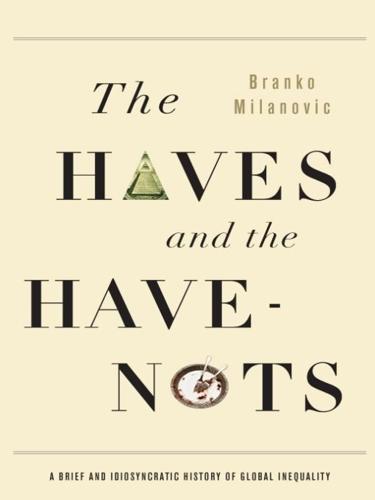
The Haves and the Have-Nots: A Brief and Idiosyncratic History of Global Inequality
by
Branko Milanovic
Published 15 Dec 2010
Thus, all inequality results shown here are (slight) underestimates compared to “real” values. 5 It takes $90,000 of net income per capita to be in the top 1 percent of U.S. income distribution. 6 We know that 60/(2.06)α has to yield 6. Hence, α = 3.2. Vignette 3.2 1 One example is Thomas Friedman, The World Is Flat (New York: Farrar, Straus, and Giroux, 2005). 2 Pioneered by Lester Thurow, “A Surge in Inequality,” Scientific American 256 (1987), it was used recently in Carol Graham, Nancy Birdsall, and Stefano Pettinato, Stuck in the Tunnel: Is Globalization Muddling the Middle? Brookings Institution Center Working Paper 14 (Washington, DC: Brookings Institution, August 2000); and Steven Pressman, “The Decline of the Middle Class: An International Perspective,” Journal of Economic Issues 40, no. 1 (2007): 181-200, in a study of the middle class in eleven developed countries.
…
[A picture of the world conveyed by income surveys from about one hundred countries.] Sutcliffe, Bob. “World Inequality and Globalization.” Oxford Review of Economic Policy 20, no. 1 (2003): 15-37, 2003. [Review of the evidence and discussion of possible links between globalization and global inequality.] Vignette 3.2 Friedman, Thomas. The World Is Flat: A Brief History of the 21st Century. New York: Farrar, Straus, and Giroux, 2006. Milanovic, Branko, and Shlomo Yitzhaki. “Decomposing World Income Distribution: Does the World Have a Middle Class?” Review of Income and Wealth 48, no. 2 (2002): 155-178. Pressman, Steven. “The Decline of the Middle Class: An International Perspective.”

The Smartphone Society
by
Nicole Aschoff
Bruder, Nomadland, 62. 50. Lee et al., “Working with Machines.” 51. O’Connor, “When Your Boss Is an Algorithm.” 52. JC, “Ridester’s 2018 Independent Driver Earnings Survey,” Ridester, March 29, 2019, www.ridester.com/2018-survey. 53. For a discussion, see Taplin, Move Fast and Break Things. 54. Friedman, The World Is Flat. 55. Waddell, “Why Bosses Can Track Their Employees 24/7.” 56. Levin, “Sexual Harassment and the Sharing Economy.” 57. See Laufer, “Social Accountability and Corporate Greenwashing.” 58. Amazon.com, “2017 Amazon Holiday Commercial,” video, https://www.youtube.com/watch?v=OITWgx8K6Ko. 59.
…
Freedom on the Net 2016. “Silencing the Messenger: Communication Apps Under Pressure.” Freedom House, November 2016. Fried, Ina. “What Facebook Knows About You.” Axios, January 2, 2019. Friedman, Richard A. “The Big Myth About Teenage Anxiety.” New York Times, September 7, 2018. Friedman, Thomas L. The World Is Flat: A Brief History of the Twenty-First Century. New York: Farrar, Straus and Giroux, 2005. Gabler, Neal. Life: The Movie—How Entertainment Conquered Reality. New York: Vintage Books, 2000. Galloway, Scott. The Four: The Hidden DNA of Amazon, Apple, Facebook, and Google. New York: Penguin Books, 2017, Kindle edition.
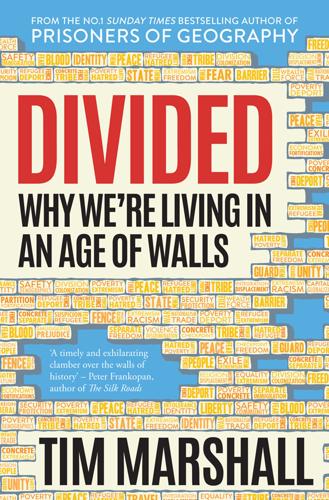
Divided: Why We're Living in an Age of Walls
by
Tim Marshall
Published 8 Mar 2018
These physical divisions are mirrored by those in the mind – the great ideas that have guided our civilizations and given us identity and a sense of belonging – such as the Great Schism of Christianity, the split of Islam into Sunni and Shia, and in more recent history the battles between Communism, Fascism and Democracy. The title of Thomas Friedman’s 2005 book The World is Flat was based on the belief that globalization would inevitably bring us closer together. It has done that, but it has also inspired us to build barriers. When faced with perceived threats – the financial crisis, terrorism, violent conflict, refugees and immigration, the increasing gap between rich and poor – people cling more tightly to their groups.
…
Goodhart) 232–3 Robert the Bruce 222 Robinson, Henry 227, 228 Robinson, Peter 228 Rohingya people 136–7 Roman Empire 217–20 Rozoff, James 213 Russia 2, 198, 200 Rwanda 166 S Sadat, Anwar 117 Safavid dynasty 106 Sahrawi Arab Democratic Republic 155–6, 177 Salman, Crown Prince Mohammed bin 113–14 San Bernardino terrorist attacks 51 Saudi Arabia 6, 42, 104, 105, 115, 116 building barriers 42, 106, 107–8, 246 internal divisions 108–9 reforms initiated by royal family 113–14 Scandinavia 196 Schabowski, Günter 189 Scioli, Mike 48 Scotland 196–7, 219, 220 Gaelic language 223 independence referendum (2014) 223–4 relationship with England 222–4, 225–6, 229–30 Scottish parliament 223–4 Scotland Act (1998) 223 Scotland Act (2016) 224 Scottish National Party (SNP) 224 Second Intifada 74 Second Temple, Israel 82–3 Second World War 46, 250 Senegal 165 Sephardi Jews 80, 83 Serbia 2, 199 Shia Islam 4, 5, 6, 102–3, 104–6, 108, 109, 115, 116, 144 Shudras 146 Siachen Glacier 143 Silk Route 14 Singh, Maharaja Hari 141 Single European Act (1986) 194 Six-Day War 64 slavery 45, 59–60 Slovenia 2, 200 smartphones in China 30 Smith, Nathan 246–7 smuggling across borders 46, 51–2, 89–90 social media 4, 28, 29, 30, 51 Social Mobility and Child Poverty Commission, UK 231 Socialist Unity Party, East Germany 184–5 South Africa 168, 171–2, 173 South Sudan 165 Soviet Union 1, 184, 194 space, ownership of outer 248–9 space race 185 Spain 43–4, 156, 167, 197, 198–9 Sri Lanka 126 Stasi 188 Strelczyk, Hans 186 Sungbo’s Eredo 162 Sunni Islam 4, 5, 6, 102, 103, 104–6, 107–8, 109, 113, 115, 116, 144 Sweden 2, 200, 204, 207, 235 Switzerland 202 Syria 42, 79, 92, 101, 105, 106–7, 110, 111, 116 Syrian–Israel border wall 78–9 T Taliban 143–4 Tanganyika 170 Tanzania 170 terrorism Bango Bhoomi theory 132–3 in Europe 200, 201, 205 in the Middle East 99–101, 103–4 radical Islam 18, 51, 79, 101, 104, 105, 107, 114, 115, 128, 137 Uighur people of China 18 United States of America 50–1 see also Hamas; Islamic State (IS) Texas 43–5, 52 Texas–Mexico Automotive SuperCluster Region 52 Tibet 17, 19, 29, 126 Tohono O’odham nation 54 ‘Tortilla Curtain’ 47 trade and industry China 18, 20–1, 30–1, 33 United States of America 52–3 Treaty of Guadalupe Hidalgo (1848) 43, 45 tribalism, African 6, 157–8 Tripathi, Sanjeev 131 True Story of Ah Q (Lu Xun) 22 Trump, Donald 3, 6, 39–41, 43, 50, 51, 52–7, 61, 64, 93, 210 see also United States of America Tunisia 101, 106 Turkey 106, 110, 111, 199, 208, 244 Tutsis 166 2001: A Space Odyssey (film) 3 U Uighur people 17–18, 29 Ukrainian–Russian conflict 198 UNICEF 104 Unionists and Nationalists see Northern Ireland United Kingdom ‘Anywheres and Somewheres’ 232–3 Brexit 6, 196, 222, 226, 229, 231, 232 class division 231–3 colonialism and colonial guilt 161–2, 163, 240–1 Cornish nationalists 225 education 231 Hadrian’s Wall 217–18, 219, 220–1 immigration 234–6 multiculturalism and integration 238–40 Muslim population 204, 237–9 Northern Irish Protestants and Catholics 226–8 relations between England and Northern Ireland 226–7, 229, 231 relations between England and Scotland 222–4, 225–6, 229, 231 relations between England and Wales 224–5 religion 226–8, 236–9 Roman invasion 217–20 United Kingdom Independence Party (UKIP) 196 United Nations (UN) 109–10, 112, 114–15, 130, 136, 137, 167, 169, 172, 175–6, 248–9 United States of America 3, 6 black population 58–60 border protection agencies 40, 46, 47, 48 broadening political divide 62–3, 65 citizens rights and equality 41–2 Defense Threat Reduction Agency (DTRA) 107 education 58–9, 63–4 gated communities 173–4 Hispanic population 42–3, 56, 57 immigration 41, 46–51 Iraq War (2003–11) 100–1, 109 Marshall Plan 250 race relations/inequality 6, 56–61, 63–5 religious diversity 60 Republicans 6, 40, 50, 62 smuggling 46, 51–2 student extremism 63–4 terrorism 50–1 trade and industry 52–3 Trump’s border wall plan 39–41, 42, 43, 50, 53 US–Mexico border 43–52, 53–5 white supremacists and black separatists 64–5 Untouchables/Dalits, Indian 146–9 V Vaishyas 146 Vanguard newspaper 167–8 Varosha, Cyprus 244 virtual private networks (VPN) 28, 29 Visegard Group 196 W Wade, Field Marshal George 220–1 Wales 219, 224–5 ‘Wall Disease’ – Mauerkrankheit 186 ‘Wall of Shame’, Moroccan 155–6 ‘Walled Off Hotel’, West Bank 72–3 Washington Post 31 Weinstein, Bret 63–4 West Bank 71–3, 74, 76–7, 90, 91 see also Israel and Palestine West Germany 183, 184–5, 186, 188–9, 190–1 Western Sahara 155–7, 167 Western Wall, Israel 82–3 Wetzel, Gunter 186 Wilson, Harold 233 Women of the Wall (WOW) 82–3 World Bank 170–1 The World is Flat (T. Friedman) 4 X Xhosa tribe 168 Xi Jinping 7, 11–12, 18, 31–2 Xia dynasty 24 Xinjiang region 13–14, 17–18, 29 Y Yemen 101, 104, 108 Yugoslavia 193 Z Zanzibar 170 Zarqawi, Abu Musab al 244 Zayed Al Nahyan, Crown Prince Mohammed bin 114 ‘Zhao family’ 22 Zimbabwe 171 Zuckerberg, Mark 4 Zulu tribe 168, 171 First published 2018 by Elliott and Thompson Limited 27 John Street London WC1N 2BX www.eandtbooks.com eBook ISBN: 978-1-78396-343-0 MOBI: 978-1-78396-344-7 Copyright © Tim Marshall 2018 The Author has asserted his right under the Copyright, Designs and Patents Act, 1988, to be identified as Author of this Work.

Start With Why: How Great Leaders Inspire Everyone to Take Action
by
Simon Sinek
Published 29 Oct 2009
What was previously just a dream soon becomes a provable and tangible reality. And when that happens, a tipping point can be reached and then things really get moving. Those Who Know WHY Need Those Who Know HOW The pessimists are usually right, to paraphrase Thomas Friedman, author of The World Is Flat, but it’s the optimists who change the world. Bill Gates imagined a world in which the computer could help us all reach our greatest potential. And it happened. Now he imagines a world in which malaria does not exist. And it will happen. The Wright brothers imagined a world in which we’d all take to the skies as easily as we catch the bus.
…
v=wvsboPUjrGc. 134 the Bill and Melinda Gates Foundation: http://www.gatesfoundation.org/Pages/home.aspx. 135 Raised in Ohio, sixty miles from Dayton, Neil Armstrong grew up: Nick Greene, “Neil Armstrong Biography: First Man of the Moon,” About.com, http://space.about.com/od/astronautbiographies/a/neilarmstrong.htm. 138 What Ralph Abernathy lent the movement was something else: “Abernathy, Ralph David (1926–1990),” Martin Luther King, Jr., Research and Education Institute, http://mlk-kpp01.stanford.edu/index.php/kingpapers/article/abernathy_ralph_david_1926_1990/. 140 The pessimists are usually right: Thomas Friedman, The World Is Flat: A Brief History of the 21st Century. New York: Farrar, Straus and Giroux, 2005. 140 “If it hadn’t been for my big brother”: Bob Thomas, Building a Company: Roy O. Disney and the Creation of an Entertainment Empire. New York: Disney Editions, 1998. 142 Herb Kelleher was able to personify and preach the cause of freedom: Kevin Freiberg and Jackie Freiberg, Nuts!
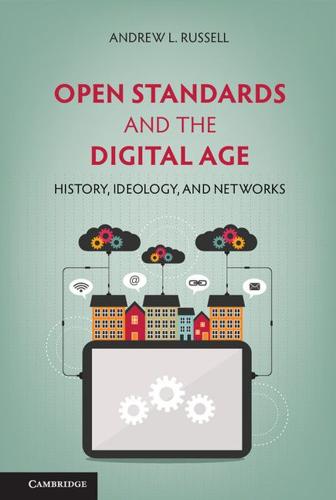
Open Standards and the Digital Age: History, Ideology, and Networks (Cambridge Studies in the Emergence of Global Enterprise)
by
Andrew L. Russell
Published 27 Apr 2014
Britez, eds., Open Education and Education for Openness (Rotterdam, The Netherlands: Sense Publishers, 2008). 2 Barack Obama, “Transparency and Openness in Government,” The White House, http://www.whitehouse.gov/open (accessed August 19, 2010). 3 Lewis Mumford, “Authoritarian and Democratic Technics,” Technology & Culture 5 (1964): 1–8. See also David E. Nye, “Shaping Communication Networks: Telegraph, Telephone, Computer,” Social Research 64 (1997): 1067–1091. 4 Manuel Castells, The Rise of the Network Society (Cambridge, MA: Blackwell Publishers, 1996); Thomas L. Friedman, The World Is Flat: A Brief History of the Twenty-First Century (New York: Farrar, Straus and Giroux, 2005); Louis Galambos, “Recasting the Organizational Synthesis: Structure and Process in the Twentieth and Twenty-First Centuries,” Business History Review 79 (2005): 1–37; Louis Galambos, The Creative Society – And the Price Americans Paid for It (New York: Cambridge University Press, 2012); Alfred E.
…
Illusions of a Borderless World (New York: Oxford University Press, 2006); Evgeny Morozov, The Net Delusion: The Dark Side of Internet Freedom (New York: Public Affairs, 2011); Stanley Fish, “Anonymity and the Dark Side of the Internet,” January 3, 2011, http://opinionator.blogs.nytimes.com/2011/01/03/anonymity-and-the-dark-side-of-the-internet (accessed January 17, 2012); Nathan Ensmenger, “The Digital Construction of Technology,” Technology & Culture 53 (2012): 753–776. 5 Friedman, The World Is Flat, 187. 6 Global Times, “The Real Stake in the ‘Free Flow of Information,’” January 22, 2010, http://opinion.globaltimes.cn/editorial/2010–01/500324.html (accessed January 17, 2012). 7 Thomas P. Hughes, “The Evolution of Large Technological Systems,” in Wiebe E. Bijker, Thomas P. Hughes, and Trevor Pinch, eds., The Social Construction of Technological Systems: New Directions in the Sociology and History of Technology (Cambridge, MA: The MIT Press, 1989), 51; Langdon Winner, “Do Artifacts Have Politics?”
…
Ensmenger, Nathan. “The Digital Construction of Technology.” Technology & Culture 53 (2012): 753–776. Flichy, Patrice. The Internet Imaginaire. Cambridge, MA: The MIT Press, 2007. Foucault, Michel. “What Is Critique?” In David Ingram, ed. The Political. Malden, MA: Blackwell, 1978. Friedman, Thomas L. The World Is Flat: A Brief History of the Twenty-First Century. New York: Farrar, Straus and Giroux, 2005. Froomkin, A. Michael. “Habermas@Discourse.Net: Toward a Critical Theory of Cyberspace.” Harvard Law Review 116 (2003): 749–873. Galambos, Louis. “Technology, Political Economy, and Professionalization: Central Themes of the Organizational Synthesis.”

Losing Control: The Emerging Threats to Western Prosperity
by
Stephen D. King
Published 14 Jun 2010
The proportionate economic impact of immigration has, thus, faded over the last half-century. 2. Source: US Census Bureau. 3. The range of arguments is vast. Supporters of globalization include Martin Wolf with his Why Globalization Works (Yale University Press, New Haven, 2004) and Thomas Friedman’s The World is Flat: A Brief History of the 21st Century (Farrar, Strauss, Giroux, New York, 2005). Its detractors – using varying arguments – include Joseph Stiglitz (Globalization and its Discontents [Penguin, London, 2003]), Naomi Klein (No Logo [Fourth Estate, New York, 1999]) and Noreena Hertz (The Silent Takeover [The Free Press, New York, 2002]).
…
-J., Kicking Away the Ladder: Development Strategy in Historical Perspective, Anthem, London, 2002 ———, Bad Samaritans: The Myth of Free Trade and the Secret History of Capitalism, Bloomsbury, London, 2008 Clark, G., A Farewell to Alms: A Brief Economic History of the World, Princeton University Press, Princeton, 2007 Collier, P., The Bottom Billion: Why the Poorest Countries are Failing and What Can Be Done About It, Oxford University Press, Oxford, 2006 Davies, N., Europe: A History, Oxford University Press, Oxford, 1996 Desai, M., Marx’s Revenge: The Resurgence of Capitalism and the Death of Statist Socialism, Verso, London, 2002 Eichengreen, B., Globalizing Capital: A History of the International Monetary System, Princeton University Press, Princeton, 1996 ———, Sterling’s Past, Dollar’s Future: Historical Perspectives on Reserve Currency Competition, Tawney Lecture, Economic History Society, Leicester, April 2005 ———, Global Imbalances and the Lessons from Bretton Woods, The Cairoli Lectures, MIT Press, Cambridge MA, 2007 Federal Reserve Bank of Kansas, New Challenges for Monetary Policy, Proceedings, Jackson Hole, WY, 1999 Ferguson, N., Colossus: The Rise and Fall of the American Empire, Allen Lane, London, 2004 ———, The Ascent of Money: A Financial History of the World, Allen Lane, London, 2008 Findlay, R. and O’Rourke, K., Power and Plenty: Trade, War, and the World Economy in the Second Millennium, Princeton University Press, Princeton and Oxford, 2007 Friedman, B., The Moral Consequences of Economic Growth, Alfred A. Knopf, New York, 2005 Friedman, M., A Theory of the Consumption Function, Princeton University Press, Princeton, 1957 Friedman, T., The Lexus and the Olive Tree, Farrar, Strauss & Giroux, New York, 1999 ———, The World is Flat: A Brief History of the 21st Century, Farrar, Strauss, Giroux, New York, 2005 Fukuyama, F., The End of History and the Last Man, Free Press, New York, 1992 Gibson, C. and Lennon, E., Historical Census Statistics on the Foreign-born Population of the United States: 1850–1990, Population Division Working Paper No. 29, US Bureau of the Census, Washington DC, 1999 Gohkale, J. and Smetters, K., Fiscal and Generational Imbalances: New Budget Measures for New Budget Priorities, Policy Discussion Paper No. 5, Federal Reserve Bank of Cleveland, OH, 2003 Greenspan, A., The Challenge of Central Banking in a Democratic Society, Federal Reserve, Washington DC, 1996 ———, The Age of Turbulence: Adventures in a New World, Allen Lane, London, 2007 Headrick, D.R., Tools of Empire: Technology and European Imperialism in the Nineteenth Century, Oxford University Press, Oxford, 1981 Heilbroner, R., The Worldly Philosophers: The Lives, Times and Ideas of the Great Economic Thinkers, 7th edn, Simon & Shuster, New York, 1999 Hertz, N., The Silent Takeover, The Free Press, New York, 2002 Hobbes, T., ed Gaskin, J., Leviathan, Oxford University Press, Oxford, 2008 House of Commons Treasury Committee, Globalisation: Prospects and Policy Responses, Fourteenth Report of Session, London, 2006/7 Hume, D.
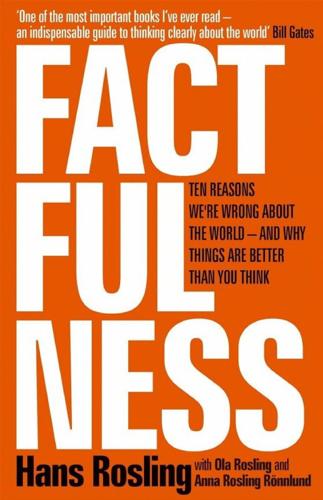
Factfulness: Ten Reasons We're Wrong About the World – and Why Things Are Better Than You Think
by
Hans Rosling
,
Ola Rosling
and
Anna Rosling Rönnlund
Published 2 Apr 2018
Smil describes the slow transition away from fossil fuels and also debunks myths about food production, innovation, population, and mega-risks. See gapm.io/tene. Future consumers. For an interactive visualization of the graphs on page 138, see gapm.io/incm. Two great books on this are The Post-American World by Fareed Zakaria (2008) and The World Is Flat by Thomas L. Friedman (2005). CO2 per capita. The data on CO2 per capita for China, the United States, Germany, and India comes from CDIAC. See gapm.io/tco2. Chapter Six: The Generalization Instinct Graph: Difference within Africa. For an interactive version of the graph on page 159, see gapm.io/edafr.
…
London: Government Office for Science, 2011. gapm.io/xcli17. FRD. Ofcansky, Thomas P., Laverle Bennette Berry, and Library of Congress Federal Research Division. Ethiopia: A Country Study. Washington, DC: Federal Research Division, Library of Congress, 1993. gapm.io/xfdi. Friedman, Thomas L. The World Is Flat: A Brief History of the Twenty-first Century. New York: Farrar, Straus & Giroux, 2005. Gallup[1]. McCarthy, Justin. “More Americans Say Crime Is Rising in U.S.” Gallup News, October 22, 2015. Accessed December 1, 2017. http://news.gallup.com/poll/186308/americans-say-crime-rising.aspx. Gallup[2].

The Digital Party: Political Organisation and Online Democracy
by
Paolo Gerbaudo
Published 19 Jul 2018
Manuel Castells, The rise of the network society, Vol. 12 (New York: John Wiley & Sons, 2011). 19. Richard S. Katz and Peter Mair, ‘Changing models of party organization and party democracy: the emergence of the cartel party’, Party Politics 1, no.1 (1995): 5–28, p.23. 20. Michael Hardt and Antonio Negri, Empire (Cambridge, MA: Harvard University Press, 2001). 21. Thomas L. Friedman, The world is flat: a brief history of the twenty-first century (New York: Macmillan, 2005). 22. Richard S. Katz and Peter Mair, eds, How parties organize: change and adaptation in party organizations in Western democracies (London; Thousand Oaks, CA: Sage, 1994), p.3. 23. P.C. Schmitter, ‘Intermediaries in the consolidation of neo-democracies: the role of parties, associations and movements.’
…
Black skin, white masks. New York: Grove Press, 2008. Floridia, Antonio e Rinaldo Vignati, ‘Deliberativa, diretta o partecipativa?’, Quaderni di Sociologia 65 (2014): 51–74. Foti, Alex. General theory of the precariat: great recession, revolution, reaction. Theory on Demand, 2017. Friedman, Thomas L. The world is flat: a brief history of the twenty-first century. New York: Macmillan, 2005. Fuchs, D. Participatory, liberal and electronic democracy. In T. Zittel and D. Fuchs, eds, Participatory democracy and political participation: can participatory engineering bring citizens back in? (pp. 29–54). London: Routledge, 2007.
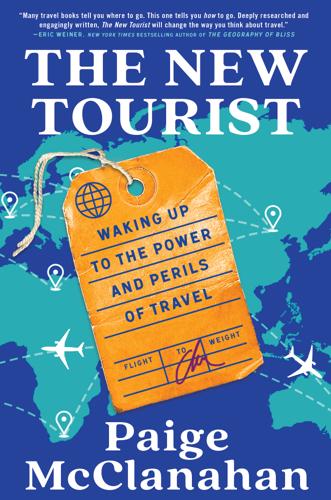
The New Tourist: Waking Up to the Power and Perils of Travel
by
Paige McClanahan
Published 17 Jun 2024
Friedman wondered. But as the plane started to board, he looked around and saw the answer: many of his fellow passengers were clutching crumpled boarding passes that they had downloaded and printed at home—long before they arrived at the airport. Friedman recounted the story in his bestselling book The World Is Flat, which was published the following year: “ ‘Friedman,’ I said to myself, looking at this scene, ‘you are so twentieth-century.’… In Globalization 2.0 the e-ticket machine replaced the ticket agent. In Globalization 3.0 you are your own ticket agent.”1 Friedman used the anecdote, among many others, to illustrate the power and reach of the forces that he saw “flattening the world” at the dawn of the twenty-first century: the end of the Cold War and the domination of free-market capitalism; the creation of a single global market; the spread of internet browsing, workflow software, open-sourcing, outsourcing, and offshoring; the rise of global supply-chaining and logistics management; and the power of services offered by Google, Skype, and—yes—Napster (remember: this was twenty years ago) to transform people’s everyday lives.
…
Gore, “Tourism Promo Campaign Helped the Industry,” Tourism Review News, December 27, 2010. 22 Leslie Koch, “The Value of Blogger Press Trips: Interview with Jordan Tourism Board’s Managing Director,” BIIB Blog, Bridge to Bhutan, May 18, 2011, https://bridgetobhutan.com/blog/2011/05/18/the-value-of-blogger-press-trips/#more-1144. 23 Keith Jenkins, author Zoom interview, May 2023. 24 “Influencer Marketing Market Size (2016–2023),” influencer marketing hub, Oberlo, https://www.oberlo.com/statistics/influencer-marketing-market-size. 25 “Influencing Travel: How to Turn Lookers into Bookers,” Stackla, 2019, https://www.nosto.com/wp-content/uploads/2019/03/Travel-Ebook-Digital-US_FINAL.pdf. 26 Expedia Group Media Solutions, “Gen Z Travelers: More Open to Influence and Inspiration Than Other Generations,” Business Wire, November 14, 2018, https://www.businesswire.com/news/home/20181114005361/en/Gen-Travelers-Open-Influence-Inspiration-Generations. 27 Donald Leadbetter, author Zoom interview, May 2023. 28 Elle, “Elle’s 30 Places to Instagram in 2023,” June 28, 2023, https://www.elle.com/culture/travel-food/a27561982/best-instagram-spots/. 29 Philip Schofield, “Holiday Destination Chosen Based on How ‘Instagrammable’ the Holiday Pics Will Be,” Schofields Insurance, April 3, 2017, https://www.schofields.ltd.uk/blog/5123/two-fifths-of-millennials-choose-their-holiday-destination-based-on-how-instagrammable-the-holiday-pics-will-be/. 30 Philip Schofield, “The New Travelling Generation: Gen Zs Mark TikTok as Their Top Holiday Influencer,” Schofields Insurance, February 3, 2023, https://www.schofields.ltd.uk/blog/6850/gen-z-travel-influence/. 31 Sally French, “This Is the Most Instagrammed Place in the World,” New York Post, May 10, 2017, https://nypost.com/2017/05/10/this-is-the-most-instagrammed-place-in-the-world/. 32 Sean P. Smith, “Instagram Abroad: Performance, Consumption and Colonial Narrative in Tourism,” Postcolonial Studies 21, no. 2 (April 2018): 1–20. Chapter Three Tourism Comes to Power 1 Thomas L. Friedman, The World Is Flat (New York: Farrar, Straus and Giroux, 2005), 173–74. 2 Joseph S. Nye Jr., Soft Power: The Means to Success in World Politics, Kindle ed. (New York: PublicAffairs, 2004), 4. 3 Ibid., 17. 4 Elizabeth Becker, Overbooked: The Exploding Business of Travel and Tourism (2013; New York: Simon & Schuster, 2016), 1–2, 43–75, 87–121, 207–87. 5 Simon Parker, “The Leaving of Liverpool: Managed Decline and the Enduring Legacy of Thatcherism’s Urban Policy,” British Politics and Policy blog, London School of Economics and Political Science, January 17, 2019, https://blogs.lse.ac.uk/politicsandpolicy/the-leaving-of-liverpool/#Author. 6 My understanding of Liverpool’s evolution and the development of its tourism industry was also informed by in-person interviews with Claire McColgan, director of culture for the Liverpool City Council, and Chris Brown, the former director of Marketing Liverpool; I conducted both interviews in person in Liverpool in June 2023.
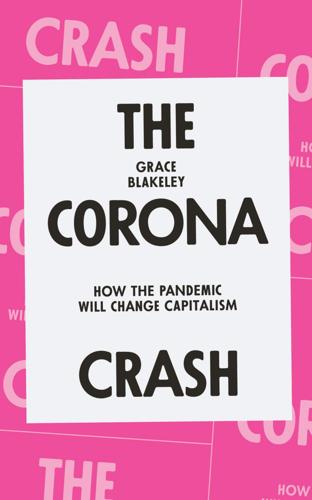
The Corona Crash: How the Pandemic Will Change Capitalism
by
Grace Blakeley
Published 14 Oct 2020
, Guardian, 21 April 2020; Jonathan Tepper, ‘Federal Reserve Has Encouraged Moral Hazard on a Grand Scale’, Financial Times, 13 April 2020. 21 Robert Brenner, ‘Escalating Plunder’, New Left Review 123, May-June 2020, pp. 6-9. 22 Geoff Mann, In the Long Run We Are All Dead: Keynesianism, Political Economy, and Revolution London: Verso, 2017. 23 Ellen Meiksins Wood, Democracy Against Capitalism: Renewing Historical Materialism, London: Verso, 2016. 24 Gillian Tett, ‘Why the US Federal Reserve Turned Again to Blackrock for Help’, Financial Times, 26 March 2020; Michael Bird, ‘European Central Bank Hires Blackrock to Help with Loan Purchase Programme’, City A.M., 27 August 2014, cityam.com. 3 The New Imperialism 1 Francis Fukuyama, ‘The End of History?’, National Interest, no. 16 (Summer 1989): 3–18, and The End of History and the Last Man, New York: Free Press, 1992; Thomas Friedman, The World Is Flat: A Brief History of the Twenty-First Century, New York: Farrar, Strauss, and Giroux, 2005. 2 Karl Marx, Capital: A Critique of Political Economy, Vol. 1, trans. by Ben Fowkes, London: Penguin, 1990, p. 450. 3 There is a long-standing debate in Marxist literature about the class position of the manager: see Nicos Poulantzas, Classes in Contemporary Capitalism, London: Verso, 1975; John Ehrenreich and Barbara Ehrenreich, ‘The Professional-Managerial Class’, in Between Labour and Capital, ed.

Your Computer Is on Fire
by
Thomas S. Mullaney
,
Benjamin Peters
,
Mar Hicks
and
Kavita Philip
Published 9 Mar 2021
It was meant to do for white-collar labor what the assembly line had done for the automobile industry: namely, to transform a system in which skilled human labor was central into one in which low-wage machine operators could accomplish the same basic objective.39 And so let us return again to the central conceit of this historical thought experiment: what happens when we consider the Cloud as a factory, and not as a disembodied computational device? 1. We restore a sense of place to our understanding of the information economy. Despite repeated claims that “distance is dead,” “the world is flat,” and that geography (and therefore the nation-state) is irrelevant, cyberspace is surprisingly local.40 Ironically, this is perhaps most true in Silicon Valley, the place that makes the technologies that ostensibly make location irrelevant, and yet where geographical proximity is so obviously essential that firms and individuals will go to great expense and inconvenience to live there.
…
Nathan Ensmenger, The Computer Boys Take Over: Computers, Programmers, and the Politics of Technical Expertise (Cambridge, MA: MIT Press, 2010). 40. Frances Cairncross, The Death of Distance: How the Communications Revolution Is Changing Our Lives (Boston: Harvard Business Review Press, 2001); Thomas L. Friedman, The World Is Flat: A Brief History of the Twenty-First Century (New York: Farrar, Straus and Giroux, 2006); Ray Kurzweil, The Singularity Is Near: When Humans Transcend Biology (New York: Viking, 2016); John Mark Newman, “The Myth of Free,” George Washington Law Review 86, no. 2 (October 2016), 513–586. 41.
…
The students mostly followed the disciplinary framework of the training initiative and aspired to get jobs in the service economy in call centers, metro stations, malls, government offices, etc. Inside the center and in daily interactions with other women in the neighborhood, these moments of refusal indicated a resistance to the rigid, individualistic training discourses. Conclusion In his 2005 book The World Is Flat, Thomas Friedman applauds the “flattening” impact of information and communication technologies on economic and social inequalities. A triumphant Friedman declares, “I was in Bangalore, India, the Silicon Valley of India, when I realized that the world was flat.” In the documentary Other Side of Outsourcing, Friedman represents a bustling India in which young people have achieved unprecedented mobility because of their jobs in the technology industry.

The Rise and Fall of the Neoliberal Order: America and the World in the Free Market Era
by
Gary Gerstle
Published 14 Oct 2022
The iPhone gave IT innovators and their venture capital supporters everywhere a big boost. Google, meanwhile, was rapidly universalizing internet access and use.36 Thomas Friedman, the prominent New York Times columnist, caught the hopeful IT spirit of the Bush years in his bestselling book The World Is Flat, published in 2005 in the midst of the Iraqi occupation. The book’s techno-utopianism echoed that of Clinton-era cyberspace enthusiasts Esther Dyson, George Gilder, and Alvin Toffler. But if the latter group was mostly focused on the cybernetic revolution as an American event, Friedman was struck by its global reverberations.
…
On the turn to private soldiers and contractors, see Jeremy Scahill, Blackwater: The Rise of the World’s Most Powerful Mercenary Army (New York: PublicAffairs, 2007); and Jeremy Scahill, Dirty Wars: The World Is a Battlefield (New York: PublicAffairs, 2013). 35.On the turn to an all-volunteer army, see Beth Bailey, America’s Army: Making the All-Volunteer Force (Cambridge, MA: Harvard University Press, 2009). 36.On Bush’s neoliberal policies, see John Robert Greene, The Presidency of George W. Bush (Lawrence: University Press of Kansas, 2021); Peter Baker, Days of Fire: Bush and Cheney in the White House (New York: Doubleday, 2013). 37.Thomas L. Friedman, The World Is Flat: A Brief History of the Twenty-First Century (New York: Farrar, Straus and Giroux, 2005), 5; see also Thomas L. Friedman, The Lexus and the Olive Tree: Understanding Globalization (New York: Random House, 1999). 38.Thomas L. Friedman, “Three Cheers for Pluralism over Separatism,” New York Times, September 20, 2014, https://www.nytimes.com/2014/09/21/opinion/sunday/thomas-l-friedman-three-cheers-for-pluralism-over-separatism.html, accessed August 31, 2021. 39.Gary Gerstle, “Minorities, Multiculturalism, and the Presidency of George W.
…
autoworkers strike (1936–1937), 121–22 classical liberalism of, 6–7 congressional majorities under, 287–88 election wins, 19–20, 21–22 faith and politics, 27 Great Depression impact on, 82 Johnson admiration for, 53 Keynesianism of, 22–23 new liberalism of, 83–84, 86 racial injustice tensions, 49, 286–87 Reagan admiration for, 116 realpolitik and, 27 Soviet Union and, 35–36 Roosevelt, Theodore, 80–82 Röpke, Wilhelm, 86–87, 92–93 Rothbard, Murray N., 102–3, 109 Rougier, Louis, 86–87 Rubin, Robert, 157–58, 224–25, 258 Rumsfeld, Donald, 196, 197, 205 Russian Revolution (1917), 10, 29, 82–83 Salomon Brothers, 111–12 San Francisco General Strike (1934), 23 Sanders, Bernie, 1, 230, 254–62, 278, 279 Santelli, Rick, 240 Saudi Arabia, 60 Savio, Mario, 8–9, 327n.60, See also Free Speech Movement Scalia, Antonin, 124 Schneider, Steven, 60–61 Schumer, Charles, 178 Second Reconstruction, 53–54 Second Wave economy, 160–61 Securities Act (1933), 22 Securities and Exchange Commission (SEC), 22, 217 Securities Exchange Act (1934), 22 securitization process of mortgages, 212 September 11, 2001 attacks, 189, 191–205 Shiite Muslims, 203 The Shock Doctrine (Klein), 201 Silicon Valley, 104–5, 164, 171–73, 176–77, 206–7 Simena, Kyrsten, 287–88 Simon, William, 111–12 sit-down strikes (1936–1937), 24 Sklar, Martin, 103 slaves/slavery legacy, 79 Smith, Adam, 76–77, 202 social democracy, 6–7, 34–35 social insurance, 81–82, 85 social security, 25, 43–44, 45, 146, 205–6, 238–39, 293 social welfare, 63, 124–25, 179, 226–27 socialism, 30–31, 79–80. see also radicalism and Sanders, Bernie Souter, David, 182 Soviet Union atomic bomb detonation, 37 dissolution of, 141–46 five-year plan of Stalin, 31 Great Depression impact on, 31–34 Khrushchev and, 44–45, 69 Kitchen Debate, 44–45 neoliberalism and, 10, 11 Reagan and, 116–17 Red Scare, 37 socialism of, 30–31 Stalin, Joseph, 31, 33–34 US domestic policy and, 29 US military build-up against, 129–32 US rivalry, 49–50 World War II impact on, 33–35 Sowell, Thomas, 133–34 Spencer, Herbert, 80 “stagflation,” 2. see also Misery Index Stalin, Joseph, 31, 33–34 steel industry, 62 Steffens, Lincoln, 168–69 Stiglitz, Joseph, 158–59, 165, 171 Strategic Defense Initiative, 129–30, 142 structural racism, 283, 287 Students for a Democratic Society, 100 subprime mortgages, 212–13, 214, 217 Summers, Lawrence, 158–59, 215–16, 258, 284 Sunni Muslims, 199–200, 203 Sunrise Movement, 278–79 Sunstein, Cass, 102 Taft, Robert, 28, 38–41 Taliban, 193 Tarbell, Ida, 168–69 Taylor, Keeanga-Yamahtta, 264 Taylor, Frederick Winslow, 31 Tea Party, 230, 240–43 Telecommunications Act (1996), 164, 165–73, 181 Tennessee Valley Authority, 85 Thatcher, Margaret, 132–33, 177–78 The Apprentice (TV show), 244 Thiel, Peter, 160 Third Wave economy, 160–61, 162–63, 170–71 Third World, 50, 139, 141 thought collective, 9, 73–74, 87–88 Thurmond, Strom, 117–18 Thurow, Lester, 137 A Time for Truth (Simon), 111–12 Time Magazine, 131 Time Warner, 172 Tlaib, Rashida, 279 Toffler, Alvin, 160–61, 162–63 totalitarianism, 10–11, 35–36 tough-on-crime bills (1986, 1988), 131 trade unions, 98–99, 146–47. see also labor unions and organized labor Trans-Pacific Partnership (TPP), 271 Treaty of Detroit, 24–25, 41–42, 56–57, 112 Treaty of Versailles, 30 Troubled Asset Relief Program (TARP), 220–21 Truman, Harry, 24–25, 35–36, 40–41 Trump, Donald authoritarianism of, 2–3, 270, 277–78, 289 Covid-19 pandemic, 272, 279–81 election loss of, 288–89 election of, 1, 265–67 ethnonationalism of, 1, 208–9, 243–44, 275–76, 277 populism of, 1, 208–9, 243–44, 248, 251, 282–83 presidency of, 268–77 rise of, 230, 243–51 Tsongas, Paul E., 136–37, 138, 150–51 Turner Broadcasting System, 172 Twitter, 172–73, 279, 292–93 two-income households, 147 Uber, 238–39, 292–93 UN Security Council, 194–95 The Underclass (Auletta), 131–32 underclass concept, 131–32 undocumented migrants, 275 unemployment insurance, 22–23, 43–44, 45, 146 unemployment among minorities, 130–31 unemployment rates, 21, 150–51, 221–22 United Auto Workers (UAW), 24–25, 32–33, 41–42 corporate decision-making, failure to get access to, 24–25 health care plan, 24–25 universalism, 30 US Constitution, 75–76, 98 US Justice Department, 51 Vanderbilt, Cornelius, 168–69 Viacom, 172 Viet Cong, 55 Viet Minh, 54–55 Vietnam War, 48, 54–56 Voting Rights Act (1965), 53–54 Walker, Scott, 235 Wall Street Journal, 109–10, 275 Wall Street reform, 173–78 Wallace, George, 117–18, 119 Wallace, Henry, 35–36 war on crime, 185 war on drugs, 184–85 Warren, Earl, 50–51, 119–20, 123–24 Warren, Elizabeth, 254–55, 279 Washington, George, 223, 224–25 Washington Center for Equitable Growth, 278–79 Washington Consensus, 9, 156–57, 177 Washington Mutual, 220–21 Washington Post, 108–9 Watergate scandal, 64–65 Wealth and Poverty (Gilder), 109, 162–63 weapons of mass destruction (WMDs), 193, 194, 195 Weisselberg, Allan, 247 Weyrich, Paul, 108–9 White, Micah, 251 White Collar (Mills), 95–96 white Protestant voters, 20–21 white supremacy, 27, 48–49 white working-class distress, 231–34 Whole Earth Catalog, 103–4 Whyte, William H., 95–96 Williams, Ashley, 264 Williams, William Appleman, 103 Wilson, Woodrow, 30–31, 53, 80–82 Wired, 162–63 Wolfowitz, Paul, 195–96 Works Progress Administration, 21–22 World Bank (WB), 9, 57–58 The World Is Flat (Friedman), 206–7 World Trade Organization (WTO), 156–57, 177, 244–45 World War I, 9 World War II, 25, 28, 33–35, 48–49 World Wrestling Entertainment (WWE), 247–48, 249 Xi Jinping, 276 Yellen, Janet, 291 “Y2K” bug, 189–90 Yom Kippur War, 60. see also Arab Israeli War Young Americans for Freedom, 100 Zimmerman, George, 262–63
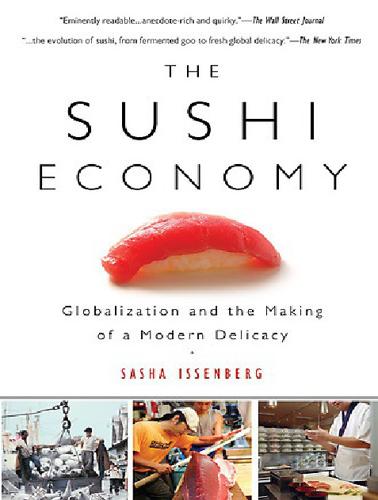
The Sushi Economy: Globalization and the Making of a Modern Delicacy
by
Sasha Issenberg
Published 1 Jan 2007
“leak proof boxes”: “Moving Off the Docks; Technology Transforms Once-Parochial xiii Seafood Business Into Global Enterprise,” by Dina ElBoghdady, Washington Post, January 10, 2005. xvi “Tokyo’s pantry”: Bestor. “strongest feelings have been reserved for xviii McDonald’s”: The global wars over McDonald’s are recounted in Schlosser. “Golden Arches Theory”: Friedman outlines the theory in The Lexus and the Olive Tree xviii and recapped the Serbia episode in The World Is Flat. “Jihad vs. McWorld”: Barber first presented xix his argument in “Jihad vs. McWorld, The Atlantic , March 1992. “Sushi Belt”: White’s comments were xxi published on his “Urban Notebook” blog on Governing.com. “after studying abroad in Chicago”: The story of Rainbow Roll Sushi is recounted in xxiii “Sushi Comes Home, With Cream Cheese and Chili,” by Howard W.
…
Washington, D.C.: Island Press/Shearwater Books, 2003. Frieden, Jeffry A. Global Capitalism: Its Fall and Rise in the Twentieth Century. New York: Norton, 2006. Friedman, Thomas L. The Lexus and the Olive Tree: Understanding Globalization. New York: Farrar, Straus & Giroux, 1999. Friedman, Thomas L. The World Is Flat: A Brief History of the TwentyFirst Century. New York: Farrar, Straus & Giroux, 2005. Froud, Nina. Cooking the Japanese Way. London: Spring Books, 1963. Gold, Jonathan. Counter Intelligence: Where to Eat in the Real Los Angeles. New York: St. Martin’s, 2000. Greider, William. One World, Ready or Not: The Manic Logic of Global Capitalism.
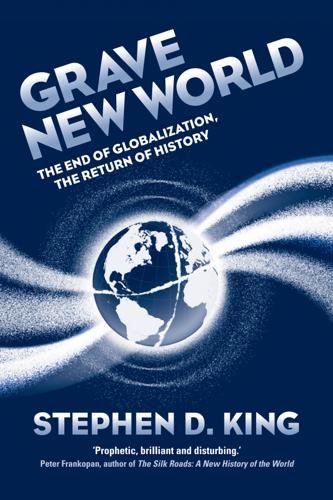
Grave New World: The End of Globalization, the Return of History
by
Stephen D. King
Published 22 May 2017
NOTES INTRODUCTION: THE ANDALUCÍAN SHOCK 1.The Americans themselves were no strangers to imperial activities in the nineteenth century: in 1812, Washington declared war on Great Britain with the aim of taking control of Canada (in return, the British burnt down the White House) while the 1898 Spanish–American War concluded with the Treaty of Paris, which handed the Philippines over from Spanish to American control. Meanwhile, the Mexican–American War beginning in 1846 led to the American annexation of California. 2.See, most obviously, T. Friedman, The World is Flat: The globalized world in the twenty-first century, Allen Lane, New York, 2005. CHAPTER 1: FALSE PROPHETS, HARSH TRUTHS 1.P. Hartshorn, I Have Seen the Future: A life of Lincoln Steffens, Counterpoint Press, Berkeley, 2011. 2.The Maddison Project, http://www.ggdc.net/maddison/maddison-project/home.htm, 2013 version. 3.G.B.
…
The Rise of the Robots: Technology and the threat of mass unemployment, Oneworld, London, 2015 Frankopan, P. The New Silk Roads, Bloomsbury, London, 2015 Freedom House. ‘Discarding democracy: Return to the iron fist’, available at: https://freedomhouse.org/report/freedom-world-2015/discarding-democracy-return-iron-fist Friedman, T. The World is Flat: The globalized world in the twenty-first century, Allen Lane, New York, 2005 Fukuyama, F. ‘The end of history’, National Interest, 16 (1989) Fukuyama, F. The End of History and the Last Man, Free Press, New York, 1992 Fukuyama, F. Political Order and Political Decay: From the Industrial Revolution to the globalization of democracy, Farrar, Straus and Giroux, New York, 2014 Funke, M., M.
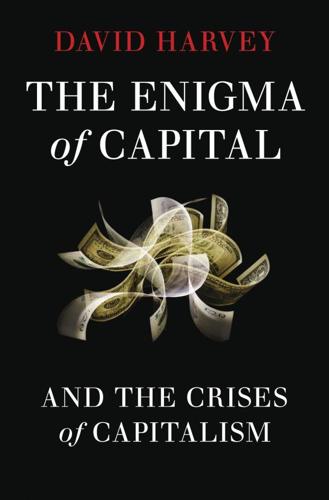
The Enigma of Capital: And the Crises of Capitalism
by
David Harvey
Published 1 Jan 2010
When the architect on the South Korean urban jury said only mental conceptions matter, he was making a very common move doubtless impelled by an understandable desire for simplification. But such simplifications are both unwarranted and dangerously misleading. We are, in fact, surrounded with dangerously oversimplistic monocausal explanations. In his bestselling 2005 book The World is Flat, the journalist Thomas L. Friedman shamelessly espouses a version of technological determinism (which he mistakenly attributes to Marx). Jared Diamond’s Guns, Germs and Steel (1997) argues that the relation to nature is what counts, thus transforming human evolution into a tale of environmental determinism.
…
Index Numbers in italics indicate Figures; those in bold indicate a Table. 11 September 2001 attacks 38, 41–2 subject to perpetual renewal and transformation 128 A Abu Dhabi 222 Académie Française 91 accumulation by dispossession 48–9, 244 acid deposition 75, 187 activity spheres 121–4, 128, 130 deindustrialised working-class area 151 and ‘green revolution’ 185–6 institutional and administrative arrangements 123 ‘mental conceptions of the world’ 123 patterns of relations between 196 production and labour processes 123 relations to nature 123 the reproduction of daily life and of the species 123 slums 152 social relations 123 subject to perpetual renewal and transformation 128 suburbs 150 technologies and organisational forms 123 uneven development between and among them 128–9 Adelphia 100 advertising industry 106 affective bonds 194 Afghanistan: US interventionism 210 Africa civil wars 148 land bought up in 220 neocolonialism 208 population growth 146 agribusiness 50 agriculture collectivisation of 250 diminishing returns in 72 ‘green revolution’ 185–6 ‘high farming’ 82 itinerant labourers 147 subsidies 79 AIG 5 alcoholism 151 Allen, Paul 98 Allende, Salvador 203 Amazonia 161, 188 American Bankers Association 8 American Revolution 61 anarchists 253, 254 anti-capitalist revolutionary movement 228 anti-racism 258 anti-Semitism 62 après moi le déluge 64, 71 Argentina Debt Crisis (2000–2002) 6, 243, 246, 261 Arizona, foreclosure wave in 1 Arrighi, Giovanni: The Long Twentieth Century 35, 204 asbestos 74 Asia Asian Currency Crisis (1997–98) 141, 261 collapse of export markets 141 growth 218 population growth 146 asset stripping 49, 50, 245 asset traders 40 asset values 1, 6, 21, 23, 26, 29, 46, 223, 261 Association of South East Asian Nations (ASEAN) 200 Athabaska tar sands, Canada 83 austerity programmes 246, 251 automobile industry 14, 15, 23, 56, 67, 68, 77, 121, 160–61 Detroit 5, 15, 16, 91, 108, 195, 216 autonomista movement 233, 234, 254 B Baader-Meinhof Gang 254 Bakunin, Michael 225 Balzac, Honoré 156 Bangalore, software development in 195 Bangkok 243 Bank of England 53, 54 massive liquidity injections in stock markets 261 Bank of International Settlements, Basel 51, 55, 200 Bank of New England 261 Bankers Trust 25 banking bail-outs 5, 218 bank shares become almost worthless 5 bankers’ pay and bonuses 12, 56, 218 ‘boutique investment banks’ 12 de-leveraging 30 debt-deposit ratio 30 deposit banks 20 French banks nationalised 198 international networks of finance houses 163 investment banks 2, 19, 20, 28, 219 irresponsible behaviour 10–11 lending 51 liquidity injections by central banks vii, 261 mysterious workings of central banks 54 ‘national bail-out’ 30–31 property market-led Nordic and Japanese bank crises 261 regional European banks 4 regular banks stash away cash 12, 220 rising tide of ‘moral hazard’ in international bank lending practices 19 ‘shadow banking’ system 8, 21, 24 sympathy with ‘Bonnie and Clyde’ bank robbers 56 Baran, Paul and Sweezey, Paul: Monopoly Capital 52, 113 Barings Bank 37, 100, 190 Baucus, Max 220 Bavaria, automotive engineering in 195 Beijing declaration (1995) 258 Berlin: cross-border leasing 14 Bernanke, Ben 236 ‘Big Bang’ (1986) 20, 37 Big Bang unification of global stock, options and currency trading markets 262 billionaire class 29, 110, 223 biodiversity 74, 251 biomass 78 biomedical engineering 98 biopiracy 245, 251 Birmingham 27 Bismarck, Prince Otto von 168 Black, Fischer 100 Blackstone 50 Blair, Tony 255 Blair government 197 blockbusting neighbourhoods 248 Bloomberg, Mayor Michael 20, 98, 174 Bolivarian movement 226, 256 bonuses, Wall Street 2, 12 Borlaug, Norman 186 bourgeoisie 48, 89, 95, 167, 176 ‘boutique investment banks’ 12 Brazil automobile industry 16 capital flight crisis (1999) 261 containerisation 16 an export-dominated economy 6 follows Japanese model 92 landless movement 257 lending to 19 the right to the city movement 257 workers’ party 256 Bretton Woods Agreement (1944) 31, 32, 51, 55, 171 British Academy 235 British empire 14 Brown, Gordon 27, 45 Budd, Alan 15 Buenos Aires 243 Buffett, Warren 173 building booms 173–4 Bush, George W. 5, 42, 45 business associations 195 C California, foreclosure wave in 1, 2 Canada, tightly regulated banks in 141 ‘cap and trade’ markets in pollution rights 221 capital bank 30 centralisation of 95, 110, 113 circulation of 90, 93, 108, 114, 116, 122, 124, 128, 158, 159, 182, 183, 191 cultural 21 devalued 46 embedded in the land 191 expansion of 58, 67, 68 exploitations of 102 export 19, 158 fixed 191, 213 industrial 40–41, 56 insufficient initial money capital 47 investment 93, 203 and labour 56, 88, 169–70 liquid money 20 mobility 59, 63, 64, 161–2, 191, 213 and nature 88 as a process 40 reproduction of 58 scarcity 50 surplus 16, 28, 29, 50–51, 84, 88, 100, 158, 166, 167, 172, 173, 174, 206, 215, 216, 217 capital accumulation 107, 108, 123, 182, 183, 191, 211 and the activity spheres 128 barriers to 12, 16, 47, 65–6, 69–70, 159 compound rate 28, 74, 75, 97, 126, 135, 215 continuity of endless 74 at the core of human evolutionary dynamics 121 dynamics of 188, 197 geographic landscape of 185 geographical dynamics of 67, 143 and governance 201 lagging 130 laws of 113, 154, 160 main centres of 192 market-based 180 Mumbai redevelopment 178 ‘nature’ affected by 122 and population growth 144–7 and social struggles 105 start of 159 capital circulation barriers to 45 continuity of 68 industrial/production capital 40–41 inherently risky 52 interruption in the process 41–2, 50 spatial movement 42 speculative 52, 53 capital controls 198 capital flow continuity 41, 47, 67, 117 defined vi global 20 importance of understanding vi, vii-viii interrupted, slowed down or suspended vi systematic misallocation of 70 taxation of vi wealth creation vi capital gains 112 capital strike 60 capital surplus absorption 31–2, 94, 97, 98, 101, 163 capital-labour relation 77 capitalism and communism 224–5 corporate 1691 ‘creative-destructive’ tendencies in 46 crisis of vi, 40, 42, 117, 130 end of 72 evolution of 117, 118, 120 expansion at a compound rate 45 first contradiction of 77 geographical development of 143 geographical mobility 161 global 36, 110 historical geography of 76, 117, 118, 121, 174, 180, 200, 202, 204 industrial 58, 109, 242 internal contradictions 115 irrationality of 11, 215, 246 market-led 203 positive and negative aspects 120 and poverty 72 relies on the beneficence of nature 71 removal of 260 rise of 135, 192, 194, 204, 228, 248–9, 258 ‘second contradiction of’ 77, 78 social relations in 101 and socialism 224 speculative 160 survival of 46, 57, 66, 86, 107, 112, 113, 116, 130, 144, 229, 246 uneven geographical development of 211, 213 volatile 145 Capitalism, Nature, Socialism journal 77 capitalist creed 103 capitalist development considered over time 121–4 ‘eras’ of 97 capitalist exploitation 104 capitalist logic 205 capitalist reinvestment 110–11 capitalists, types of 40 Carnegie, Andrew 98 Carnegie foundation 44 Carnegie Mellon University, Pittsburgh, Pennsylvania 195 Carson, Rachel: Silent Spring 187 Case Shiller Composite Indices SA 3 Catholic Church 194, 254 cell phones 131, 150, 152 Central American Free Trade Association (CAFTA) 200 centralisation 10, 11, 165, 201 Certificates of Deposit 262 chambers of commerce 195, 203 Channel Tunnel 50 Chiapas, Mexico 207, 226 Chicago Board Options Exchange 262 Chicago Currency Futures Market 262 ‘Chicago School’ 246 Chile, lending to 19 China ‘barefoot doctors’ 137 bilateral trade with Latin America 173 capital accumulation issue 70 cheap retail goods 64 collapse of communism 16 collapse of export markets 141 Cultural Revolution 137 Deng’s announcement 159 falling exports 6 follows Japanese model 92 ‘Great Leap Forward’ 137, 138 growth 35, 59, 137, 144–5, 213, 218, 222 health care 137 huge foreign exchange reserves 141, 206 infant mortality 59 infrastructural investment 222 labour income and household consumption (1980–2005) 14 market closed after communists took power (1949) 108 market forcibly opened 108 and oil market 83 one child per family policy 137, 146 one-party rule 199 opening-up of 58 plundering of wealth from 109, 113 proletarianisation 60 protests in 38 and rare earth metals 188 recession (1997) 172 ‘silk road’ 163 trading networks 163 unemployment 6 unrest in 66 urbanisation 172–3 and US consumerism 109 Chinese Central Bank 4, 173 Chinese Communist Party 180, 200, 256 chlorofluoral carbons (CFCs) 74, 76, 187 chronometer 91, 156 Church, the 249 CIA (Central Intelligence Agency) 169 circular and cumulative causation 196 Citibank 19 City Bank 261 city centres, Disneyfication of 131 City of London 20, 35, 45, 162, 219 class consciousness 232, 242, 244 class inequalities 240–41 class organisation 62 class politics 62 class power 10, 11, 12, 61, 130, 180 class relations, radical reconstitution of 98 class struggle 56, 63, 65, 96, 102, 127, 134, 193, 242, 258 Clausewitz, Carl von 213 Cleveland, foreclosure crisis in 2 Cleveland, foreclosures on housing in 1 Clinton, Bill 11, 12, 17, 44, 45 co-evolution 132, 136, 138, 168, 185, 186, 195, 197, 228, 232 in three cases 149–53 coal reserves 79, 188 coercive laws of competition see under competition Cold War 31, 34, 92 Collateralised Bond Obligations (CBOs) 262 Collateralised Debt Obligations (CDOs) 36, 142, 261, 262 Collateralised Mortgage Obligations (CMOs) 262 colonialism 212 communications, innovations in 42, 93 communism 228, 233, 242, 249 collapse of 16, 58, 63 compared with socialism 224 as a loaded term 259–60 orthodox communists 253 revolutionary 136 traditional institutionalised 259 companies joint stock 49 limited 49 comparative advantage 92 competition 15, 26, 43, 70 between financial centres 20 coercive laws of 43, 71, 90, 95, 158, 159, 161 and expansion of production 113 and falling prices 29, 116 fostering 52 global economic 92, 131 and innovation 90, 91 inter-capitalist 31 inter-state 209, 256 internalised 210 interterritorial 202 spatial 164 and the workforce 61 competitive advantage 109 computerised trading 262 computers 41, 99, 158–9 consortia 50, 220 consumerism 95, 109, 168, 175, 240 consumerist excess 176 credit-fuelled 118 niche 131 suburban 171 containerisation 16 Continental Illinois Bank 261 cooperatives 234, 242 corporate fraud 245 corruption 43, 69 cotton industry 67, 144, 162 credit cards fees vii, 245 rise of the industry 17 credit crunch 140 Credit Default swaps 262 Crédit Immobilièr 54 Crédit Mobilier 54 Crédit Mobilier and Immobilier 168 credit swaps 21 credit system and austerity programmes 246 crisis within 52 and the current crisis 118 and effective demand problem 112 an inadequate configuration of 52 predatory practices 245 role of 115 social and economic power in 115 crises crises of disproportionality 70 crisis of underconsumption 107, 111 east Asia (1997–8) 6, 8, 35, 49, 246 financial crisis of 1997–8 198, 206 financial crisis of 2008 34, 108, 114, 115 general 45–6 inevitable 71 language of crisis 27 legitimation 217 necessary 71 property market 8 role of 246–7 savings and loan crisis (US, 1984–92) 8 short sharp 8, 10 south-east Asia (1997–8) 6, 8, 35, 49, 246 cross-border leasing 142–3 cultural choice 238 ‘cultural industries’ 21 cultural preferences 73–4 Cultural Revolution 137 currency currency swaps 262 futures market 24, 32 global 32–3, 34 options markets on 262 customs barriers 42, 43 cyberspace 190 D Darwin, Charles 120 DDT 74, 187 de-leveraging 30 debt-financing 17, 131, 141, 169 decentralisation 165, 201 decolonisation 31, 208, 212 deficit financing 35, 111 deforestation 74, 143 deindustrialisation 33, 43, 88, 131, 150, 157, 243 Deleuze, Gilles 128 demand consumer 107, 109 effective 107, 110–14, 116, 118, 221, 222 lack of 47 worker 108 Democratic Party (US) 11 Deng Xiaoping 159 deregulation 11, 16, 54, 131 derivatives 8 currency 21 heavy losses in (US) 261 derivatives markets creation of 29, 85 unregulated 99, 100, 219 Descartes, René 156 desertification 74 Detroit auto industry 5, 15, 16, 91, 108, 195, 216 foreclosures on housing in 1 Deutsches Bank 20 devaluation 32, 47, 116 of bank capital 30 of prior investments 93 developing countries: transformation of daily lives 94–5 Developing Countries Debt Crisis 19, 261 development path building alliances 230 common objectives 230–31 development not the same as growth 229–30 impacts and feedbacks from other spaces in the global economy 230 Diamond, Jared: Guns, Germs and Steel 132–3, 154 diasporas 147, 155, 163 Dickens, Charles: Bleak House 90 disease 75, 85 dispossession anti-communist insurgent movements against 250–51 of arbitrary feudal institutions 249 of the capital class 260 China 179–80 first category 242–4 India 178–9, 180 movements against 247–52 second category 242, 244–5 Seoul 179 types of 247 under socialism and communism 250 Domar, Evsey 71 Dongguan, China 36 dot-com bubble 29, 261 Dow 35,000 prediction 21 drug trade 45, 49 Dubai: over-investment 10 Dubai World 174, 222 Durban conference on anti-racism (2009) 258 E ‘earth days’ 72, 171 east Asia crash of 1997–8 6, 8, 35, 49, 246 labour reserves 64 movement of production to 43 proletarianisation 62 state-centric economies 226 wage rates 62 eastern European countries 37 eBay 190 economic crisis (1848) 167 economists, and the current financial crisis 235–6 ecosystems 74, 75, 76 Ecuador, and remittances 38 education 59, 63, 127, 128, 221, 224, 257 electronics industry 68 Elizabeth II, Queen vi-vii, 235, 236, 238–9 employment casual part-time low-paid female 150 chronic job insecurity 93 culture of the workplace 104 deskilling 93 reskilling 93 services 149 Engels, Friedrich 89, 98, 115, 157, 237 The Housing Question 176–7, 178 Enron 8, 24, 52, 53, 100, 261 entertainment industries 41 environment: modified by human action 84–5 environmental movement 78 environmental sciences 186–7 equipment 58, 66–7 equity futures 262 equity index swaps 262 equity values 262 ethanol plants 80 ethnic cleansings 247 ethnicity issues 104 Eurodollars 262 Europe negative population growth in western Europe 146 reconstruction of economy after Second World War 202 rsouevolutions of 1848 243 European Union 200, 226 eastern European countries 37 elections (June 2009) 143 unemployment 140 evolution punctuated equilibrium theory of natural evolution 130 social 133 theory of 120, 129 exchange rates 24, 32, 198 exports, falling 141 external economies 162 F Factory Act (1848) 127 factory inspectors 127 ‘failed states’ 69 Fannie Mae (US government-chartered mortgage institution) 4, 17, 173, 223 fascism 169, 203, 233 Federal Deposit Insurance Corporation (FDIC) 8 rescue of Continental Illinois Bank 261 Federal Reserve System (the Fed) 2, 17, 54, 116, 219, 236, 248 and asset values 6 cuts interest rates 5, 261 massive liquidity injections in stock markets 261 rescue of Continental Illinois Bank 261 feminists, and colonisation of urban neighbourhoods 248 fertilisers 186 feudalism 135, 138, 228 finance capitalists 40 financial institutions awash with credit 17 bankruptcies 261 control of supply and demand for housing 17 nationalisations 261 financial services 99 Financial Times 12 financialisation 30, 35, 98, 245 Finland: Nordic cris (1992) 8 Flint strike, Michigan (1936–7) 243 Florida, foreclosure wave in 1, 2 Forbes magazine 29, 223 Ford, Henry 64, 98, 160, 161, 188, 189 Ford foundation 44, 186 Fordism 136 Fordlandia 188, 189 foreclosed businesses 245 foreclosed properties 220 fossil fuels 78 Foucault, Michel 134 Fourierists 168 France acceptance of state interventions 200 financial crisis (1868) 168 French banks nationalised 198 immigration 14 Paris Commune 168 pro-natal policies 59 strikes in 38 train network 28 Franco-Prussian War (1870) 168 fraud 43, 49 Freddie Mac (US government-chartered mortgage institution) 4, 17, 173, 223 free trade 10, 33, 90, 131 agreements 42 French Communist Party 52 French Revolution 61 Friedman, Thomas L.: The World is Flat 132 futures, energy 24 futures markets 21 Certificates of Deposit 262 currency 24 Eurodollars 262 Treasury instruments 262 G G7/G8/G20 51, 200 Galileo Galilei 89 Gates, Bill 98, 173, 221 Gates foundation 44 gays, and colonisation of urban neighbourhoods 247, 248 GDP growth (1950–2030) 27 Gehry, Frank 203 Geithner, Tim 11 gender issues 104, 151 General Motors 5 General Motors Acceptance Corporation 23 genetic engineering 84, 98 genetic modification 186 genetically modified organisms (GMOs) 186 gentrification 131, 256, 257 geographical determinism 210 geopolitics 209, 210, 213, 256 Germany acceptance of state interventions 199–200 cross-border leasing 142–3 an export-dominated economy 6 falling exports 141 invasion of US auto market 15 Nazi expansionism 209 neoliberal orthodoxies 141 Turkish immigrants 14 Weimar inflation 141 Glass-Steagall act (1933) 20 Global Crossing 100 global warming 73, 77, 121, 122, 187 globalisation 157 Glyn, Andrew et al: ‘British Capitalism, Workers and the Profits Squeeze’ 65 Goethe, Johann Wolfgang von 156 gold reserves 108, 112, 116 Goldman Sachs 5, 11, 20, 163, 173, 219 Google Earth 156 Gould, Stephen Jay 98, 130 governance 151, 197, 198, 199, 201, 208, 220 governmentality 134 GPS systems 156 Gramsci, Antonio 257 Grandin, Greg: Fordlandia 188, 189 grassroots organisations (GROS) 254 Great Depression (1920s) 46, 170 ‘Great Leap Forward’ 137, 138, 250 ‘Great Society’ anti-poverty programmes 32 Greater London Council 197 Greece sovereign debt 222 student unrest in 38 ‘green communes’ 130 Green Party (Germany) 256 ‘green revolution’ 185–6 Greenspan, Alan 44 Greider, William: Secrets of the Temple 54 growth balanced 71 compound 27, 28, 48, 50, 54, 70, 75, 78, 86 economic 70–71, 83, 138 negative 6 stop in 45 Guggenheim Museu, Bilbao 203 Gulf States collapse of oil-revenue based building boom 38 oil production 6 surplus petrodollars 19, 28 Gulf wars 210 gun trade 44 H habitat loss 74, 251 Haiti, and remittances 38 Hanseatic League 163 Harrison, John 91 Harrod, Roy 70–71 Harvey, David: A Brief History of Neoliberalism 130 Harvey, William vii Haushofer, Karl 209 Haussmann, Baron 49, 167–8, 169, 171, 176 Hawken, Paul: Blessed Unrest 133 Hayek, Friedrich 233 health care 28–9, 59, 63, 220, 221, 224 reneging on obligations 49 Health Care Bill 220 hedge funds 8, 21, 49, 261 managers 44 hedging 24, 36 Hegel, Georg Wilhelm Friedrich 133 hegemony 35–6, 212, 213, 216 Heidegger, Martin 234 Helú, Carlos Slim 29 heterogeneity 214 Hitler, Adolf 141 HIV/AIDS pandemic 1 Holloway, John: Change the World without Taking Power 133 homogeneity 214 Hong Kong excessive urban development 8 rise of (1970s) 35 sweatshops 16 horizontal networking 254 household debt 17 housing 146–7, 149, 150, 221, 224 asset value crisis 1, 174 foreclosure crises 1–2, 166 mortgage finance 170 values 1–2 HSBC 20, 163 Hubbert, M.
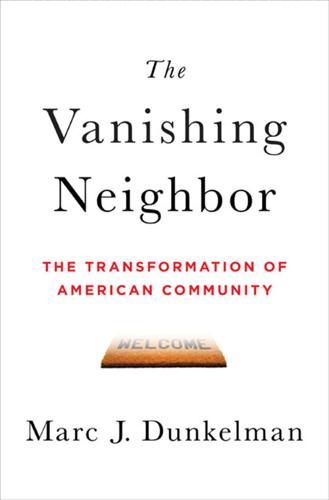
The Vanishing Neighbor: The Transformation of American Community
by
Marc J. Dunkelman
Published 3 Aug 2014
But, as we’ll see, three broad categories of changes—the technological and economic revolutions of the last sixty years, the explosion in American mobility, and the evolution of our lives at home—combined to undermine the basic building blocks of community life. Far from being disconnected, they’re all parts of the same organic whole. But before we can piece those successive changes together, we first have to break them down. No single phrase or book defined the last quarter century more famously than Thomas Friedman’s The World is Flat. As the New York Times columnist has long argued, since the fall of the Berlin Wall in 1989, a new global architecture has emerged, more interdependent and interconnected than anything before.11 And the statistics bear that out. Since roughly 1990, the global marketplace has more than doubled in size, growing to encompass roughly two billion people.
…
pid=25958. 6Judis, “Newt’s not-so-weird gurus.” 7Toffler, The Third Wave, 4. 8Toffler, The Third Wave, 14. 9An argument made along similar lines can be found in Daniel Bell, The Coming of Post-Industrial Society (New York: Basic Books, 1999). 10Marshall McLuhan and Bruce R. Powers, The Global Village (New York: Oxford University Press, 1970). 11Thomas L. Friedman, The World Is Flat: A Brief History of the Twenty-First Century (New York: Farrar, Straus and Giroux, 2005). 12Fareed Zakaria. The Post-American World (New York: W. W. Norton, 2009), 19–21. 13Lee Rainie and Barry Wellman, Networked: The New Social Operating System (Cambridge, Mass.: MIT Press, 2012), Fig. 2.7, 28. 14http://www.freedomhouse.org/sites/default/files/Country%20Status%20%26%20Ratings%20Overview%2C%201973-2012.pdf, accessed November 2, 2012. 15Zakaria, The Post-American World, 3. 16Rainie and Wellman, Networked, Figure 2.5, 26. 17“Social Networking Site and Politics,” Pew Internet & American Life Project, March 12, 2012; “Social Networking Popular Across Globe,” Pew Research Center Global Attitudes Project, December 12, 2012. 18“Social Networking Popular Across Globe.” 19Interview with Eric Schmidt, Charlie Rose, March 6, 2009. 20Rainie and Wellman, Networked, Fig. 2.10, 31; Fig. 2.3, 24. 21Matt Richtel, “Attached to Technology and Paying a Price,” New York Times, June 6, 2010; Robert D.

The Age of Stagnation: Why Perpetual Growth Is Unattainable and the Global Economy Is in Peril
by
Satyajit Das
Published 9 Feb 2016
Individuals renting out their houses, cars, or labor make a fraction of what they would receive in traditional full-time jobs, without any employment benefits. In the sharing economy it is “possible for a cash-flush tech start-up to have homeless workers.”10 Having ridden the globalization wave with The World Is Flat, New York Times columnist Thomas Friedman now endorses the sharing economy, celebrating new micro-entrepreneurs. It isn't entrepreneurship. Former US Labor secretary Robert Reich termed it the “share-the-scraps” economy. It harks back to earlier times when poor, uneducated workers, many of them immigrants, took on any work to survive.
…
Daniel Yergin and Joseph Stanislaw, The Commanding Heights: The Battle for the World Economy, Touchstone Books, 2002. Globalization and Emerging Markets William J. Bernstein, A Splendid Exchange: How Trade Shaped the World, Grove Press, 2008. Jonathan Fenby, Tiger Head, Snake Tails: China Today, How It Got There and Where It Is Heading, Simon & Schuster, 2012. Thomas Friedman, The World Is Flat: The Globalised World of the Twenty-First Century, Penguin, 2006. Chrystia Freeland, Sale of the Century: The Inside Story of the Second Russian Revolution, Abacus, 2000. Ramachandra Guha, India after Gandhi: The History of the World's Largest Democracy, Harper Perennial, 2003. Henry Kissinger, On China, Penguin, 2011.

The Relentless Revolution: A History of Capitalism
by
Joyce Appleby
Published 22 Dec 2009
As readers of this history know, global trade began in earnest in the sixteenth century with the arrival of spices from the East Indies and silver from the New World. Why then does globalization deserve our attention now? Because world communication and transactions have tied our lives together in ways unimaginable even fifty years ago. Governments have become more open, and their borders more porous. “The world is flat,” as Thomas Friedman announced, by which he meant that people, money, and goods moved freely across the plane surface of the globe.16 Going well beyond telegraphy and telephones, the Internet links individuals, firms, and institutions instantly with messages, tables, photos, and spreadsheets.
…
Crandall and Kenneth Flamm, “Overview,” in Crandall and Flamm, eds., Changing the Rules, 114–29; Tony A. Freyer, Antitrust and Global Capitalism (New York, 2006), 6–7. 48. Dick K. Nanto, “The 1997–98 Asian Financial Crisis,” CRS Report for Congress, February 6, 1998 (www.fas.org/man/crs/crs-asia2), 5. 49. “The Time 100,” New York (2000). 50. Thomas L. Friedman, The World Is Flat: A Brief History of the Twenty-first Century (New York, 2005), 128–39; Nelson Lichtenstein, “Why Working at Wal-Mart Is Different,” Connecticut Law Review, 39 (2007): 1649–84; “How Wal-Mart Fights Unions,” Minnesota Law Review, 92 (2008): 1462–1501. 51. Kenneth Pomeranz and Steven Topik, The World That Trade Created: Society, Culture, and the World Ecoomy, 1400 to the Present (Armonk, NY, 2006), 260. 52.
…
Four people—Doris Dungey, Nouriel Roubini, Brooksley Born, and John Bogle—clearly saw what was wrong with the prevailing financial incentives. See Bogle, “The Case of Corporate America Today,” Daedalus, 136 (Summer, 2007). 15. Alexei Barrionuevo, “Demand for a Say on the Way Out of Crisis,” New York Times, November 10, 2008. 16. Thomas L. Friedman, The World Is Flat: A Brief History of the Twenty-first Century (New York, 2005); Jeffrey A. Frieden, Global Capitalism: Its Fall and Rise in the Twentieth Century (New York, 2006 [paperback ed., 2007]), 293ff; Robert W. Crandall and Kenneth Ramm, eds., Changing the Rules: Technological Change, International Competition, and Regulation in Communications (Washington, 1989), 10. 17.

The Technology Trap: Capital, Labor, and Power in the Age of Automation
by
Carl Benedikt Frey
Published 17 Jun 2019
With the advent of the World Wide Web, email, and cell phones, pundits proclaimed that location would soon become irrelevant and the curse of geography a distant memory.24 Futurists like Alvin Toffler even predicted that the death of distance would eventually render the city obsolete.25 And in 2005, the cover of the first edition of Thomas Friedman’s best-selling The World Is Flat pictured a world in which geographic divisions were history.26 Information technology, these authors declared, was making face-to-face interactions unnecessary, so that the time when companies and workers had to cluster in expensive places like Manhattan or Silicon Valley would soon be over.
…
Domina, 2009, “The Changing Bases of Segregation in the United States,” Annals of the American Academy of Political and Social Science 626 (1): 74–90. 24. See, for example F. Cairncross, 2001, The Death of Distance: 2.0: How the Communications Revolution Will Change Our Lives (New York: Texere Publishing). 25. A. Toffler, 1980, The Third Wave (New York: Bantam Books). 26. T. L. Friedman, 2006, The World is Flat: The Globalized World in the Twenty-first Century (London: Penguin). 27. E. L. Glaeser, 1998, “Are Cities Dying?,” Journal of Economic Perspectives 12 (2): 139–60. 28. For an overview of the sources of agglomeration, see E. L. Glaeser and J. D. Gottlieb, 2009, “The Wealth of Cities: Agglomeration Economies and Spatial Equilibrium in the United States,” Journal of Economic Literature 47 (4): 983–1028. 29.
…
“Automation and the Future of Work—Understanding the Numbers.” Oxford Martin School. https://www.oxfordmartin.ox.ac.uk/opinion/view/404. Frey, C. B., and M. A. Osborne, 2017. “The Future of Employment: How Susceptible Are Jobs to Computerisation?” Technological Forecasting and Social Change 114 (January): 254–80. Friedman, T. L. 2006. The World Is Flat: The Globalized World in the Twenty-First Century. London: Penguin. Friedrich, O. 1983. “The Computer Moves In (Machine of the Year).” Time, January 3, 14–24. Fukuyama, F. 2014. Political Order and Political Decay: From the Industrial Revolution to the Globalization of Democracy. New York: Farrar, Straus and Giroux.
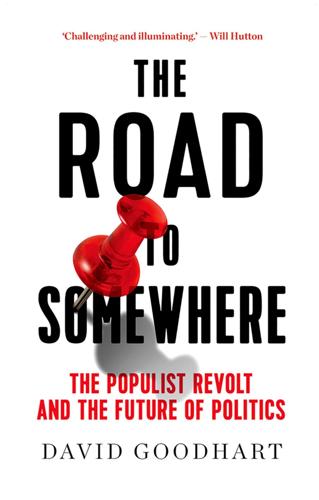
The Road to Somewhere: The Populist Revolt and the Future of Politics
by
David Goodhart
Published 7 Jan 2017
It is right to say that the world is significantly more economically interdependent than fifty years ago, and nation states have voluntarily vested more of their sovereignty in international regulations and institutions such as NATO, the World Trade Organisation and the Basel financial regulators club. Moreover, global tourism and the internet reinforce the metaphor of a ‘borderless world’. But it is mainly a metaphor. Thomas Friedman’s paean to globalisation, The World is Flat, is now widely regarded as ‘globaloney’.6 Professor Pankaj Ghemawat, one of the leading critics of globaloney has shown convincingly that distance most certainly does still matter. Less than 25 per cent of global economic activity is international, and most of that is regional, and foreign direct investment accounts for less than 10 per cent of all fixed investment worldwide.
…
, Harvard University and Centre for Economics Policy Research discussion paper, http://drodrik.scholar.harvard.edu/files/dani-rodrik/files/who-needs-the-nation-state.pdf 4.Ivan Krastev, ‘Fear and loathing of a world without borders’, Financial Times, 6 April 2016, https://ft.com/content/328f15da-fa4e-11e5-8f41-df5bda8beb40 5.Alexander Betts and Paul Collier, Refuge: Transforming a Broken Refugee System, London, London: Penguin, forthcoming. 6.Thomas L. Friedman, The World is Flat: The Globalized World in the Twenty-first Century, Penguin, 2007. 7.Pankaj Ghemawat, ‘Distance Still Matters’, Harvard Business Review, September 2001. 8.‘The World Economy Special Report’, The Economist, 1 October 2016. 9.Some 10.7 per cent lived on less than $1.90 a day in 2013. ‘Overview’, The World Bank, www.worldbank.org/en/topic/poverty/overview 10.Adam Corlett, ‘Examining an elephant: Globalisation and the lower middle class of the rich world’ Resolution Foundation, September 2016, www.resolutionfoundation.org/app/uploads/2016/09/Examining-an-elephant.pdf 11.Ibid., p. 33. 12.Douglas Irwin, Free Trade Under Fire, Princeton University Press, 2009. 13.Joao Paulo Pessoa, ‘International Competition and Labor Market Adjustment’, CEP Discusssion Paper No. 1411, March 2016, http://cep.lse.ac.uk/pubs/download/dp1411.pdf 14.Dani Rodrik, ‘Who Needs the Nation State?’

The Truth Machine: The Blockchain and the Future of Everything
by
Paul Vigna
and
Michael J. Casey
Published 27 Feb 2018
Decentralized Economy with Centralized Trust How do we get to a world of decentralized trust, so that it costs me close to nothing to safely and confidently engage in transactions with others online? Answers to that question lie in reflecting on how we went from the utopian concept of a level-playing-field Internet that led New York Times columnist Thomas Friedman to declare that the “world is flat” to one in which a handful of gargantuan gatekeepers have asserted almost total control. Let’s start with the pre-Internet offline economy, the one we inherited from the twentieth century, when the centralized trust model was the only one we could imagine. Under that system, which prevails to this day, we charge banks, public utilities, certificate authorities, government agencies, and countless other centralized entities and institutions with the task of recording everyone’s transactions and exchanges of value.
…
the so-called WannaCry ransom attacks: Ian Scherr, “WannaCry Ransomware: Everything You Need to Know,” CNET, May 19, 2017, https://www.cnet.com/news/wannacry-wannacrypt-uiwix-ransomware-everything-you-need-to-know/. That’s why initiatives like MedRec: Ariel Ekblaw and Asaf Azaria, “MedRec: Medical Data Management on the Blockchain,” PubPub, September 19, 2016, https://www.pubpub.org/pub/medrec. New York Times columnist Thomas Friedman: Thomas Friedman, The World Is Flat: A Brief History of the Twenty-First Century (Farrar, Straus and Giroux, 2005) In The Age of Cryptocurrency, we reported: Paul Vigna and Michael J. Casey, The Age of Cryptocurrency (St. Martin’s Press, 2015), pp. 57–60. This was not the dream conveyed: Timothy C. May, “The Crypto Anarchist Manifesto,” https://www.activism.net/cypherpunk/crypto-anarchy.html.
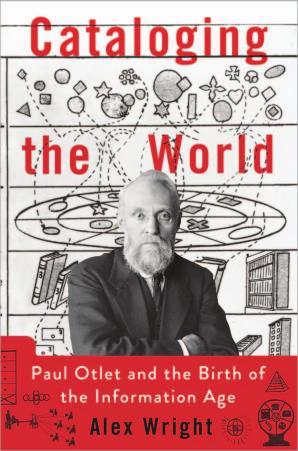
Cataloging the World: Paul Otlet and the Birth of the Information Age
by
Alex Wright
Published 6 Jun 2014
Conclusion 1. 2. 3. 4. 5. 6. 7. 8. Echikson, personal interview. Dyson, “Turing’s Cathedral.” Morris, “Henry James and an Eccentric Sculptor’s Fantasies.” Mumford, introduction to Geddes and Tyrwhitt, Patrick Geddes in India, 9. Brook, “Heirs Apparent,” 17. Le Corbusier, Radiant City, 263. Friedman, The World Is Flat, 92. Leonard, “Thanks for Nothing, 1 Percent!” 324 BIBLIOGRAPHY Abrahams, Peter. “The Congress in Perspective.” In History of the Pan-African Congress, edited by George Padmore, 1947. http://www.marxists.org/archive/ padmore/1947/pan-african-congress/ch05.htm. Andersen, Hendrik Christian.
…
The Crisis: A Record of the Darker Races 23, no. 133 (November 1921): 12–18. Febvre, Lucien, and Henri-Jean Martin. The Coming of the Book: The Impact of Printing 1450–1800. London: Verso, 1997. Foxe, John. The Unabridged Acts and Monuments Online. 1570th ed. Sheffield: HRI Online Publications, 2011. http//www.johnfoxe.org. 327 BIBLIOGRAPHY Friedman, Thomas L. The World Is Flat: A Brief History of the Twenty-First Century. New York: Farrar, Straus and Giroux, 2007. Geddes, Patrick. Cities in Evolution: An Introduction to the Town Planning Movement and to the Study of Civics. London: Williams & Norgate, 1915. ———. Civics: As Applied Sociology. 1904. ———. The Classification of Statistics and Its Results.
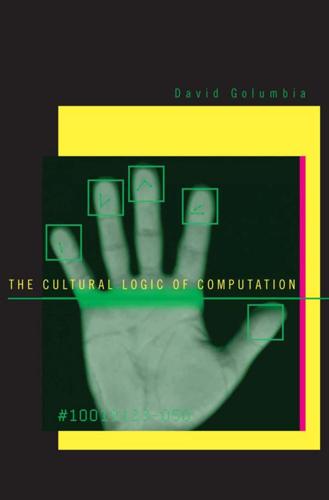
The Cultural Logic of Computation
by
David Golumbia
Published 31 Mar 2009
While at one level it may be harmless enough to imagine that the tremendous power placed at the hands of many individuals offers a democratization of culture, at another level such claims smack of something between naïveté and outright, condescending colonial thought—just, in fact, the intellectual regime we tell ourselves we have surpassed in this nominally postcolonial age. Among the most influential accounts of such cultural transformation is the New York Times columnist Thomas Friedman’s (2005) The World Is Flat: A Brief History of the Twenty-First Century. Exactly as its presumptuous subtitle implies, Friedman’s book outlines a series of cultural-economic changes whose shape can only be dimly glimpsed today, a messianic vision in which the “essential impact of all the technological changes coming together today” is that “people can plug, play, compete, connect, and collaborate with more equal power than ever before” (x).
…
Discipline and Punish: The Birth of the Prison. New York: Vintage Books,. ———. 2000. Power. Essential Works of Foucault Volume 3. New York: The New Press. Freud, Sigmund. 1905. Three Essays on the Theory of Sexuality. Standard Edition of the Complete Works of Sigmund Freud, Vol. 7. London: Hogarth Press, 135–243. Friedman, Thomas. 2005. The World Is Flat: A Brief History of the Twenty-First Century. Third edition. New York: Picador, 2007. Galloway, Alexander R. 2004. Protocol: How Control Exists after Decentralization. Cambridge, MA: The MIT Press. ———. 2006. Gaming: Essays on Algorithmic Culture. Minneapolis: University of Minnesota Press. References p 240 Galloway, Alexander R., and Eugene Thacker. 2007.

Remote: Office Not Required
by
Jason Fried
and
David Heinemeier Hansson
Published 29 Oct 2013
To someone like Bloomberg, who over the course of decades has kept his coworkers close at hand (never more so than in his mayor’s office, which with its warren of open cubicles mimics a trading floor), being able to peer out and “see” the work being done is as entrenched a habit as they come. Challenging such habits has always been a risky business. The world is flat right up until the day it’s round. Or as Harvey Dent from Batman said: “The night is darkest just before the dawn. And I promise you the dawn is coming.” Remote work is here, and it’s here to stay. The only question is whether you’ll be part of the early adopters, the early majority, the late majority, or the laggards.‡ The ship carrying the innovators has already sailed, but there are still plenty of vessels for the early adopters.

The Permanent Portfolio
by
Craig Rowland
and
J. M. Lawson
Published 27 Aug 2012
We are going to take a limited look at the economic climates of several countries by central bank interest rate, inflation rate, unemployment rate, and GDP growth. The world economy is very diverse despite the recent hoopla around globalization and “the world is flat” mantras. Table 12.1 Every Country Has its Own Economic Conditions. The World is Definitely not flat. The world economy is very diverse despite the recent hoopla around globalization and “the world is flat” mantras. Sure, there is a greater dependence on trade than before, but economies in various regions still tend to move independent of each other much of the time. The important thing about Table 12.1 is not the year it covers (the table is for 2011).

Aerotropolis
by
John D. Kasarda
and
Greg Lindsay
Published 2 Jan 2009
The Jet Age ended when we acclimated to the new pace of things—when adventure gave way to business and leisure, and finally to being a cog in the finely meshed gears of a global machine. Whereas Time magazine once grandly estimated that the advent of jets had shrunk the world by precisely 40 percent, today, it is said, the world is flat. And where air travel itself was once dizzyingly fast, now it’s too slow for our always-on selves. Ironically, aircraft cabins became the last refuge from our BlackBerrys before finally succumbing to in-flight WiFi last year. The reason we mourn that vanished era so is that the Jet Age was the all-too-brief flowering of our romance with speed.
…
Dubai discovered after 9/11 that its greatest asset wasn’t oil but geography, defined not by the contours of any map but by the flying times of modern airliners. Living within four thousand miles of the emirate, less than an eight-hour flight away, are 3.5 billion people, more than half the world’s population. And they’re the ones learning the world is flat— billions of the most deprived, the most striving, and the most nouveau of the world’s riche, all dressed up with no place to go. They’re the beneficiaries of a quintupling in oil prices and a tripling in outsourcing. The crossroads of the Gulf sits squarely in the wide strip of longitude between the developed nations of Europe on one side and the Pacific’s on the other, in what was once a time-zone dead zone between Frankfurt’s bourse and Tokyo’s stock exchange.
…
Dearborn, MI: Dearborn Publishing Company, 1922. Frank, Thomas. The Wrecking Crew: How Conservatives Rule. New York: Metropolitan Books, 2008. Friedman, Thomas L. Hot, Flat, and Crowded: Why We Need a Green Revolution, and How It Can Renew America. New York: Farrar, Straus and Giroux, 2008. ———. The World Is Flat: A Brief History of the Twenty-first Century. 1st updated and expanded ed. New York: Farrar, Straus and Giroux, 2006. Friedmann, John. “The World City Hypothesis.” Development and Change 17, no. 1 (January 1986): 69–83. Fröbel, Folker, Jürgen Heinrichs, and Otto Kreye. The New International Division of Labour: Structural Unemployment in Industrialised Countries and Industrialisation in Developing Countries.
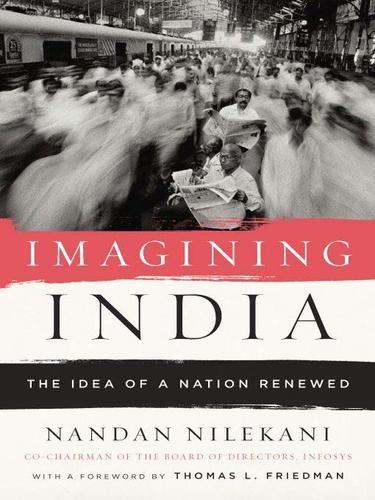
Imagining India
by
Nandan Nilekani
Published 25 Nov 2008
But the reason Nandan is so sought out is that he has a unique ability not simply to program software but also to explain how that program fits into the emerging trends in computing, how those trends will transform the computing business, how that transformation will affect global politics and economics, and, ultimately, how it will all loop back and transform India. It was his insight that the global playing field was being “leveled” by technology that inspired me to write my own book The World Is Flat. And nowhere are his explanatory skills more on display than in this, his first book. While this book is an enormously valuable explainer of where India has been and needs to go, it is much more than that. It is a prod to his fellow Indians, and India’s American friends, to imagine and deliver on a different future by refusing to settle anymore for an Indian politics and governance that is so much less than the talents possessed and needed by the Indian people.
…
Communication is becoming wireless, lighter than air, with cellular telephony and an alphabet soup of technologies such as Wi-Fi and WiMax. But while these electronification trends triggered dramatic change in the United States and Europe—and no book has described these shifts better than Thomas Friedman’s The World Is Flat—we have seen them evolve in these countries mainly as another layer over traditional models, complementing fixed-line telephones, dead-tree content and established ways of doing business. India is different. For all the benefits India has seen from expected trends in mobile phones, electronic voting and modern stock exchanges, there is a lot more that is likely to unfold around our technology revolution in the next decade.
…
As she sat on a balcony, with more than 250,000 people showing up “to pay their respects” to her, what she told Chatwin was, “Do get me some more of those cashew nuts. You have no idea how tiring it is to be a goddess.” d These are thin, filterless cigarettes, usually made from leaves and tobacco. e The Alchemist, Liar’s Poker and (Tom Friedman would be delighted) The World Is Flat have been perennial favorites for Indian pirates. f Amartya Sen and others have pointed out, however, that while these famines may have seemed to be the consequence of a country that was both poor and overpopulated, they were in fact triggered partly by trade policies and the lack of infrastructure.

The New Prophets of Capital
by
Nicole Aschoff
Published 10 Mar 2015
William Domhoff, “The Ford Foundation in the Inner City: Forging and Alliance with Neighborhood Activists,” www2.ucsc.edu/whorulesamerica/local/ford_foundation.html. 14David Bank, Breaking Windows: How Bill Gates Fumbled the Future of Microsoft, New York: Free Press, 2001. 15Bill Gates, Davos speech, 2008. 16Bill Gates, Davos speech, 2008. 17Bishop and Green, Philanthrocapitalism. 18Melinda Gates, Stanford seminar speech. 19Bill Gates, “Mosquitos, Malaria, and Education,” TED Talk, February 2009. 20“Public High School Four-Year on-Time Graduation Rates and Event Dropout Rates: School Years 2010–11 and 2011–12,” US Department of Education, NCES 2014–391; Lisa Dodson and Randy Albelda, “How Youth Are Put at Risk by Parents’ Low-Wage Jobs,” Center for Social Policy, University of Massachusetts, Boston, Fall 2012. 21Thomas L. Friedman, The World Is Flat: A Brief History of the Twenty-First Century, New York: Picador, 2007. 22“US Education Reform and National Security,” Independent Task Force Report No. 68, New York: Council on Foreign Relations, 2012. 23Jason L. Riley, “Was the $5 Billion Worth It?” Wall Street Journal, July 23, 2011. 24Jim Horn and Ken Libby, “The Giving Business: Venture Philanthropy and the NewSchools Venture Fund,” in Philip E.
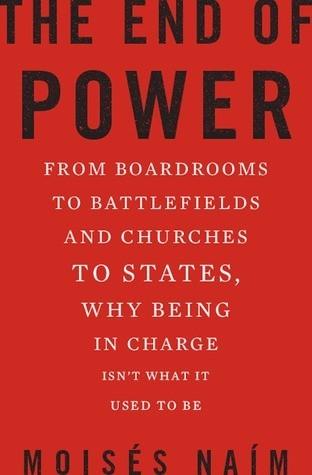
The End of Power: From Boardrooms to Battlefields and Churches to States, Why Being in Charge Isn’t What It Used to Be
by
Moises Naim
Published 5 Mar 2013
Yu Liu and DingDing Chen, “Why China Will Democratize,” The Washington Quarterly (Winter 2012): 41–62; interview with Professor Minxin Pei, Washington, DC, June 15, 2012. 2. Fareed Zakaria offered the best synthesis on this subject in his 2003 book The Future of Freedom: Illiberal Democracy at Home and Abroad. 3. Huntington, Political Order in Changing Societies, p. 8. 4. The title of Thomas Friedman’s best seller The World Is Flat captures how pervasive this change has been: how the diffusion of power has drastically altered the world’s business and commercial landscape. Friedman also eloquently points to the political consequences of these changes (see especially pages 371–414). 5. I document the ascent of a new breed of transnational criminal networks and their substantial consequences for the global order, and our daily lives, in Illicit: How Smugglers, Traffickers and Copycats are Hijacking the Global Economy.
…
Freedom in the World: Political Rights and Civil Liberties 1970–2008. New York: Freedom House, 2010. Frey, William H. Diversity Explosion: How New Racial Demographics Are Remaking America. Washington, DC: Brookings Institution Press, 2013. Friedman, Thomas. The Lexus and the Olive Tree. New York: Anchor Books, 2000. ——. The World Is Flat: A Brief History of the Twenty-First Century. New York: Farrar, Straus & Giroux, 2005. Frydman, Carola, and Raven E. Sacks. “Executive Compensation: A New View from a Long-Term Perspective, 1936–2005,” FEDS Working Paper No. 200735, July 2007. Galbreath, Jeremy. “Twenty-First Century Management Rules: The Management of Relationships as Intangible Assets.”
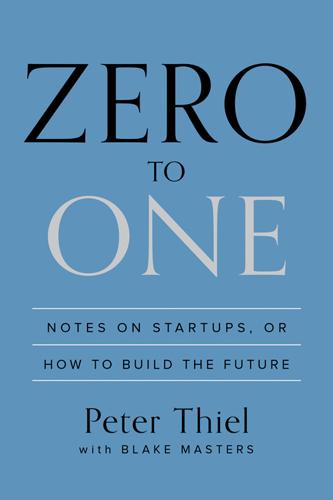
Zero to One: Notes on Startups, or How to Build the Future
by
Peter Thiel
and
Blake Masters
Published 15 Sep 2014
Every fall, the deans at top law schools and business schools welcome the incoming class with the same implicit message: “You got into this elite institution. Your worries are over. You’re set for life.” But that’s probably the kind of thing that’s true only if you don’t believe it. Fourth is “flatness.” As globalization advances, people perceive the world as one homogeneous, highly competitive marketplace: the world is “flat.” Given that assumption, anyone who might have had the ambition to look for a secret will first ask himself: if it were possible to discover something new, wouldn’t someone from the faceless global talent pool of smarter and more creative people have found it already? This voice of doubt can dissuade people from even starting to look for secrets in a world that seems too big a place for any individual to contribute something unique.
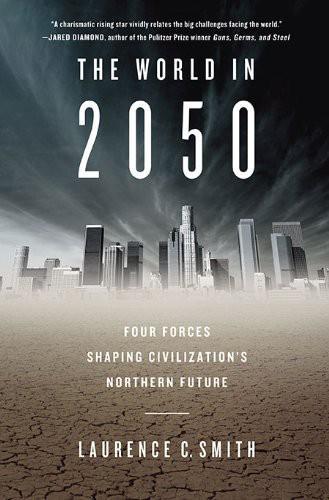
The World in 2050: Four Forces Shaping Civilization's Northern Future
by
Laurence C. Smith
Published 22 Sep 2010
For our purposes here let us simply think of “globalization” very broadly as a set of economic, social, and technological processes that are making the world more interconnected and interdependent. Most people were aware of how interconnected the world economy had become long before the 2008-09 global financial crisis laid it bare. In his 2006 book The World Is Flat, the New York Times columnist and author Thomas Friedman famously asked, “Where were you when the world went flat?”27 Flat is Friedman’s simple metaphor for the opening and leveling of a global playing field for trade and commerce, one that in principle maximizes efficiency and profitability for all because the cheapest ore or cheapest labor can be hunted down to the last corners of Earth.
…
Agnew (Philadelphia: Temple University Press, 2005); In Defense of Globalization by Jagdish Bhagwati (Oxford: Oxford University Press, 2007); The Power of Place: Geography, Destiny, and Globalization’s Rough Landscape by Harm de Blij (USA: Oxford University Press, 2008); Social Economy of the Metropolis: Cognitive-Cultural Capitalism and the Global Resurgence of Cities by Allen J. Scott (Oxford: Oxford University Press, 2009); and Globalization and Sovereignty by John A. Agnew (Lanham, Md., and Plymouth, UK: Rowman & Littlefield Publishers, Inc., 2009). 27 T. L. Friedman, The World Is Flat (Gordonsville, Va.: Farrar, Straus & Giroux, 2005). 28 From “Store Openings,” http://franchisor.ikea.com/ (accessed November 13, 2009). 29 P. 38, Steger, Globalization: A Very Short Introduction (Oxford: Oxford University Press, 2003). 30 For more on how the United States exported its business model to the world, see J.

Geek Heresy: Rescuing Social Change From the Cult of Technology
by
Kentaro Toyama
Published 25 May 2015
Dmitry Kogan, an intern who worked with me to conduct a study of English-language learning across several schools, administered the questionnaire. 33.This phrasing is used in the Constitution of India (2011), Part XVI, Clause 340. 34.Detailed descriptions of Shanti Bhavan are provided in George (2004). Thomas Friedman (2005) wrote about Shanti Bhavan in The World Is Flat; his daughter was a volunteer. 35.George (2004) is part memoir and part social critique. It describes George’s extensive efforts to build Shanti Bhavan and other institutions and programs – a medical center, a campaign against lead poisoning, a journalism school, etc. 36.Psacharopoulos and Patrinos (2004). 37.Mandela (2003). 38.Citations have been removed from this quotation from Patrinos (2008).
…
Scientific American, July 11, 2012, www.scientificamerican.com/article/improved-cookstoves-little-reduce-harmful-indoor-emissions/. Freud, Sigmund. (1962). Three Essays on the Theory of Sexuality. James Strachey, trans. Basic Books. Fried, Barbara. (2013). Beyond blame. Boston Review, June 28, 2013, www.bostonreview.net/forum/barbara-fried-beyond-blame-moral-responsibility-philosophy-law. Friedman, Thomas L. (2005). The World Is Flat: The Globalized World in the Twenty-First Century. Penguin. Fukuyama, Francis. (1992). The End of History and the Last Man. Free Press. Fuller, Robert W. (2004). Somebodies and Nobodies: Overcoming the Abuse of Rank. New Society Publishers. Fundación Paraguaya. (n.d.). Self-sufficient school, www.fundacionparaguaya.org.py/?

Learn Python the Hard Way
by
Zed Shaw
Published 1 Jan 2010
Then you put each item you want in the list separated by commas, just like when you did function arguments. Lastly you end the list with a ] (right-bracket) to indicate that it's over. Python then takes this list and all its contents, and assigns them to the variable. Warning This is where things get tricky for people who can't program. Your brain has been taught that the world is flat. Remember in the last exercise where you put if-statements inside if-statements? That probably made your brain hurt because most people do not ponder how to "nest" things inside things. In programming this is all over the place. You will find functions that call other functions that have if-statements that have lists with lists inside lists.
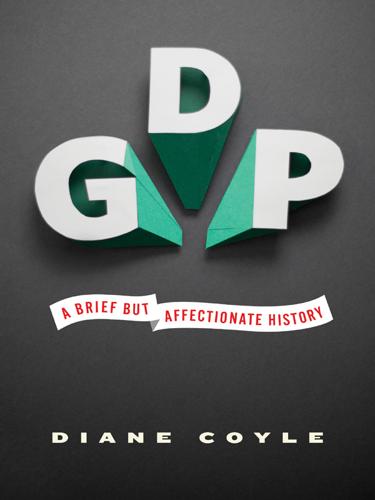
GDP: A Brief but Affectionate History
by
Diane Coyle
Published 23 Feb 2014
Profit and share price increases are a side effect, not a goal.3 Finally, the tragic downfall, the nemesis. By the mid-2000s, despite the turmoil of the earlier Asian financial crisis and dot-com bust (in 2001), so-called Anglo-Saxon capitalism appeared triumphant. Its dominance was trumpeted by popular authors such as Thomas Friedman in his books The Lexus and the Olive Tree and The World Is Flat. The message was: this is an uncomfortable ride but deal with it because global capitalism is sweeping the whole world before it. Yet some doubts started to emerge even before the onset of the financial crisis in late 2007. There was, for example, not just the rise of the BRICs, but the prospect of their overtaking the West.
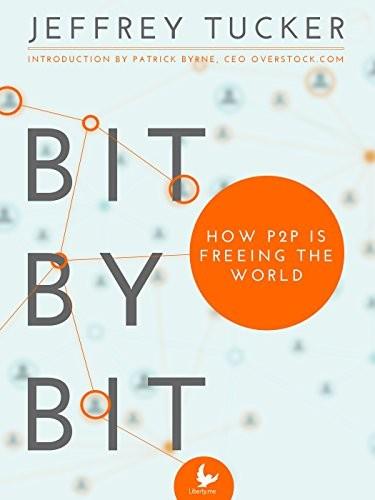
Bit by Bit: How P2P Is Freeing the World
by
Jeffrey Tucker
Published 7 Jan 2015
In fact, I should have come to expect it by now. Every time this subject comes up with anyone who favors government action on climate change, the result has been the same. We seem to be unable to have a rational conversation. It’s like an article of faith for them, and I’m suddenly the dangerous heretic who believes the world is flat. Now, in light of this, I read Paul Krugman this morning. He has written this in his column: “Read or watch any extended debate over climate policy and you’ll be struck by the venom, the sheer rage, of the denialists.” The denialists? My whole experience has been the opposite. By denialists, I’m assuming he means people who doubt the merit of his grand central plan for the world economy.

Microtrends: The Small Forces Behind Tomorrow's Big Changes
by
Mark Penn
and
E. Kinney Zalesne
Published 5 Sep 2007
They were, in short, a serious lot who had been through World War II and had a real respect for the seriousness of life and politics. Today’s elites have been spoiled longer, and are more removed from the struggles of their parents and grandparents. While today’s elites are reading Tom Friedman’s The World Is Flat, the rest of America is living it. The elites are seeing unprecedented economic success, while those struggling lower down are getting nowhere. Income data released in March 2007 show that those in the top 10 percent have been getting a raise every year, with the biggest raises (about 14 percent) going to the top 1 percent.
…
The Napolitano piece is Peter Napolitano, “Modern Love; Close Enough for Momma, Too Close for Me,” New York Times, December 24, 2006. Figures on the value lost to companies from absentee workers come from Jane Gross, “As Parents Age, Baby Boomers and Businesses Struggle to Cope,” New York Times, March 25, 2006. VI. Politics Impressionable Elites The Friedman book is, of course, Thomas L. Friedman, The World Is Flat: A Brief History of the 21st Century (Farrar, Straus & Giroux, 2005). The income data come from David Cay Johnston, “Income Gap Is Widening, Data Shows,” New York Times, March 29, 2007. The PSB poll was 806 telephone interviews among likely 2008 presidential voters, including an oversample of 400 very likely Democratic presidential primary voters.
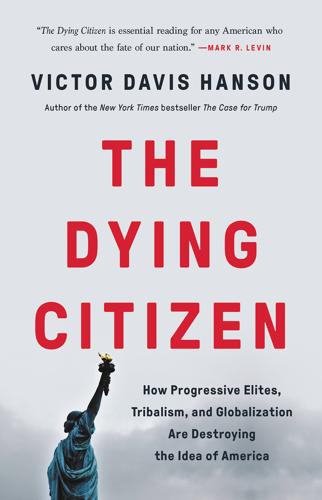
The Dying Citizen: How Progressive Elites, Tribalism, and Globalization Are Destroying the Idea of America
by
Victor Davis Hanson
Published 15 Nov 2021
See Victor Davis Hanson, “Obama’s Hazy Sense of History,” National Review, August 28, 2014, www.nationalreview.com/2014/08/obamas-hazy-sense-history-victor-davis-hanson; David A. Graham, “The Wrong Side of ‘the Right Side of History,’” The Atlantic, December 21, 2015, www.theatlantic.com/politics/archive/2015/12/obama-right-side-of-history/420462. Thomas L. Friedman, The World Is Flat: A Brief History of the Twenty-First Century (New York: Farrar, Straus and Giroux, 2005), 550. 12. Lawrence Wright, The Looming Tower: Al-Qaeda and the Road to 9/11 (New York: Alfred A. Knopf, 2007), 376–407. 13. Tsarnaev: Janet Reitman, “Jahar’s World,” Rolling Stone, July 17, 2013, www.rollingstone.com/culture/culture-news/jahars-world-83856. 14.
…
Camarota and Karen Zeigler, “63% of Non-citizen Households Access Welfare Programs,” Center for Immigration Studies, November 20, 2018, https://cis.org/Report/63-NonCitizen-Households-Access-Welfare-Programs. 19. See Nancy Rockwell, “Nativism v. Globalism,” Patheos, July 17, 2016, www.patheos.com/blogs/biteintheapple/nativism-v-globalism. 20. See Friedman, The World Is Flat, 17. 21. Cf., e.g., J. D. Vance, Hillbilly Elegy: A Memoir of a Family and Culture in Crisis (New York: Harper, an imprint of HarperCollins Publishers, 2016), 5–7. See, e.g., Dabanjan Banerjee, Jagannatha Rao Kosagisharaf, and T. S. Sathyanarayana Rao, “‘The Dual Pandemic’ of Suicide and COVID-19: A Biopsychosocial Narrative of Risks and Prevention,” Psychiatry Research 295 (January 2021): 113577, wwwncbi.nlm.nih.gov/pmc/articles/PMC7672361. 22.
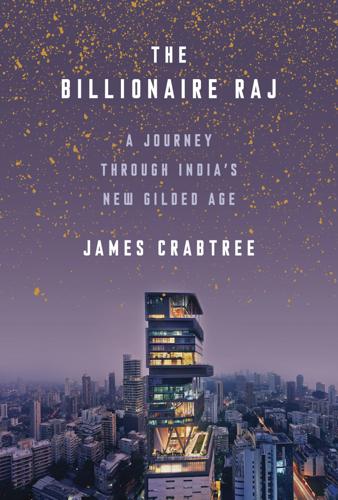
The Billionaire Raj: A Journey Through India's New Gilded Age
by
James Crabtree
Published 2 Jul 2018
Narayana Murthy and Nandan Nilekani, the company’s best-known cofounders, were admired as models of social mobility and ethical practice, as well as being among India’s first tech billionaires. It was a throwaway phrase by Nilekani—“Tom, the playing field is being levelled”—that inspired American journalist Thomas Friedman to write The World Is Flat, his breathless 2005 opus hailing a new era of global capitalism.20 Infosys’s successes encouraged a new generation too. “To be successful in commerce here, when I was growing up, you really had to be born into an industrial family,” Meera Sanyal, the former India head of Royal Bank of Scotland, once told me.
…
An Uncertain Glory: India and Its Contradictions. London, Allen Lane, 2013. Encarnation, D. J. Dislodging Multinationals: India’s Strategy in Comparative Perspective. Ithaca, NY, Cornell University Press, 1989. Fitzgerald, F. S. The Great Gatsby. Toronto, Aegitas, [1925] 2016. Friedman, T. L. The World Is Flat: The Globalized World in the Twenty-First Century. London, Penguin, 2006. Freund, C. Rich People Poor Countries: The Rise of Emerging-Market Tycoons and Their Mega Firms. Washington, DC, Peterson Institute for International Economics, 2016. Fukuyama, F. The End of History and the Last Man.
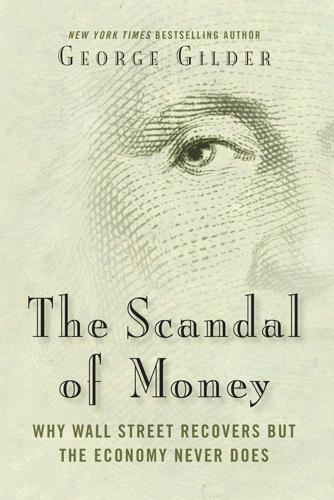
The Scandal of Money
by
George Gilder
Published 23 Feb 2016
(Chicago, IL: University of Chicago Press, 1991), 33–68. 6.Walter B. Wriston, The Twilight of Sovereignty: How the Information Revolution Is Transforming Our World (New York, NY: Scribner, 1992; Replica Books, Lord and Taylor, Bridgewater, NJ: 1997), 9, 59–62, and passim. Wriston beat Thomas Friedman to all the crucial insights of The World Is Flat by fifteen years. 7.Ibid., 9. 8.“OTC Foreign Exchange Turnover by Instrument, Counterparty and Currency in April 2013, ‘Net-Net’ Basis, Total Reported Transactions in All Currencies,” in Bank for International Settlements, Triennial Central Bank Survey: Global Foreign Exchange Market Turnover in 2013 (Switzerland: 2014). 9.Eric Janszen, The Postcatastrophe Economy: Rebuilding America and Avoiding the Next Bubble (New York, NY: Portfolio, 2010), 36ff.
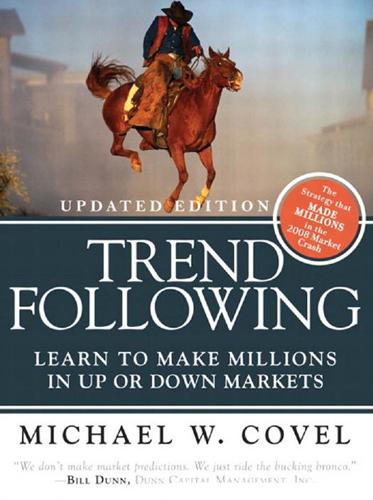
Trend Following: How Great Traders Make Millions in Up or Down Markets
by
Michael W. Covel
Published 19 Mar 2007
That’s always the time to change course, not when you’re just about to get hit by the typhoon. The way to avoid being caught in such a storm is to identify the confluence of factors and to change course even though right now the sky is blue, the winds are gentle, and the water seems calm…After all look how calm and sunny it is outside. Thomas Friedman, The World is Flat 144 Trend Following (Updated Edition): Learn to Make Millions in Up or Down Markets made 13 percent in November of 2000 and 23 percent in December. Here’s an excerpt of her follow-up piece: “Wall Street’s biggest commodity-trading advisers posted a dramatic turnaround in the fourth quarter, turning last year’s heart-stopping losses into gains for the year.
…
Kirk T., 214 Vician, Thomas, Jr., 40, 66, 243, 272 volatility, 99-105 measuring, 180 risk versus, 104 upside volatility, 102-105 Voltaire, xvii von Metternich, Klemens, 270 von Mises, Ludwig, xviii, 3, 97, 99, 202, 264 Wachtel, Larry, 235 Waksman, Sol, 253 Watts, Dickson, 92 Weaver, Earl, 182 web sites, 397 Weill, Sandy, 156 Weintraub, Neal T., 233 Wells, Herbert George (H.G.), 225 Welton, Patrick, 15 what to trade, 254-256 when to buy/sell, 259-262 whipsaws, 263 Wigdor, Paul, 126 Wilcox, Cole, 268, 307 William of Occam, 213 Williams, Ted, 261 winners Long-Term Capital Management (LTCM) collapse, 156-164 losers versus, 123-125 “The Winners and Losers of the Zero-Sum Game: The Origins of Trading Profits, Price Efficiency and Market Liquidity” (white paper) (Harris), 115 winning investment philosophies, 4-6 winning positions, when to exit, 263-265 Winton Capital Management, 29, 372-373 Winton Futures Fund, 230 “The Winton Papers” (Harding), 31 Wittgenstein, Ludwig, 395 Womack, Kent, 241 The World is Flat (Friedman), 143 WorldCom, 241 Wright, Charlie, 244 Yahoo!, 217 Yahoo! Finance, 8 yen trading, 34-36, 57, 140, 161 zero-sum trading, 114-120 Zimmer, Don, 186 TRENDFOLLOWING FREE TREND FOLLOWING DVD Contact Information: Please fill out all fields to receive free DVD Name: Company Name: Address 1: Address 2: City: State: Postal Code: Country: Phone: Fax: E-mail: How did you hear about the book Trend Following: To receive FREE Trend Following DVD please send completed form to: Trend Following c/o Michael Covel 11654 Plaza America Drive, # 224 Reston, VA 20190 USA You can also claim the FREE DVD by filling in form at: www.trendfollowing.com/2009.html For more than 30 years, trend following has been the one trading strategy that’s consistently delivered extraordinary profits in bull and bear markets.
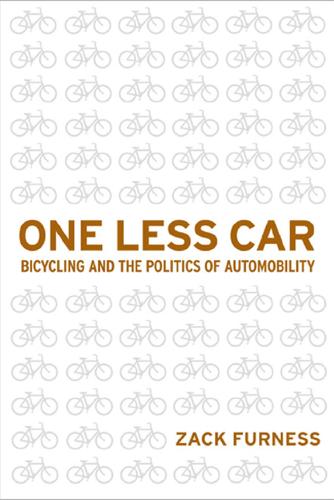
One Less Car: Bicycling and the Politics of Automobility
by
Zack Furness
and
Zachary Mooradian Furness
Published 28 Mar 2010
His frustration stemmed from being expected to pay for the crew’s transportation both to and from the workshop (a whopping 20 cents per ride), even though Calfee bikes (i.e., the frame, front fork, and paint job) retail for no less than $2,000, with most hovering around the $3,000–$6,000 range. See “Ghana Bamboo Bike Journal, February 2008 Trip,” Calfee Design, available at http://www.calfeedesign.com/Ghana2008.htm. Thomas l. Friedman, The World Is Flat: A Brief History of the Twenty-first Century (new york: Farrar, Straus and Giroux, 2007), 537. The literal dogma of free market capitalism is perhaps best articulated by an executive at Opportunity international (the company formerly run by Eric Thurman, coauthor of A Billion Bootstraps): “Serving the poor is an act of worship.
…
Testimony before the United States Senate, Committees on appropriations, armed Services, and Select Committee on intelligence, May 10, 2001. Friedberg, anne. “Urban Mobility and Cinematic visuality: The Screens of los angeles—Endless Cinema or private Telematics.” Journal of Visual Culture 1, no. 2 (2002): 183–204. Friedman, Thomas l. The World Is Flat: A Brief History of the Twenty-first Century. new york: Farrar, Straus and Giroux, 2007. Fritz, ian, Troy neiman, and John Gerken, eds. Bicycle Organization Project (BOOP). Tucson, aZ: BiCaS, 2006. Zine. Fritz, yokota. “DKny Orange Bicycles in london.” Cycleicious Blog, May 19, 2008. available at http://www.cyclelicio.us/2008/05/dkny-orange-bicycles-in-london. html.
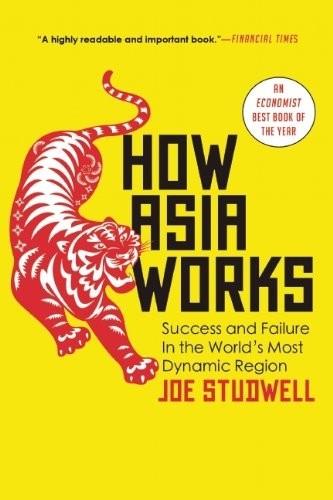
How Asia Works
by
Joe Studwell
Published 1 Jul 2013
Although Japanese, Ohmae was a vehement critic of old-school dirigiste Japan. He looked forward to a globalised world in which national identity would be unimportant, bureaucrats would be pushed aside and open markets would be win–win for all-comers. This sanguine outlook was an early conceptualisation of the view now associated with Thomas Friedman’s 2005 book The World is Flat. Despite its being entirely at odds with the industrial policies that made Japan rich – policies which Mahathir was supposed to be imitating – the prime minister was so taken with Ohmae’s book The Borderless World that he ordered all around him to read it. Asmat Kamaludin, who became the top bureaucrat at Malaysia’s Ministry of International Trade and Industry in this period, recalls: ‘You felt safe if you were walking around with that book.’156 However, with the benefit of hindsight, the rather hasty, under-researched and breathless tone of The Borderless World was a pointer to the unlikelihood of its prediction that the world was becoming more favourable to the development of poor countries.
…
In the 1990s, by contrast, Ohmae and Mahathir went on to plan and launch the futuristic and widely ridiculed Multimedia Super Corridor and Cyberjaya investment park projects around Kuala Lumpur. These were supposed to foster indigenous high technology through free market, win–win cross-border cooperation, but have done no such thing.157 Instead, the white elephant projects stand as testaments to the naivete – albeit well-meaning naivete – of books like The Borderless World and The World is Flat that suggest that we are moving towards a new developmental paradigm in which the interests of rich and poor nations neatly coincide. Journey 4: Across Malaysia Once again we need to take a drive. This being Malaysia, with a Gini coefficient of around 0.5, the car hire firm despatches a couple of peons to bring a vehicle to the house where I am staying on the west side of Kuala Lumpur.
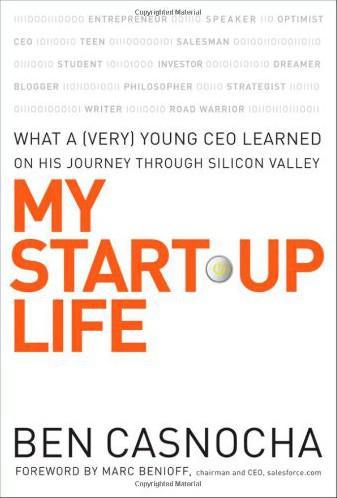
My Start-Up Life: What A
by
Ben Casnocha
and
Marc Benioff
Published 7 May 2007
by William Poundstone The Four Obsessions of an Extraordinary Executive, by Patrick Lencioni The Entrepreneur’s Guide to Business Law, by Constance Bagley Good to Great, by Jim Collins On Becoming a Leader, by Warren Bennis 179 180 APPENDIX C Information Rules, by Carl Shapiro and Hal Varian eBoys, by Randal Stross Fooled by Randomness, by Nassim Nicholas Taleb Compassionate Capitalism, by Marc Benioff Love Is the Killer App, by Tim Sanders Globalization The World Is Flat, by Tom Friedman Creative Destruction, by Tyler Cowen Globaloney, by Michael Veseth Money Makes the World Go Round, by Barbara Garson How “American” Is Globalization? by William Marling Intellectual Life The Blank Slate, by Steven Pinker The Presentation of Self in Everyday Life, by Erving Goffman Reflections by an Affirmative Action Baby, by Stephen Carter Integrity, by Stephen Carter The Accidental Asian, by Eric Liu Mind Wide Open, by Steven Johnson Socrates Café, by Chris Phillips Self-Renewal, by John Gardner Public Intellectuals, by Richard Posner Psychology Influence: The Psychology of Persuasion, by Robert Cialdini Flow, by Mihaly Csikszentmihalyi Man’s Search for Meaning, by Viktor Frankl Biography/Memoir My Life, by Bill Clinton This Boy’s Life, by Tobias Wolff Swimming Across, by Andy Grove All Over But the Shoutin’, by Rick Bragg Personal History, by Katherine Graham Emerson: Mind on Fire, by Robert Richardson In an Uncertain World, by Robert Rubin The Year of Magical Thinking, by Joan Didion Religion End of Faith, by Sam Harris The Universe in a Single Atom, by the Dalai Lama APPENDIX C The World’s Religions, by Huston Smith The Bhagavad-Gita Plan B: Further Thoughts on Faith, by Anne Lamott Under the Banner of Heaven, by Jon Krakauer Politics/Current Affairs Ghost Wars, by Steve Coll Running the World, by David Rothkopf Founding Brothers, by Joseph Ellis A Conflict of Visions, by Thomas Sowell Going Nucular, by Geoffrey Nunberg America at the Crossroads, by Francis Fukuyama Holidays in Hell, by P.
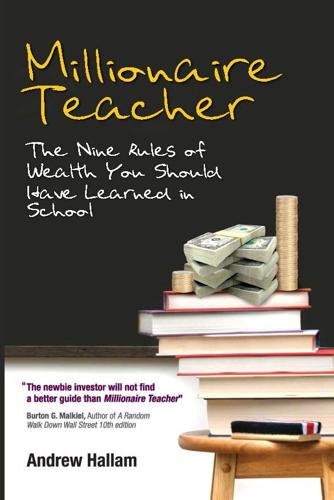
Millionaire Teacher: The Nine Rules of Wealth You Should Have Learned in School
by
Andrew Hallam
Published 1 Nov 2011
There are three types of people who argue that a portfolio of actively managed funds has a better chance of keeping pace with a diversified portfolio of indexes after taxes and fees over the long term. Introduced first, dancing across the stage of improbability is your friendly neighborhood financial adviser. Pulling all kinds of tricks out of his bag, he needs to convince you that the world is flat, that the sun revolves around the Earth, and that he is better at predicting the future than a gypsy at a carnival. Mentioning index funds to him is like somebody sneezing on his birthday cake. He wants to eat that cake, and he wants a chunk of your cake too. He exits, stage left, and a bigger hotshot strolls in front of the captive audience.
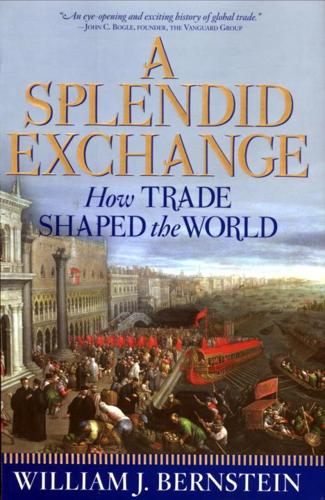
A Splendid Exchange: How Trade Shaped the World
by
William J. Bernstein
Published 5 May 2009
Adam Smith, An Inquiry into the Nature and Causes of the Wealth of Nations (Chicago: University of Chicago Press, 1976), I: 17. 13. Paul Mellars, "The Impossible Coincidence. A Single-Species Model for the Origins of Modem Human Behavior in Europe," Evolutionary Anthropology, 14:1 (February, 2005): 12-27. 14. Thomas L. Friedman, The World Is Flat (New York: Farrar, Straus and Giroux, 2005). 15. Warmington, 35-39; see also William H. McNeill, Plagues and Peoples (New York: Anchor, 1998), 128. 16. Warmington, 279-284. See also Ian Carapace, review of Roman Coins from India (Paula J. Turner) in The Classical Review, 41 (January 1991): 264-265. 17.
…
Freehling, William W., The Road to Disunion vol. 1. (Oxford: Oxford University Press). Freyer, James, and Bruce Sacerdote, "Colonialism and Modern Income-Islands as Natural Experiments," working paper (October 2006), http://www.dartmouth .edu/-jfeyrer/islands.pdf accessed December 22, 2006. Friedman, Thomas L., The World Is Flat (New York: Farrar, Straus and Giroux, 2005). Galloway, J. H., "The Mediterranean Sugar Industry," Geographical Review 67, no. 2 (April 1977): 177-194. Garrett. Geoffrey, "Global Markets and National Politics: Collision Course or Virtuous Cycle?" International Organization 52, no. 4 (Autumn 1998): 787-824.

To Save Everything, Click Here: The Folly of Technological Solutionism
by
Evgeny Morozov
Published 15 Nov 2013
Yes, we should talk about the new forms of fact checking made possible by new technologies, but to imagine that somehow Politifact.com tells us something of interest about the nature of “the Internet”—assuming, for a moment, that such a nature exists—is dead wrong. With Models Like This . . . Weinberger’s commitment to Internet score keeping points to one of the great dangers of relying on “the Internet” as a causal explanation. Once commentators know what they want to say about the universe—that the world is flat, that knowledge is no longer contained in books, that Apple is bad for innovation, that dictatorships are crumbling everywhere, that no one reads serious fiction anymore—“the Internet” can always be invoked to provide a quick and easy (and invariably wrong) explanation. However, the ready availability of such Internet-driven explanations in itself needs to be explained.
…
And prove it they will, never bothering to ask if Google itself is responsible for much of the global homogenization that Schmidt attributes to natural causes or whether there may be other ways of expressing cultural diversity that are not easily captured via a Google search. Still, if we are all the same—and why wouldn’t we be, when the world is flat?—perhaps there is no need for any cosmopolitan intervention at all. Eric Schmidt, it seems, would not be swayed by Zuckerman’s arguments. Facebook’s Mark Zuckerberg, however, might be more open to such suggestions. In one of his most extraordinary public statements, Zuckerberg once proclaimed that the animosities in the Middle East do not “come from a deep hatred of anyone” but rather “from the lack of connectedness and lack of communication, lack of empathy and understanding.”
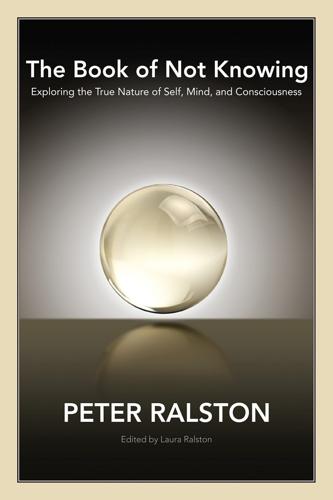
The Book of Not Knowing: Exploring the True Nature of Self, Mind, and Consciousness
by
Peter Ralston
Published 30 Aug 2010
It is only our cultural arrogance and fear of being seen as ignorant that compels us to place such notions in the category of foolish old misconceptions. 2:26 Now once again, pretend that you live in an era in which everyone assumes the world is flat, but this time, try to imagine that you yourself aren’t so certain that it is flat. Since we live in a time in which we are told the earth is round, it’s pretty easy to imagine that we don’t know the earth is flat. But take the time and use your imagination to pretend in earnest and make it real. Rather than just thinking about it, really get it as if it’s an experience you’re having in this moment. Try to feel as if everyone around you knows the world is flat. No one ever really had to sit you down and explain it; you just know it along with everyone else.

Puzzling People: The Labyrinth of the Psychopath
by
Thomas Sheridan
Published 1 Mar 2011
So the next time some billionaire aristocrat or one of their paid-off scientists comes up with an idea to improve the human race and starts pulling out the models of utopian cities and efficiently-managed societies, ask yourself who really gains from this? Them? Or me and my loved ones, my society and humanity as a whole? They will try to ridicule you with statements such as, ‘Well, some people still believe the world is flat…’ or, ‘Do we go back to living in caves…?’ Do not be intimidated by this tactic. Individuals who use such phrases are very often psychopaths or propagandists for psychopaths putting you in a position where you have to defend your intellect so that any chance of a meaningful debate is destroyed.

The Secret War Between Downloading and Uploading: Tales of the Computer as Culture Machine
by
Peter Lunenfeld
Published 31 Mar 2011
A downloadable movie of a Lorenz strange attractor is available at <http://hypertextbook.com/chaos/movies/lorenz.mov>. 28 . Here I am caging the title of the third book of Neal Stephenson’s Baroque Cycle. Stephenson was of course caging Isaac Newton. Neal Stephenson, The System of the World (New York: William Morrow, 2004). 29 . In The World Is Flat: A Brief History of the Twenty-first Century (New York: Farrar, Straus and Giroux, 2005), neoliberal journalist Thomas L. Friedman looks at these same conditions and sees within them the seeds of what he calls Globalism 3.0. 30. Schwartz, The Art of the Long View, 12, 49. 31 . My thanks to design researcher and Parsons professor Lisa Grocott for pushing me to emphasize the “designerly” aspect of bespoke futures. 32 .
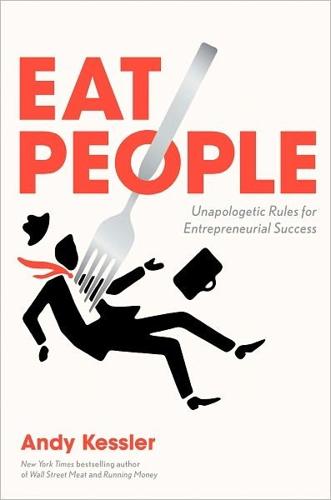
Eat People: And Other Unapologetic Rules for Game-Changing Entrepreneurs
by
Andy Kessler
Published 1 Feb 2011
Anyone who has waited at a baggage claim for forty minutes at JFK Airport or had their cell phone call dropped in mid-conversation or waited four hours for the cable guy to show up (and do I even have to mention the DMV?) must certainly feel that America’s best days are behind us. New York Times columnist Tom Friedman is quick to make these claims, early and often. His 2005 bestseller The World Is Flat described a globalization trend (that had already been in full swing for at least twenty years, in Silicon Valley) as something new and terrifying. James Taranto picked up on a recurring Friedmanism (yes, please use that at cocktail parties): his multiple use of the expression “Jetsons to the Flintstones.”
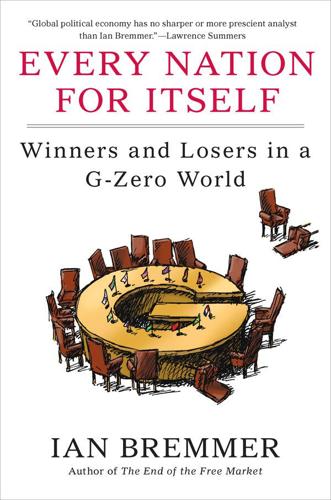
Every Nation for Itself: Winners and Losers in a G-Zero World
by
Ian Bremmer
Published 30 Apr 2012
“The Maldives: A Sinking Paradise,” Green Hotelier, May 20, 2011, http://www.greenhotelier.org/index.php?option=com_content&view=article&id=263&Itemid=2. 2. “Maldives Cabinet Makes a Splash,” BBC News, October 17, 2009, http://news.bbc.co.uk/2/hi/8311838.stm. 3. See Jagdish Bhagwati, In Defense of Globalization (New York: Oxford University Press, 2004); Thomas Friedman, The World Is Flat: A Brief History of the Twenty-First Century (New York: Farrar, Straus and Giroux, 2005); and Martin Wolf, Why Globalization Works (New Haven, CT: Yale University Press, 2004). 4. See Dani Rodrik, The Globalization Paradox: Democracy and the Future of the World Economy (New York: Norton, 2011); Michel Chossudovsky, The Globalization of Poverty and the New World Order, 2nd ed.
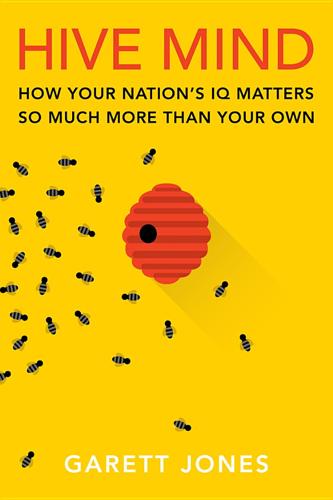
Hive Mind: How Your Nation’s IQ Matters So Much More Than Your Own
by
Garett Jones
Published 15 Feb 2015
But since consuming is the opposite of saving, people who buy more are saving less—unless perchance when the neighbor wins the lottery you decide to work just enough extra hours to pay for that nicer car. Personally I would welcome more patient neighbors, neighbors who could set an example of frugality, since it would make it that much easier for me to wait another year or two before getting a new roof or asphalting the driveway again. Frugal peers matter. When the World Is Flat, the Frugal Inherit It So far, I’ve followed Ramsey’s original story: if your country saves more, then your country builds up a bigger capital stock. But don’t some banks lend money to businesses in other countries? As a matter of fact, didn’t a lot of banks in Asia and Europe lend money to U.S. homeowners in the run-up to the global financial crisis?

The Victory Machine: The Making and Unmaking of the Warriors Dynasty
by
Ethan Sherwood Strauss
Published 13 Apr 2020
“[Gregg Popovich] tells me I share too much,” Kerr said of his fairly open media sessions. “He texts me when I give something away in a press conference. But he comes from the military and I’m the child of academics.” And so we got into the origins of playing with joy. “I saw Tom Friedman the other day,” he said of meeting with The World Is Flat author and New York Times columnist. “I asked him about the lack of White House press briefings.” This seemed like a non sequitur, perhaps a current events–inspired digression into the errors of a president Kerr isn’t too fond of. But indeed, the story was going somewhere. “I expected Friedman to answer with the reason of it’s important that the American people deserve to know what’s going on.
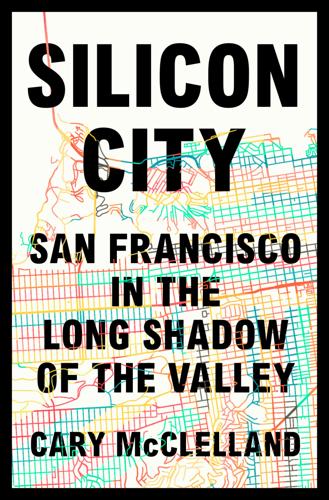
Silicon City: San Francisco in the Long Shadow of the Valley
by
Cary McClelland
Published 8 Oct 2018
There is nothing easy. You start working very early, and then you get to bed very late. You don’t know any better. Just need to work hard. Many people went through even worse than me, and they kept going. They kept going, so I kept going. It reminds me of that proverb—from Thomas Friedman’s The World Is Flat. That every morning in Africa, the sun comes up, and a lion has to run faster than the slowest gazelle. Otherwise, he will starve to death. Every morning in Africa, a gazelle wakes up, and it knows that it must outrun the fastest lion. So it doesn’t matter if you’re a lion or gazelle in Africa.
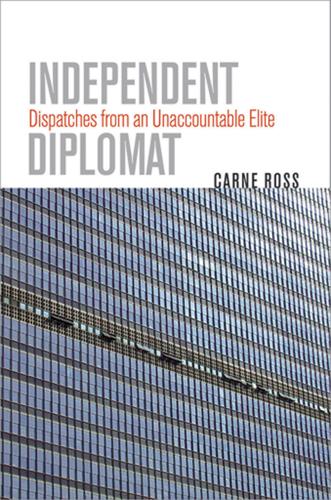
Independent Diplomat: Dispatches From an Unaccountable Elite
by
Carne Ross
Published 25 Apr 2007
Oddly, the more complicated our globalising world becomes, the more those commenting on it tend to such simplification. Confounded by the world’s complexity, we grope for simplifying metaphors — the big idea — to explain what is going on. Academics and commentators duly oblige, offering up “the world is flat”, “the clash of civilisations” or “the moment” (when America could save the world). Those consuming these nostrums have perhaps only themselves to blame. The outlets of the mass media are in sharp competition. The measured commentary attracts less attention than the sensational. A recent study by Philip E.
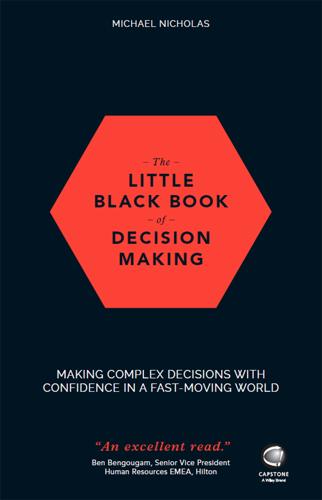
The Little Black Book of Decision Making
by
Michael Nicholas
Published 21 Jun 2017
This kind of learned helplessness can have a dramatic and negative impact on decision making. At the heart of the problem lie unexplored assumptions – beliefs or ideas that seem true, that are accepted as certain, but which haven't been properly tested or proven. Such assumptions may: always have been false, but the realisation of this fact only came later; the world is flat at one time have been appropriate principles upon which to base decisions, but they have since been invalidated by some sort of change of circumstances; there was once a lot of money to be made renting videos always have been false, but no one has realised yet. This is probably the most difficult category to recognise, as we will examine in further detail in Chapter 4.
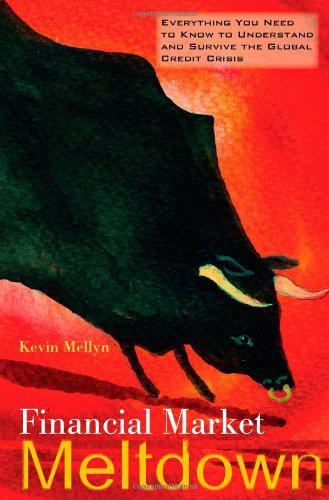
Financial Market Meltdown: Everything You Need to Know to Understand and Survive the Global Credit Crisis
by
Kevin Mellyn
Published 30 Sep 2009
The period of 1982 through 2007 saw the return to a joined-up global financial system not seen since the First World War. In fact, prizewinning journalist Tom Friedman of the New York Times suggested that the period of state control of the key global economies between 1914 and 1989 was really a long timeout from a much longer trend towards a global market economy. His 2005 bestselling book, The World Is Flat, is almost breathless in its description of a world where technology and global finance has integrated billions of producers and consumers into a dynamic global economy. This is a world of incredible advances in human welfare combined with massive insecurity in daily life. Between 1989 and the market meltdown in 2008, over a billion human beings escaped absolute poverty and hundreds of millions more began to enjoy something like middle class prosperity as China, India, and the former Soviet Empire became part of the global market economy.

How to Write Your Will: The Complete Guide to Structuring Your Will, Inheritance Tax Planning, Probate and Administering an Estate
by
Marlene Garsia
Published 1 Jan 2008
The Show is the largest gathering of Shire Horses in the Country. The Society also organises the Shire Horse of the Year Show. To find out more about the Shire Horse Society please contact 01733 234451 or visit the website www.shire-horse.org.uk. advertisement feature xxxvii Don’t let anyone tell you that the world is flat www.koganpage.com Fresh thinking for business today You’re reading one of the thousands of books published by Kogan Page, Europe’s largest independent business publisher. We publish a range of books and electronic products covering business, management, marketing, logistics, HR, careers and education.

Future Crimes: Everything Is Connected, Everyone Is Vulnerable and What We Can Do About It
by
Marc Goodman
Published 24 Feb 2015
HV6773.G66 2015 364.16′8—dc23 2014038053 v3.1 To all my teachers, who have taught me so much CONTENTS Cover Title Page Copyright Dedication PROLOGUE: THE IRRATIONAL OPTIMIST: HOW I GOT THIS WAY PART ONE A GATHERING STORM CHAPTER 1: CONNECTED, DEPENDENT, AND VULNERABLE Progress and Peril in a Connected World The World Is Flat (and Wide Open) The Good Old Days of Cyber Crime The Malware Explosion The Security Illusion CHAPTER 2: SYSTEM CRASH A Vulnerable Global Information Grid WHOIS It? CHAPTER 3: MOORE’S OUTLAWS The World of Exponentials The Crime Singularity Control the Code, Control the World CHAPTER 4: YOU’RE NOT THE CUSTOMER, YOU’RE THE PRODUCT Our Growing Digital World—What They Never Told You The Social Network and Its Inventory—You You’re Leaking—How They Do It The Most Expensive Things in Life Are Free Terms and Conditions Apply (Against You) Mobile Me Pilfering Your Data?
…
Each day, we plug more and more of our daily lives into the global information grid without pausing to ask what it all means. Mat Honan found out the hard way, as have thousands of others. But what should happen if and when the technological trappings of our modern society—the foundational tools upon which we are utterly dependent—all go away? What is humanity’s backup plan? In fact, none exists. The World Is Flat (and Wide Open) For centuries, the Westphalian system of sovereign nation-states has prevailed in our world. It meant that countries were to be sovereign in their territory, with no role for outside authorities to meddle in a nation’s domestic affairs. The Westphalian structure was preserved through a system of borders, armies, guards, gates, and guns.
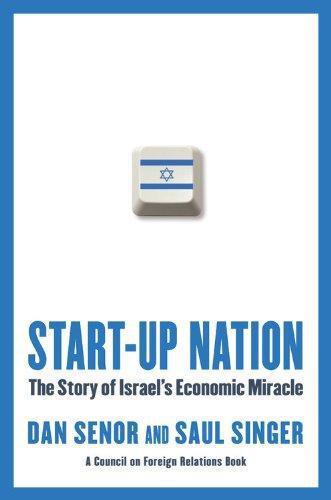
Start-Up Nation: The Story of Israel's Economic Miracle
by
Dan Senor
and
Saul Singer
Published 3 Nov 2009
“AOL’s ICQ to Debut a Big Makeover.” Market Watch, April 20, 2004. http://www.marketwatch.com/News/Story/Story.aspx?guid={308B699C-D4E9-4CD3-A67A-389DEC028B35}&siteid=google&dist=google. Retrieved January 2008. Friedlin, Jennifer. “Woman on a Mission.” Jerusalem Post, April 20, 1997. Friedman, Thomas L. The World Is Flat: A Brief History of the Twenty-first Century. New York: Picador, 2007. Frohman, Dov. “Leadership Under Fire.” Harvard Business Review, December 2006. Frohman, Dov, with Robert Howard. Leadership the Hard Way: Why Leadership Can’t Be Taught—and How You Can Learn It Anyway. San Francisco: Jossey-Bass, 2008.
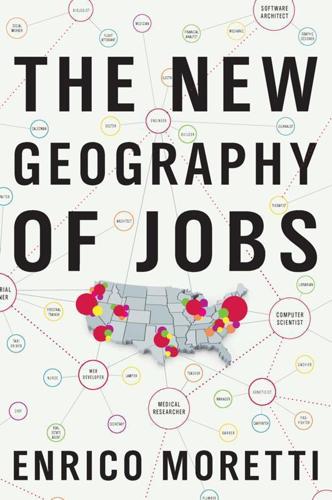
The New Geography of Jobs
by
Enrico Moretti
Published 21 May 2012
As we will discover, the winners and losers in this process are not always the people we expect. It wasn’t supposed to be this way. At the peak of the dot-com frenzy in 2000, observers of all stripes almost unanimously concluded that “the New Economy gives both companies and workers more locational freedom.” In The World Is Flat, one of the most influential books about globalization, Thomas Friedman famously argued that cell phones, e-mail, and the Internet lowered communication barriers so much that location was irrelevant. Distance was dead. Geography didn’t matter. This argument has continued to resonate. The idea is that no matter where people live, they can share knowledge and move products at virtually no cost.

The Eureka Factor
by
John Kounios
Published 14 Apr 2015
Carey et al., “Psychological Change from the Inside Looking Out: A Qualitative Investigation,” Counselling and Psychotherapy Research 7 (2007): 178–87. 2 The quote from Oliver Wendell Holmes, Sr., is derived from The Professor at the Breakfast-Table by Oliver Wendell Holmes (page 235): archive.org/stream/professoratbrea12holmgoog#page/n233/mode/2up/search/experience. The Information Vortex 1 The IBM survey of CEOs is described in IBM Global Business Services, Capitalizing on Complexity: Insights from the Global Chief Executive Officer Study (2010). Eurekanomics 1 Thomas Friedman’s notion of the “flat world” is described in Friedman, The World Is Flat: A Brief History of the Twenty-First Century (New York: Macmillan, 2006). Judy Estrin, among others, has discussed the notion that the United States is experiencing an “innovation gap.” See Claire Cain Miller, “Silicon Valley Entrepreneur Warns of U.S. Innovation Slowdown,” The New York Times, September 1, 2008.
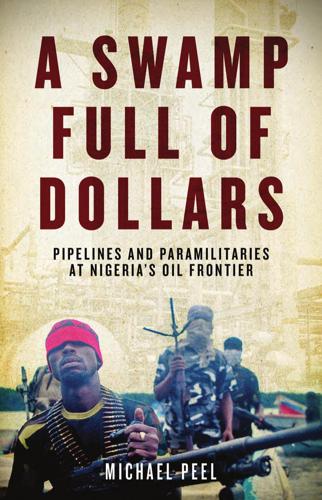
A Swamp Full of Dollars: Pipelines and Paramilitaries at Nigeria's Oil Frontier
by
Michael Peel
Published 1 Jan 2009
The captain says – with a laugh – that he hopes to use the Gulf of Guinea mission to ‘dispel a few myths’ about the USA and ‘hopefully not reinforce anything that’s bad’. Like his number two, Commander Hendrickson, he invokes a contentious – some would say glib – aphorism popularized by Thomas Friedman. ‘The world is flat these days,’ the captain says, meaning that even powerful nations have to build trust with other countries. On a personal level, his overseas mis- 150 A SWAMP FULL OF DOLLARS sions have opened his eyes to all sorts of things, not least the USA’s uniquely large appetite – at least until the international financial crisis took hold – for gas-guzzling vehicles and other consumerist trappings.

Twilight of the Elites: America After Meritocracy
by
Chris Hayes
Published 11 Jun 2012
The more succinct articulation of this vision is the mythical “level playing field” metaphor, which has become a staple of the political rhetoric of both parties. When an Indian tycoon casually suggested to Thomas Friedman that the explosion of the Internet, cheap computing, and fiber-optic cables meant that “the playing field is being flattened,” Friedman had happened upon the uniting conceit for his bestseller The World Is Flat. What Friedman is actually describing and effusively praising is a kind of neoliberal globalized version of meritocracy where Indian and Chinese software engineers play the role that hard-studying Jews from Brooklyn once did when they crashed the gates of Harvard. Michael Young paints the meritocracy as an idea that originated on the left but came to devour it.
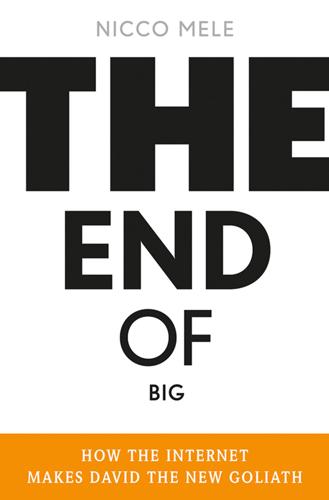
The End of Big: How the Internet Makes David the New Goliath
by
Nicco Mele
Published 14 Apr 2013
Innumerable other ads trumpet the global coverage of mobile phones or the ability to sustain personal contact with important people in your life across vast stretches of geography and irrespective of national political boundaries. Politically, such advertising jibes with free market capitalism and, specifically, with the pro-globalization politics espoused by many writers and policymakers on both sides of the aisle, most famously by the New York Times columnist Thomas Friedman. In his influential 2005 book The World Is Flat, Friedman argued that the world was shrinking and that many of the traditional rules of economics were being rewritten as the barriers to competition were being flattened. Nation-states seeking to compete in the new global economy needed to get out of the way and reduce administrative barriers that had conventionally inhibited the flow of people, money, and ideas.
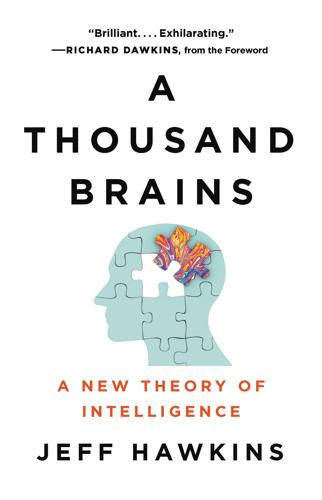
A Thousand Brains: A New Theory of Intelligence
by
Jeff Hawkins
Published 15 Nov 2021
Therefore, the sufferer believes the limb is still in some pose, even though it does not exist in the physical world. The phantom limb is an example of a false belief. (The perception of the phantom limb typically disappears over a few months as the brain adjusts its model of the body, but for some people it can last years.) Now consider another false model. Some people believe that the world is flat. For tens of thousands of years, every human’s experiences were consistent with the world being flat. The curvature of Earth is so slight that, through the course of a life, it was not possible to detect it. There are a few subtle inconsistencies, such as how the hull of a ship disappears over the horizon before the masts, but this is hard to see even with excellent eyesight.

Lab Rats: How Silicon Valley Made Work Miserable for the Rest of Us
by
Dan Lyons
Published 22 Oct 2018
Not coincidentally, the year 2000 was when outsourcing really started taking off, thanks to speedy and reliable Internet connections delivered over a global network of fiber-optic cables. Thomas Friedman dubbed the phenomenon “Globalization 3.0” and marked its beginning to the year 2000, in his book The World Is Flat. The year 2000 is also a point where the economies of China and India take off; the charts shoot skyward. Another strange phenomenon related to the year 2000 involves the ratio between the compensation of CEOs and average workers. In 1980, the average big-company CEO earned 42 times as much as the average worker, according to the Institute for Policy Studies.
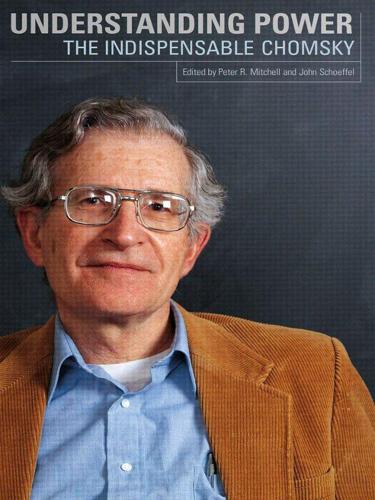
Understanding Power
by
Noam Chomsky
Published 26 Jul 2010
I don’t know how many of you have been following the Z online Bulletin Board lately [a computer network discussion forum], but there’s been an ongoing conversation there in which people have pointed out—and they’re right, I don’t know any answer to it—that they’ll come to people with, not necessarily just fact-sheets, but even detailed, elaborate arguments with a lot of evidence and data, but it’s different from what everyone has always heard, and the standard response is, “Well, why should I believe you?” And that’s not an unreasonable response. I mean, if somebody came to you with a three-volume work with a lot of footnotes and statistics and mathematical calculations which proved that the world is flat, you’d be very wise to be cautious, no matter how impressive it looked. And that’s the way we’re coming to people most of the time—we’re telling them that the world is flat, and they’re not going to believe all your evidence. They should, in fact, ask questions like that. And that’s just a hard situation for organizers to overcome: you only really overcome that by winning confidence, and helping people gain a broader understanding for themselves, bit by bit.
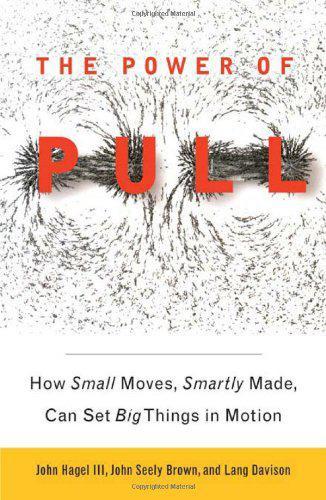
The Power of Pull: How Small Moves, Smartly Made, Can Set Big Things in Motion
by
John Hagel Iii
and
John Seely Brown
Published 12 Apr 2010
A Crowd of One: The Future of Individual Identity. New York: PublicAffairs, 2007. Corneliussen, Hilde G., and Jill Rettberg, eds. Digital Culture, Play, and Identity: A World of Warcraft Reader. Cambridge: MIT Press, 2008. Florida, Richard. The Rise of the Creative Class. New York: Basic Books, 2002. Friedman, Thomas. The World Is Flat. New York: Farrar, Straus and Giroux, 2005. Hagel, John III, and John Seely Brown. Edge Perspectives. www.edgeperspectives.com. Hall, Peter. Cities in Civilization. New York: Pantheon Books, 1998. Hock, Dee. Birth of the Chaordic Age. San Francisco: Berrett-Koehler, 1999. Iansiti, Marco, and Roy Levien.

Cyber War: The Next Threat to National Security and What to Do About It
by
Richard A. Clarke
and
Robert Knake
Published 15 Dec 2010
Servers are made by HP, Dell, IBM, and a large number of others, depending upon their purpose. The software they run is written mainly by Microsoft, Oracle, IBM, and Apple, but also by many other companies. Although these are all U.S. corporations, the machines (and sometimes the code that runs on them) come from many places. In The World Is Flat, Thomas Friedman traces the production of his Dell Inspiron 600m notebook from the phone order he places with a customer-service representative in India to its delivery at his front door in suburban Maryland. His computer was assembled at a factory in Penang, Malaysia. It was “co-designed” by a team of Dell engineers in Austin and notebook designers in Taiwan.
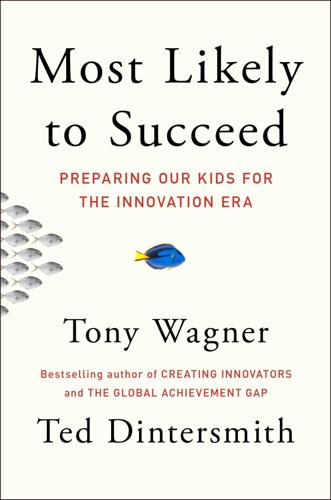
Most Likely to Succeed: Preparing Our Kids for the Innovation Era
by
Tony Wagner
and
Ted Dintersmith
Published 17 Aug 2015
The Internet went from being a communications protocol used by a handful of labs to a force reshaping every aspect of our world. Today, more than a billion people have instant access to resources beyond the imagination of twentieth-century science fiction. Books have been devoted to chronicling these changes (most notably our friend Thomas Friedman’s outstanding The World Is Flat). This convergence of technology means that everyone has access to resources beyond what even the most powerful organizations could draw on just three short decades ago. In a very real sense, each of us is now supported by our own personal supercomputer, thousands of software developers, millions of personal research assistants, experts in every domain, and instant access to virtually any essay, article, book, or video ever made.
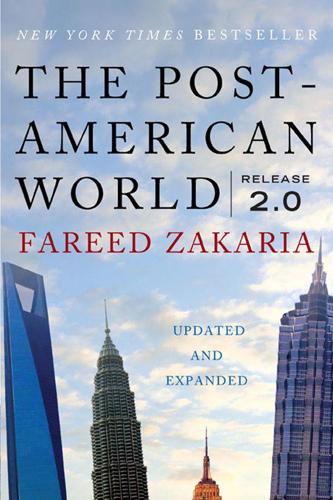
The Post-American World: Release 2.0
by
Fareed Zakaria
Published 1 Jan 2008
Naazneen Barma et al., “The World without the West,” National Interest, no. 90 (July/Aug. 2007): 23–30. 10. See a survey from the Economist on “The New Titans” in the Sept. 14, 2006, issue. 11. Jim O’Neill and Anna Stupnytska, The Long-term Outlook for the BRICs and N-11 Post Crisis (Goldman Sachs, Global Eonomics Paper no. 192, Dec. 4, 2009). 12. Thomas L. Friedman, The World Is Flat: A Brief History of the Twenty-first Century (New York: Farrar, Straus and Giroux, 2006), 226. Andy Grove’s statement is quoted in Clyde Prestowitz, Three Billion New Capitalists: The Great Shift of Wealth and Power to the East (New York: Basic Books, 2005), 8. 13. Gabor Steingart, The War for Wealth: Why Globalization Is Bleeding the West of Its Prosperity (New York: McGraw-Hill, 2008). 3.

Mindwise: Why We Misunderstand What Others Think, Believe, Feel, and Want
by
Nicholas Epley
Published 11 Feb 2014
OUT OF SIGHT, OUT OF MIND In ancient human history, most people believed that the world was flat because that’s exactly how it looked. No amount of squinting or jumping or moving this way and that made it look any different. No person ever said it looked curvy if you stand right here, or exactly like a ball if you were way up there. Our distant ancestors therefore tended to believe their eyes. The world is flat. It’s impossible to fault our forebears. They were smart people who came by this mistake honestly, believing what they could see and being unaware of what they couldn’t. Recognizing roundness requires a broader perspective than what your eyes at ground level can see.4 Judging a mind based only on a person’s behavior can resemble flat-earth thinking because understanding the mind of any person requires a broader perspective than our experience routinely provides.
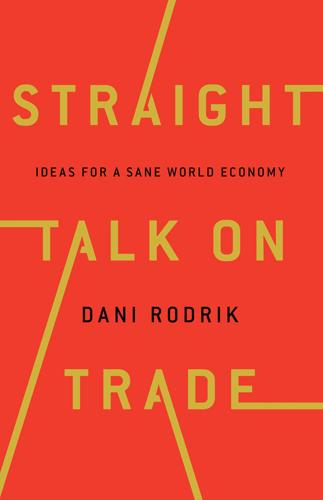
Straight Talk on Trade: Ideas for a Sane World Economy
by
Dani Rodrik
Published 8 Oct 2017
Lost Out on iPhone Work,” New York Times, January 21, 2012, http://www.nytimes.com/2012/01/22/business/apple-america-and-a-squeezed-middle-class.html?pagewanted=all. 28. Edward Leamer, “A Flat World, a Level Playing Field, a Small World After All, or None of the Above? A Review of Thomas L. Friedman’s The World is Flat,” Journal of Economic Literature, vol. 45(1), 2007: 83–126. 29. Kevin Morgan, “The Exaggerated Death of Geography: Learning, Proximity, and Territorial Innovation Systems,” Journal of Economic Geography, vol. 4, 2004: 3–21. 30. Josiah Ober, “Wealthy Hellas,” Presidential Address, Transactions of the American Philological Association, vol. 140, 2010: 241–286. 31.
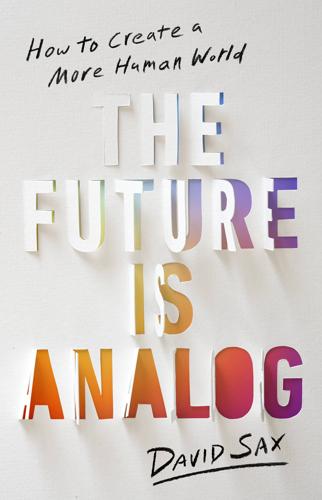
The Future Is Analog: How to Create a More Human World
by
David Sax
Published 15 Jan 2022
In forty years of studying cities, Florida told me, he never once encountered an instance of pandemics or other biological disasters significantly slowing their arc of growth. At its core, Florida said, what makes cities great is not the specific shops and restaurants or companies and jobs you find there. “What makes cities great is analog,” Florida said. “Everyone wants to believe, like Thomas Friedman writes, that the world is flat” and location ultimately doesn’t matter. “Every technology has promised to do this, from the telegram to the phone to the internet, and yet every time people are clustered around cities. If you look around the world, the pace of urbanization continues,” Florida said. The idea that the pandemic and technology had thrust global city life into an irreversible decline?
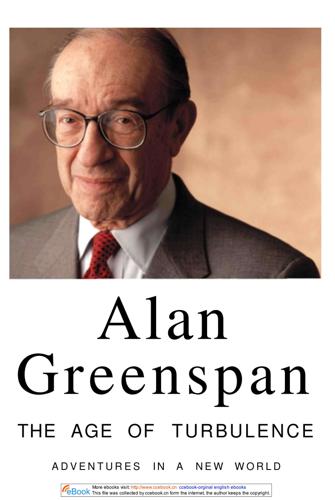
The Age of Turbulence: Adventures in a New World (Hardback) - Common
by
Alan Greenspan
Published 14 Jun 2007
My r e m e m b r a n c e s of t h e collapse of centralized planning and t h e growth of global capitalist markets (chapter 6, "The Fall of t h e Wall"; chapter 19, "Globalization and Regulation"; and elsewhere in this book) were enhanced by Daniel Yergin and Joseph Stanislaw's seminal The Commanding Heights; t h e corresponding W e b site (www.pbs.org/commanding heights) features interviews w i t h world leaders and economists t h a t are sometimes q u o t e d in these pages. T o m Friedman's The World Is Flat filled in a lot of gaps in my understanding of recent t e c h n o logical advances. Interviews for this book were conducted with Bill Clinton, Stephen Breyer, Bob Rubin, Martin Anderson, Gene Sperling, Paul David, and others. This account is also informed by t h e work of my biographers. And t h e narrative throughout is influenced as well as inspired by the memoir of my wife, Andrea Mitchell, Talking Back . . . to Presidents, Dictators, and Assorted Scoundrels.
…
Friedman, Milton, and Rose D. Friedman. Free to Choose: A Personal Statement. N e w York: Harcourt Brace Jovanovich, 1980. Friedman, Milton, and Anna (Jacobson) Schwartz. A Monetary History of the United States, 1867-1960. Princeton, N.J.: Princet o n University Press, 1963. Friedman, T h o m a s L. The World Is Flat: A Brief History of the Twenty-first Century, N e w York: Farrar, Straus & Giroux, 2 0 0 5 . Garment, Leonard. Crazy Rhythm: From Brooklyn and Jazz to Nixon's White House, Watergate, and Beyond. N e w York: Times Books, 1997. Gerstner, Louis V., Jr. "Math Teacher Pay D o e s n ' t A d d Up." Christian Science Monitor, D e c e m b e r 13, 2 0 0 4 .
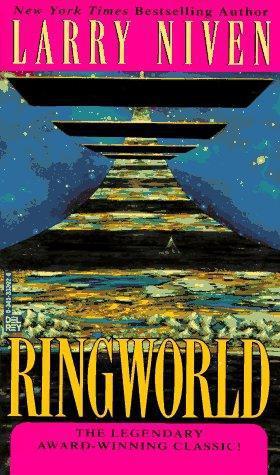
Ringworld
by
Larry Niven
Published 12 Sep 1985
Like the void mist of Mount Lookitthat, seen decades ago and light-centuries away ... like the undistorted deeps of space, as seen by a Belt miner in a singleship ... the Ringworld’s horizon could grip the eye and the mind of a man before he was aware of the danger. Louis turned to face into the gully. He shouted, “The world is flat!” They looked up at him. “We ripped quite a line coming down. I can’t see that there’s anything living around here, so we were lucky. Where we hit, the earth splashed; I can see a scattering of small craters, secondary meteorites, back along the way we came. He turned. “In the other direction ...” and he stopped.
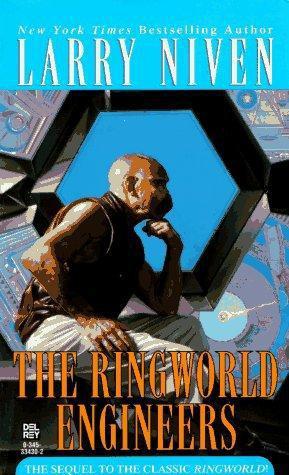
The Ringworld engineers
by
Larry Niven
Published 12 Nov 1985
Chapter 8 - Ringworld From a thousand miles above the Earth—from, say, a space station in a two-hour orbit—the Earth is a great sphere. The kingdoms of the world revolve below. Details disappear around the horizon’s curve; other, hidden features rotate into view. At night, glowing cities outline the continents. But from a thousand miles above the Ringworld, the world is flat, and the kingdoms thereof are all there at once. The rim wall was of the same stuff as the Ringworld floor. Louis had walked on it, in places where eroded landscape let it show through. It had been grayish, translucent, and terribly slippery. Here the surface had been roughened for traction.

Future Files: A Brief History of the Next 50 Years
by
Richard Watson
Published 1 Jan 2008
So perhaps the question we should be asking is whether the nature of work will change in the future and if so, how and to what? According to the management thinker and philosopher Charles Handy, there are three key forces driving change at work. The first is our old friend globalization. As Thomas Friedman argues in The World Is Flat, a single global market is emerging for everything 278 Work and Business 279 from products to people. In theory, this means that you will soon be competing against everyone else on the planet for your job, although in practice there will be a limit to what gets outsourced. Nevertheless, if your current job can be done cheaper somewhere else, it might be worth looking at other employment opportunities.
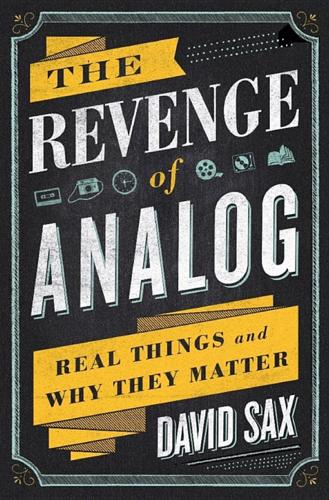
The Revenge of Analog: Real Things and Why They Matter
by
David Sax
Published 8 Nov 2016
This was the storyline pushed by the stakeholders of the digital economy, which included business leaders, free-market economists, politicians, and the media. A cheerleader that stands out for me from this time is the mustachioed New York Times columnist Thomas Friedman, who extolled the virtues of the new global economy in his articles as well as his best-selling books The Lexus and the Olive Tree and The World Is Flat. Friedman always seemed to be talking about meeting a new friend, the young, Western-educated prince of some formerly poor nation, who was in the process of transforming that country by rapidly expanding the Internet, or shifting the economy from farming to writing software for American companies, in a process known as outsourcing.
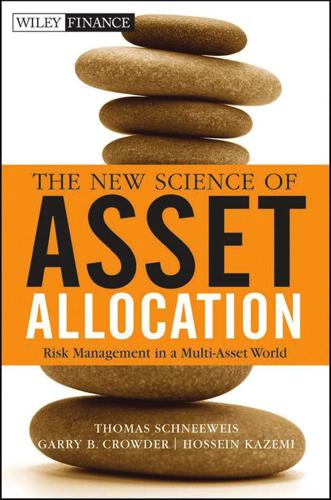
The New Science of Asset Allocation: Risk Management in a Multi-Asset World
by
Thomas Schneeweis
,
Garry B. Crowder
and
Hossein Kazemi
Published 8 Mar 2010
The shortcomings of such models are obvious in current global markets in which the dynamics of technology, regulation, and economics make historic data of little use and require a more dynamic means of tracking changing risk relationships. NOTES 1. For a general history of the development of the concept of risk, see Peter Bernstein (1996). 2. Rather than mentioning any one source, investors are directed to web sites such as www.gloriamundi.com. 3. Thomas Friedman, author of The World Is Flat (Farrar, Straus, and Giroux, 2005), was criticized recently for writing a new book that questioned some of his earlier writings. The critic was upset that he had paid $50 for a book that the author later had issues with. Full disclosure: The world changes such that what was right in the past may be wrong in the future, including some of the conclusions expressed in this book. 4.
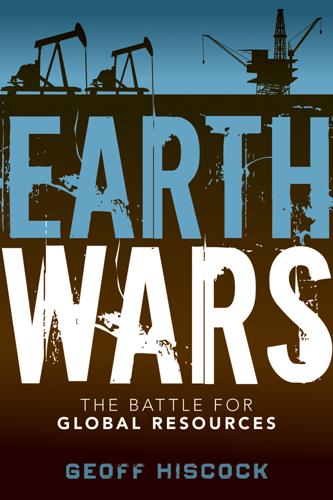
Earth Wars: The Battle for Global Resources
by
Geoff Hiscock
Published 23 Apr 2012
Foo, Check Teck. Reminiscences of an Ancient Strategist: The Mind of Sun Tzu. Aldershot, UK: Gower Publishing, 1998, 535 pp. Foreign Spies Stealing US Economic Secrets in Cyberspace. Washington DC, US National CounterIntelligence Executive report to Congress, October 2011. Friedman, Thomas L. The World Is Flat: The Globalized World in the Twenty-First Century. London: Penguin Books, updated edition 2006, 600 pp. Garnaut, Ross. Australia and the Northeast Asia Ascendancy. Canberra: Australian Government Publishing Service, 1989. Garnaut, Ross. China: The Next 20 Years of Reform and Development,. Canberra: Australian National University E Press, Department of Foreign Affairs, 2010.
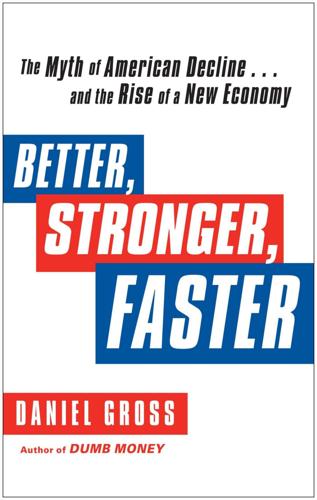
Better, Stronger, Faster: The Myth of American Decline . . . And the Rise of a New Economy
by
Daniel Gross
Published 7 May 2012
The world really needs the United States—its economy and the products, services, concepts, and business models it creates. When the global economy slows down, the United States is still capable of serving as an engine of growth. In a year in which the United States grows at a rate of 3 percent and the rest of the world is flat, the global economy will still expand. When it’s growing at 3 percent, the United States each year produces an incremental amount of economic activity equal to the entire GDP of Greece. Even when it expands slowly, its businesses and consumers still provide work for hundreds of millions of people around the world.
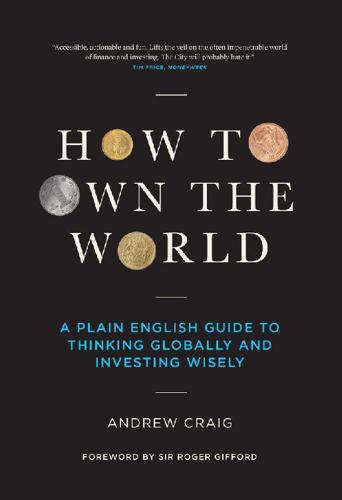
How to Own the World: A Plain English Guide to Thinking Globally and Investing Wisely
by
Andrew Craig
Published 6 Sep 2015
Hoboken: John Wiley & Sons, 2010. Franken, Al. Lies and the Lying Liars Who Tell Them: A Fair and Balanced Look at the Right. New York: Dutton, 2003. Frieden, Jeffry A., and David A. Lake. International Political Economy: Perspectives on Global Power and Wealth. New York: St. Martin’s Press, 1987. Friedman, Thomas L. The World Is Flat: A Brief History of the Twenty-First Century. New York: Farrar, Straus and Giroux, 2006. Frisby, Dominic. Bitcoin: The Future of Money? Unbound, 2014. ———. Life after the State. Unbound, 2013. Fukuyama, Francis. The End of History and the Last Man. New York: Free Press, 1992. ———. Trust: The Social Virtues and the Creation of Prosperity.

Hate Inc.: Why Today’s Media Makes Us Despise One Another
by
Matt Taibbi
Published 7 Oct 2019
Again, this attitude, which allowed me to write with enthusiasm about the candidacy of Barack Obama but critically of his failure to enforce laws governing Wall Street crime, was once considered proper and healthy for a journalist. Today, it doesn’t fit within either of the currently allowed categories of thought in commercial media. Worse, while the foibles of the press once mostly seemed amusing (I still chuckle with envy at New York Times columnist Thomas Friedman writing a smash bestseller called The World Is Flat based upon the faulty premise that a flat world is more interconnected than a round one) I began a few years ago to be conscious of the business drifting toward something truly villainous. In 2016 especially, news reporters began to consciously divide and radicalize audiences. The cover was that we were merely “calling out” our divisive new president, Donald Trump.
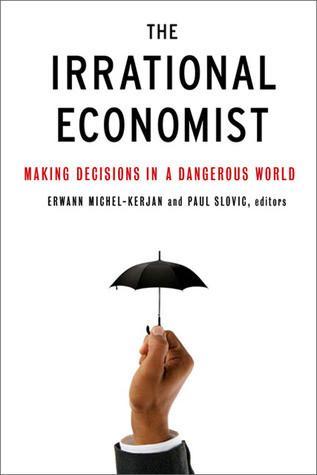
The Irrational Economist: Making Decisions in a Dangerous World
by
Erwann Michel-Kerjan
and
Paul Slovic
Published 5 Jan 2010
But one of the hallmarks of the twenty-first century will likely be more and more unthinkable events, previously unseen contexts, and pressure to react extremely quickly, even when we cannot predict the cascading impact our actions might have. That is because the world has been evolving at an accelerating speed. Physical frontiers between economies are disappearing, as described by Thomas Friedman in his best-selling book, The World Is Flat. Increasingly widespread social and economic activities have turned our planet into an interdependent village. Communication costs are close to zero, goods and people travel faster and more cheaply than ever before, and knowledge is shared with unprecedented ease on the Internet and through emerging social networks.
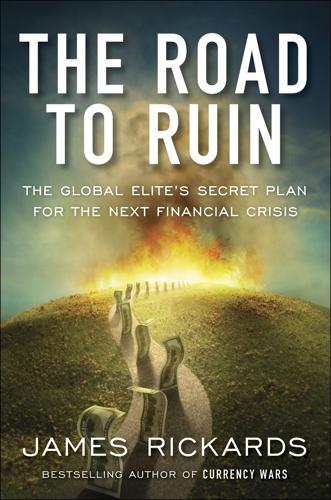
The Road to Ruin: The Global Elites' Secret Plan for the Next Financial Crisis
by
James Rickards
Published 15 Nov 2016
Friedman, Allan, and P. W. Singer. Cybersecurity and Cyberwar: What Everyone Needs to Know. New York: Oxford University Press, 2014. Friedman, Milton, and Anna Jacobson Schwartz. A Monetary History of the United States, 1867–1960. Princeton, NJ: Princeton University Press, 1993. Friedman, Thomas L. The World Is Flat: A Brief History of the Twenty-first Century. New York: Farrar, Straus and Giroux, 2005. Gardner, Dan, and Philip E. Tetlock. Superforecasting: The Art and Science of Prediction. New York: Crown, 2015. Gilder, George. The Scandal of Money: Why Wall Street Recovers but the Economy Never Does.
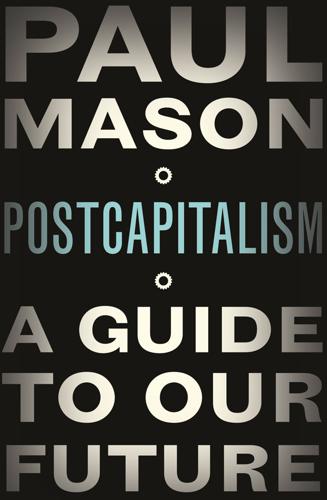
Postcapitalism: A Guide to Our Future
by
Paul Mason
Published 29 Jul 2015
When the global finance system collapsed in 2008, it didn’t take long to discover the proximate cause: the debts hidden in mispriced products known as ‘structured investment vehicles’; the network of offshore and unregulated companies known – once it had started to implode – as the ‘shadow banking system’.2 Then, as the prosecutions began, we were able to see the scale of the criminality that had become normal in the run-up to the crisis.3 Ultimately, though, we were all flying blind. And that’s because there is no model of a neoliberal economic crisis. Even if you don’t buy the whole ideology – the end of history, the world is flat, friction-free capitalism – the basic idea behind the system is that markets correct themselves. The possibility that neoliberalism could collapse under its own contradictions was then, and remains now, unacceptable to most. Seven years on, the system has been stabilized. By running government debts close to 100 per cent of GDP, and by printing money worth around a sixth of the world’s output, America, Britain, Europe and Japan injected a shot of adrenaline to counteract the seizure.
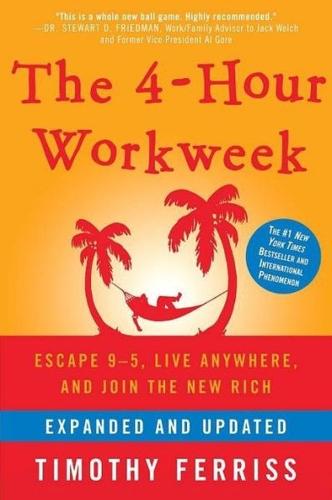
The 4-Hour Workweek: Escape 9-5, Live Anywhere, and Join the New Rich
by
Timothy Ferriss
Published 1 Jan 2007
—HENRY DAVID THOREAU, naturalist If I told you this story, you wouldn’t believe me, so I’ll let AJ tell it. It will set the stage for even more incredible things to come, all of which you will do yourself. My Outsourced Life A true account by AJ Jacobs, editor-at-large at Esquire magazine (ellipses represent passage of time between entries) IT BEGAN a month ago. I was midway through The World Is Flat, the bestseller by Tom Friedman. I like Friedman, despite his puzzling decision to wear a mustache. His book is all about how outsourcing to India and China is not just for tech support and carmakers but is poised to transform every industry in America, from law to banking to accounting. I don’t have a corporation; I don’t even have an up-to-date business card.
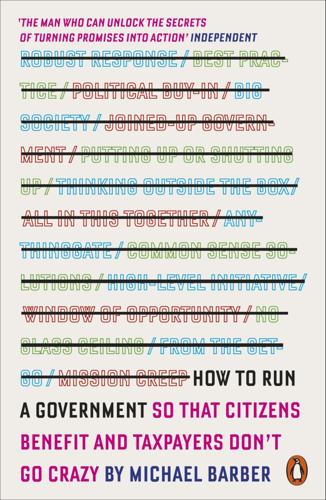
How to Run a Government: So That Citizens Benefit and Taxpayers Don't Go Crazy
by
Michael Barber
Published 12 Mar 2015
(eds.) (2004), Reinventing Government Again, London, Social Market Foundation Colville, J. (1985), The Fringes of Power: Downing Street Diaries 1939–1955, London, Weidenfeld & Nicolson Connolly, S., Bevan, G. and Mays, N. (2011), Funding and Performance of Healthcare Systems in the Four Countries of the UK Before and After Devolution, London, Nuffield Trust Dallek, R. (2007), Nixon and Kissinger: Partners in Power, London, Allen Lane Darling, A. (2011), Back from the Brink: 1000 Days at No. 11, London, Atlantic Davis, J. (2007), Prime Ministers and Whitehall 1960–74, London, Hambledon Continuum Davis, S., Lukomnik, J. and Pitt-Watson, D. (2006), The New Capitalists: How Citizen Investors Are Reshaping the Corporate Agenda, Cambridge MA, Harvard Business School Press de Madariaga, I. (1981), Russia in the Age of Catherine the Great, London, Phoenix DiCerbo, K. and Behrens, J. (2014), Impacts of the Digital Ocean on Education, London, Pearson Dixon, N. (1994), On the Psychology of Military Incompetence, London, Pimlico Doz, Y. and Kosonen, M. (2014), Governments for the Future: Building the Strategic and Agile State, Helsinki, Sitra Drèze, J. and Sen, A. (2013), An Uncertain Glory: India and Its Contradictions, London, Allen Lane Duhigg, C. (2013), The Power of Habit: Why We Do What We Do in Life and Business, London, Random House Dumas, V., Lafuente, M. and Parrado, S. (2013), Strengthening the Center of Government for Results in Chile: The Experience of the Ministry of the Presidency and its President’s Delivery Unit (2010–13), Washington, Inter-American Development Bank Easterly, W. (2014), The Tyranny of Experts: Economists, Dictators and the Forgotten Rights of the Poor, New York, Basic Books Ellis, J. (2013), Revolutionary Summer: The Birth of American Independence, New York, Alfred Knopf Filmer, D., Hammer, J. and Pritchett, L. (2000), ‘Weak Links in the Chain: A Diagnosis of Health Policy in Poor Countries’, Washington, World Bank Research Observer, vol. 15, no. 2, August Freedman, L. (2013), Strategy: A History, Oxford, Oxford University Press Friedman, B. M. (2005), The Moral Consequences of Economic Growth, New York, Alfred Knopf Friedman, M. (2005), Trying Hard is Not Good Enough, Victoria, Canada, Trafford Publishing Friedman, T. (2006), The World Is Flat: A Brief History of the Twenty-first Century, London, Penguin — and Mandelbaum, M. (2011), That Used to Be Us: What Went Wrong with America and How it Can Come Back, New York, Little, Brown Fukuyama, F. (2011), The Origins of Political Order: From Prehuman Times to the French Revolution, London, Profile Books — (2014), Political Order and Political Decay: From the Industrial Revolution to the Globalisation of Democracy, London, Profile Books Garman, J. (2014), Europe’s Power: Re-energising a Progressive Climate and Energy Agenda, London, Institute for Public Policy Research Gawande, A. (2008), Better: A Surgeon’s Notes on Performance, London, Profile Books — (2010), The Checklist Manifesto: How to Get Things Right, London, Profile Books Ghani, A. and Lockhart, C. (2009), Fixing Failed States: A Framework for Rebuilding a Fractured World, Oxford, Oxford University Press Giuliani, R. (2002), Leadership, New York, Little, Brown Gold, J. (2014), International Delivery: Centres of Government and the Drive for Better Policy Implementation,London, Institute for Government Goodwin, D.
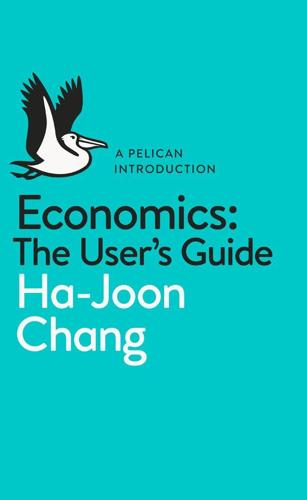
A Pelican Introduction Economics: A User's Guide
by
Ha-Joon Chang
Published 26 May 2014
According to the globalizers, countries now had no choice but to embrace this new reality and fully open up to international trade and investments, while liberalizing their domestic economies. Those who resisted this inevitability were derided as the ‘modern Luddites’, who think they can bring back a bygone world by reversing technological progress (see above). Book titles like The Borderless World, The World Is Flat and One World, Ready or Not summed up the essence of this new discourse. The beginning of the end: the Asian financial crisis The euphoria of the late 1980s and the early 1990s didn’t last. The first sign that not everything was fine with the ‘brave new world’ came with the financial crisis in Mexico in 1995.

The AI Economy: Work, Wealth and Welfare in the Robot Age
by
Roger Bootle
Published 4 Sep 2019
Just because your country does not produce AI – none of the algorithms, deep learning apps that are driving AI, nor the physical entities, such as robots – this does not mean that you cannot benefit by employing them. Indeed, if you don’t, you risk falling into economic irrelevance. That said, there is a marked difference of opinion among the technological cognoscenti about how innovation, including with regard to AI – and the gains from it – will be distributed globally. At one extreme, there is the “world is flat” view, advocated by the New York Times columnist Tom Friedman. This holds that, thanks to the cheapness and interconnectedness of modern technology, anyone with internet access can invent a service or product with potential global scale. At the other extreme is the view that the world is far from flat.

We Are All Fast-Food Workers Now: The Global Uprising Against Poverty Wages
by
Annelise Orleck
Published 27 Feb 2018
Elaina Athans and Angelica Alvarez, “Durham Protesters Demanding Wage Increase Arrested,” ABC11 Eyewitness News, November 29, 2016, http://abc11.com/news/durham-protesters-demanding-wage-increase-arrested/1631168; SEIU Facebook page, “North Carolina Home Care Workers Are Standing Up,” https://www.facebook.com/SEIU/posts/10153040583282680?comment_id=10153042499002680. 3. Interviews with Vance Sanders, November 29 and December 20, 2016. 4. Thomas Friedman books: The Lexus and the Olive Tree: Understanding Globalization (New York: Farrar, Straus and Giroux, 1999), and The World Is Flat: A Brief History of the Twenty-First Century (New York: Farrar, Straus and Giroux, 2005). 5. Jonathan Maze, “Why McDonald’s Won’t Ever Get Rid of Its Real Estate,” Nation’s Restaurant News, February 26, 2015; Adam Brownlee, “McDonald’s Corporation: A Real Estate Empire Financed by French Fries,” The Motley Fool, March 6, 2016. 6.
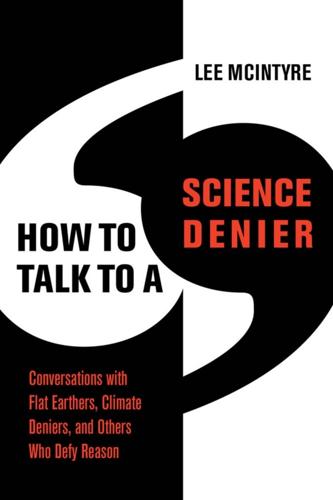
How to Talk to a Science Denier: Conversations With Flat Earthers, Climate Deniers, and Others Who Defy Reason
by
Lee McIntyre
Published 14 Sep 2021
And indeed some confessed that because they were prone to conspiracy theories, this is probably what drew them to research Flat Earth in the first place. But the amazing thing is that they did not seem at all ashamed of this. One fellow explained this by saying, “Flat Earthers are more ‘sensitive’ to conspiracy theories than other people.” But to believe that all world leaders are in on a secret that the world is flat? Does anyone think that Donald Trump and Boris Johnson could keep a secret like that? Apparently so. Time and again, Flat Earthers would come right out and tell me that belief in conspiracy theories was at the foundation of their reasoning.31 (Indeed, in one of the seminars on how to recruit new believers into Flat Earth, one of the speakers said, “If you run into someone who says they don’t believe in conspiracy theories, walk away.”)

Beautiful security
by
Andy Oram
and
John Viega
Published 15 Dec 2009
Connecting People, Process, and Technology: The Potential for Business Process Management Virtually every company will be going out and empowering their workers with a certain set of tools, and the big difference in how much value is received from that will be how much the company steps back and really thinks through their business processes, thinking through how their business can change, how their project management, their customer feedback, their planning cycles can be quite different than they ever were before. —Bill Gates New York Times columnist Thomas Friedman wrote an excellent book in 2005 called The World Is Flat (Farrar, Straus and Giroux) in which he explored the outsourcing revolution, from call centers in India and tax form processing in China to radiography analysis in Australia. I live Friedman’s flat world today; in fact, I am sitting on a plane to Hyderabad to visit part of my development team as I write this text.
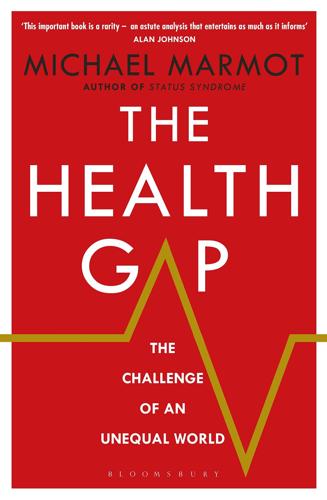
The Health Gap: The Challenge of an Unequal World
by
Michael Marmot
Published 9 Sep 2015
The impact of transnational ‘big food’ companies on the South: a view from Brazil. PLoS Med. 2012; 9(7): e1001252. 44Ottersen OP, Dasgupta J, Blouin C, Buss P, Chongsuvivatwong V, Frenk J, et al. The political origins of health inequity: prospects for change. Lancet. 2014; 383(9917): 630–67. 45Friedman TL. The World Is Flat: a Brief History of the Globalized World in the Twenty-First Century. London: Allen Lane, 2005. 46Kopetchny T. Centre for Global Development: Your Chance to Ask Nancy Birdsall About Globalization and Inequality 2007 [05/01/2015]. Available from: http://www.cgdev.org/blog/your-chance-ask-nancy-birdsall-about-globalization-and-inequality. 11 THE ORGANISATION OF HOPE 1West Midlands Fire Service.

How I Found Freedom in an Unfree World: A Handbook for Personal Liberty
by
Harry Browne
Published 1 Jan 1973
You can unwittingly pay taxes you don't have to pay, abide by standards that are unsuited to you, put up with problems that aren't really yours. Traps are assumptions that are accepted without challenge. As long as they go unchallenged, they can keep you enslaved. That's why it's important that we challenge them in the following pages. I think you'll find that most of them have no more substance than ancient clichés such as "The world is flat." If you're not free now, it's very likely that you've accepted some of these traps. And you probably haven't known of a number of alternatives that could get you out of your restrictions without the pain and effort that you might have assumed would be necessary. As we look at these traps and alternatives, I hope you'll become aware of the unlimited number of avenues open to you.
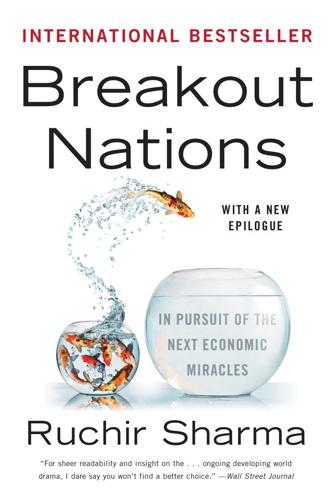
Breakout Nations: In Pursuit of the Next Economic Miracles
by
Ruchir Sharma
Published 8 Apr 2012
—Pratap Bahnu Mehta, Indian Express “It is really the focus of economic attention around the world. It is a whole new look at which economies are going to be winners and which are going to be losers.” —NDTV “This is among the best books to understand the emerging world. . . . Sharma matches the brilliance of Thomas L. Friedman, author of the widely cited The World Is Flat.” —CNN-IBN Copyright © 2013, 2012 by Ruchir Sharma All rights reserved First published as a Norton paperback 2013 Photograph credits: p. xii: Michael Nichols / National Geographic / Getty Images; p. 16: Panos Pictures; p. 36: Mary Evans Picture Library; p. 60: Martin Adolfsson / Gallery Stock; p. 74: Jon Lowenstein / Noor Images BV; p. 84: Donald Weber / VII Photo Agency LLC; p. 98: Mark Power / Magnum Photos; p. 112: Redux Pictures LLC; p. 130: Panos Pictures; p. 154: Liu Jin / AFP / Getty Images; p. 172: Benedicte Kurzen / VII Network; p. 186: Panos Pictures; p. 222: Jan Cobb Photography Ltd / Photographer’s Choice / Getty Images; p. 240: Comstock Images / Getty Images.

Exponential: How Accelerating Technology Is Leaving Us Behind and What to Do About It
by
Azeem Azhar
Published 6 Sep 2021
In the future, however, manufacturing can happen near to the consumer. Thanks to the wonders of 3D printing, components can be produced locally; while the design might come from anywhere, the finished product can be crafted in a local workshop and handed to a customer who lives close by. It wasn’t meant to be this way. Thomas Friedman’s bestselling 2005 book The World is Flat declared itself to be a history of the twenty-first century. Its argument: the world is entering a third phase of globalisation. The first, which began with European exploration of the Americas, is most frequently associated with colonialism and the globalisation of trade between countries. In the second, which got going in the nineteenth century, the focus shifted to the activities of transnational corporations – culminating in the monolithic industrial firms of the post-war era.
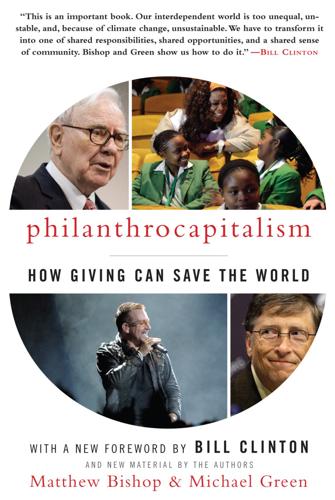
Philanthrocapitalism
by
Matthew Bishop
,
Michael Green
and
Bill Clinton
Published 29 Sep 2008
A handful of the best have been chosen to join with the world’s wealthy elite at the World Economic Forum in Davos, where they can showcase their work and, they hope, secure the financial backing and connections they need to grow. Today, courses in social enterprise are taught at many of the world’s leading business schools, whose students increasingly want to work in jobs with a purpose beyond merely making money. In his bestselling book, The World Is Flat, Thomas Friedman wrote an enthusiastic chapter about the ability of social entrepreneurs to find innovative solutions to society’s problems, concluding, “if it’s not happening, it’s because you’re not doing it.” IF BEING AN entrepreneur is about taking risks, then philanthropreneurship means being willing to take risks in the people and ideas you back with your giving.

Plutocrats: The Rise of the New Global Super-Rich and the Fall of Everyone Else
by
Chrystia Freeland
Published 11 Oct 2012
The Winner-Take-All Society: Why the Few at the Top Get So Much More Than the Rest of Us. Penguin, 1996. Freeland, Chrystia. “The Rise of the New Global Elite.” The Atlantic. January/February 2011. ———. Sale of the Century: Russia’s Wild Ride from Communism to Capitalism. Crown Business, 2000. Friedman, Thomas L. The World Is Flat: A Brief History of the Twenty-First Century. Farrar, Straus and Giroux, 2005. Frydman, Carola, and Dirk Jenter. “CEO Compensation.” Annual Review of Financial Economics 2 (December 2010). pp. 75–102. Frydman, Roman, and Michael D. Goldberg. Beyond Mechanical Markets: Asset Price Swings, Risk, and the Role of the State.
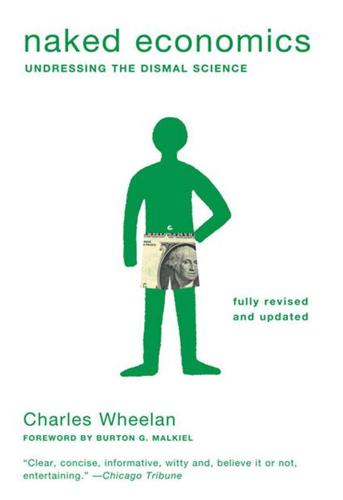
Naked Economics: Undressing the Dismal Science (Fully Revised and Updated)
by
Charles Wheelan
Published 18 Apr 2010
My favorite is an e-mail that came in response to a column arguing that a richer, rapidly growing India is good for the United States. After the usual introduction arguing that my job should be outsourced to some low wage country as soon as possible, the e-mail concluded, “Why don’t you and Tom Friedman [author of the pro-globalization book The World Is Flat] get a room together? The world isn’t flat, it’s just your head!” Others tend to be less subtle, such as the e-mail with the subject line: YOU SUCK!!!!!!!!!!!!!!!!!!!!!!!! (Yes, that is the exact number of exclamation points.) All those exclamation points notwithstanding, nearly all theory and evidence suggest that the benefits of international trade far exceed the costs.
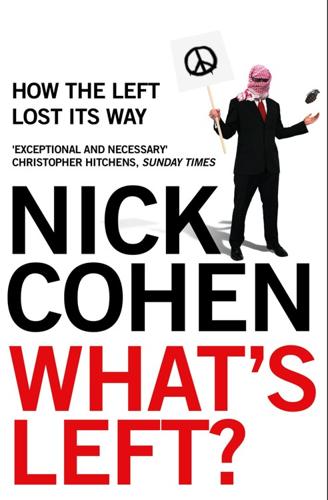
What's Left?: How Liberals Lost Their Way
by
Nick Cohen
Published 15 Jul 2015
Chomsky opined that not believing in the Holocaust was not in itself proof of antisemitism because ‘if a person ignorant of modern history were told of the Holocaust and refused to believe that humans are capable of such monstrous acts, we would not conclude that he is an anti-semite. That suffices to establish the point at issue.’ The hell it does. What of those people who have studied modern history but still prefer poisonous fantasy to fact? A child who has never been to school and says the world is flat isn’t a fool. But if she studies geography for years and doesn’t change her mind she is. The French historian Pierre Vidal-Naquet, who had exposed the abuses of French forces in Algeria and thought Chomsky an ally in the struggle against oppression, wrote in disgust: The simple truth, Noam Chomsky, is that you were unable to abide by the ethical maxim you had imposed.
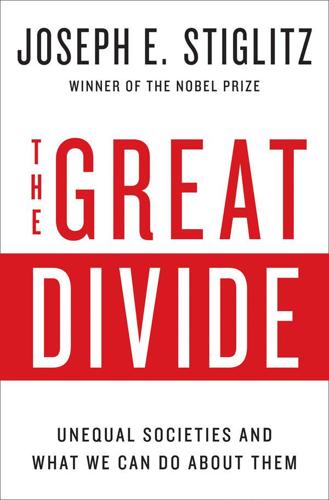
The Great Divide: Unequal Societies and What We Can Do About Them
by
Joseph E. Stiglitz
Published 15 Mar 2015
The shift in the debate from just a year ago seems dramatic: no one even mentions the notion of trickle-down economics anymore, and few are willing to argue that there is a close congruence between social contributions and private rewards. While the realization that America is not the land of opportunity that it has long claimed to be is as disconcerting to others as it is to Americans, inequality of opportunity at the global scale is even greater. One cannot really claim that the world is “flat” when a typical African receives investment in his or her human capital of a few hundred dollars, while rich Americans get a gift from their parents and society in excess of a half-million dollars. A high point of the meeting was the speech by Christine Lagarde, the International Monetary Fund’s managing director, who stressed the marked change in her institution, at least at the top: deep concern about women’s rights; renewed emphasis on the link between inequality and instability; and recognition that collective bargaining and minimum wages could play an important role in reducing inequality.
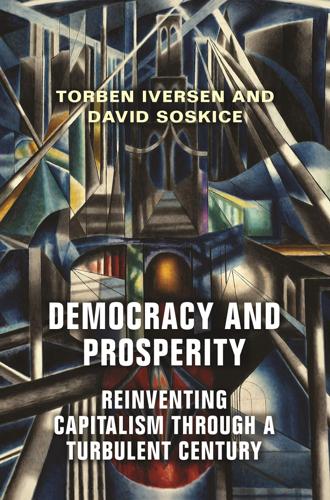
Democracy and Prosperity: Reinventing Capitalism Through a Turbulent Century
by
Torben Iversen
and
David Soskice
Published 5 Feb 2019
“Politik und Währung. Ein internationaler Vergleich.” PhD dissertation, University of Bern. Frey, Carl Benedikt, and Michael A. Obsborne. 2017. “The Future of Employment: How Susceptible Are Jobs to Computerisation?” Technological Forecasting and Social Change 114: 254–80. Friedman, T. L. 2005. The World is Flat: A Brief History of the Twenty-First Century. New York: Picador. Galenson, Walter. 1952. The Danish System of Industrial Relations: A Study in Industrial Peace. Cambridge, MA: Harvard University Press. Gamoran, Adam. 2010. “Tracking and Inequality: New Directions for Research and Practice.”

Emotional Ignorance: Lost and Found in the Science of Emotion
by
Dean Burnett
Published 10 Jan 2023
If everyone in the world had access to all the factual information they’d ever need at all times, they reasoned, ignorance would quickly become a thing of the past. However, rather than an era of pure understanding and logic, it’s now increasingly common online to encounter people who genuinely think the world is flat.98 The optimistic predictions about the effects of abundant information for everyone overlooked one crucial aspect: the limitations of the human brain. The internet has given us both far more information than we could ever take in, and considerably more control over what of this abundant information we choose to consume.
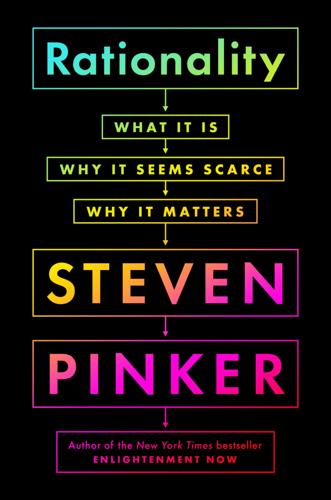
Rationality: What It Is, Why It Seems Scarce, Why It Matters
by
Steven Pinker
Published 14 Oct 2021
Voicing a local heresy, such as rejecting gun control in a Democratic social circle or advocating it in a Republican one, can mark you as a traitor, a quisling, someone who “doesn’t get it,” and condemn you to social death. Indeed, the best identity-signaling beliefs are often the most outlandish ones. Any fair-weather friend can say the world is round, but only a blood brother would say the world is flat, willingly incurring ridicule by outsiders.38 Unfortunately, what’s rational for each of us seeking acceptance in a clique is not so rational for all of us in a democracy seeking the best understanding of the world. Our problem is that we are trapped in a Tragedy of the Rationality Commons.39 Two Kinds of Belief: Reality and Mythology The humor in the Peanuts strip in which Lucy gets buried in snow while insisting that it rises from the ground exposes a limitation on any explanation of human irrationality that invokes the ulterior motives in motivated reasoning.

The Coke Machine: The Dirty Truth Behind the World's Favorite Soft Drink
by
Michael Blanding
Published 14 Jun 2010
New York: The Penguin Press, 2008. Fox, Stephen. The Mirror Makers: A History of American Advertising and Its Creators. Urbana and Chicago: University of Illinois Press, 1997. Frederick, William C., Corporation, Be Good! The Story of Social Responsibility. Indianapolis: Dog Ear, 2006. Friedman, Thomas L. The World Is Flat. New York: Farrar, Straus & Giroux, 2007 (orig. pub. 2005). BIBLIOGRAPHY 3 62 Frundt, Henry J. Refreshing Pauses: Coca-Cola and Human Rights in Guatemala. New York: Praeger, 1987. Gatehouse, Mike, and Miguel Angel Reyes. Soft Drink, Hard Labour. London: Latin American Bureau, 1987. Gazzaniga, Michael S.
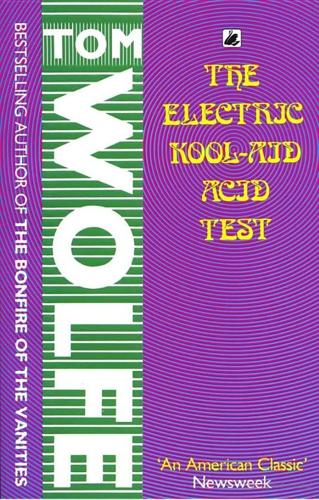
The Electric Kool-Aid Acid Test
by
Tom Wolfe
Published 1 Jan 1968
A true Miracle, in fact, since they had been the same for so goddamn long. Control :::: and it was so plausible, the way it sounded in Kesey's certain Oregon drawl. So few humans have the hubris to exert their wills upon the flow, maybe not more than forty on the whole planet at any given time. The world is flat, it is supported by forty, or maybe four, men, one at each corner, like the cosmic turtles and elephants in the mythology books, because no one else dares. Mountain Girl is 18 and she is pregnant, but this is Kesey ... And Miracles? You haven't seen miracles yet, Job, until you see the Pranksters draw the Beatles into their movie.
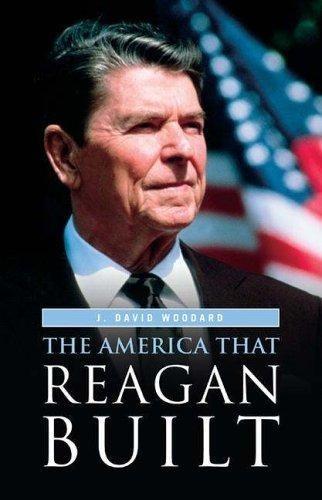
The America That Reagan Built
by
J. David Woodard
Published 15 Mar 2006
The Order of Things: An Archeology of the Human Sciences. New York: Vintage Books, 1994. 272 Select Bibliography Freed, Donald, and Raymond P. Briggs. Killing Time: The First Full Investigation. New York: Macmillan, 1996. Friedman, Milton. Free to Choose. New York: Avon Books, 1985. Friedman, Thomas L. The World Is Flat. New York: Farrar, Straus and Giroux, 2005. Frum, David. How We Got Here: The 70’s. New York: Basic Books, 2000. Gallup Poll: 1976–2005. Wilmington, DE: Scholarly Resources, Inc. Gaslin, Glenn, and Rick Porter. The Complete Cross-Referenced Guide to the Baby Buster Generation’s Collective Unconscious.
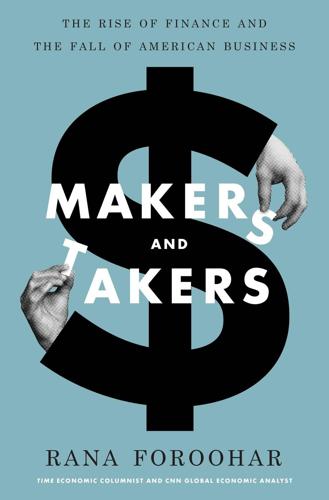
Makers and Takers: The Rise of Finance and the Fall of American Business
by
Rana Foroohar
Published 16 May 2016
Foster, John Bellamy, and Fred Magdoff. The Great Financial Crisis: Causes and Consequences. New York: Monthly Review Press, 2009. Frank, Robert H., and Philip J. Cook. The Winner-take-all Society: Why the Few at the Top Get so Much More than the Rest of Us. New York: Penguin Books, 1996. Friedman, Thomas L. The World Is Flat: A Brief History of the Twenty-first Century. New York: Farrar, Straus and Giroux, 2005. Gabor, Andrea. The Capitalist Philosophers: The Geniuses of Modern Business—Their Lives, Times, and Ideas. New York: Times Business, 2000. Geisst, Charles R. Wall Street: A History. Updated ed. Oxford: Oxford University Press, 2012.
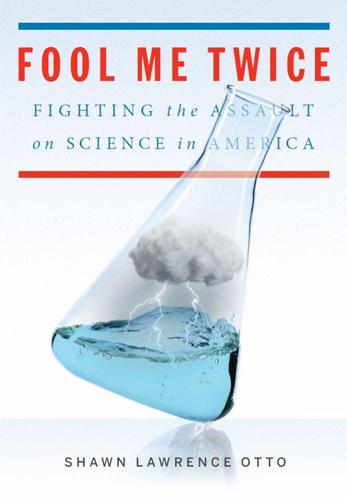
Fool Me Twice: Fighting the Assault on Science in America
by
Shawn Lawrence Otto
Published 10 Oct 2011
Since we cannot observe the whole universe at once, we can make only provisional statements. This quality that Popper identified is referred to as a theory’s falsifiability. While science can rarely absolutely say that something is true, it can absolutely say that something is false. It is absolutely false that the world is flat; we can prove it by going around it. All of our knowledge derived using science stands exposed to the same test of falsifiability: A simple experiment could prove it false. That none has so far gives us pretty high confidence that a given proposition, like the theory of evolution, is probably true.

The Future of the Professions: How Technology Will Transform the Work of Human Experts
by
Richard Susskind
and
Daniel Susskind
Published 24 Aug 2015
Freidson, Eliot, Professionalism, 3rd edn. (Oxford: Polity Press, 2001). Frey, Carl Benedikt, and Michael Osborne, ‘The Future of Employment: How Susceptible Are Jobs to Computerisation’, 17 Sept. 2013 <http://www.oxfordmartin.ox.ac.uk/downloads/academic/The_Future_of_Employment.pdf> (accessed 23 March 2015). Friedman, Thomas, The World is Flat, updated and expanded edn. (London: Penguin, 2006). Frizell, Sam, ‘Meet the Robots Shipping Your Amazon Orders’, Time, 1 Dec. 2014 <http://time.com/3605924/amazon-robots/> (accessed 23 March 2015). Furlong, Jordan, ‘The New World of Legal Work’, published online, 2014 <http://www.lod.co.uk/media/pdfs/The_New_World_Of_Legal_Digital_Download.pdf> (accessed 28 March 2015).

People, Power, and Profits: Progressive Capitalism for an Age of Discontent
by
Joseph E. Stiglitz
Published 22 Apr 2019
Some Republicans criticize our universities for being politically correct and intolerant of bigotry and misogyny. It’s true that academics almost universally teach that climate change is real, and many cast doubts about supply-side economics. Universities also do not give equal weight to theories that the world is flat, to the phlogiston theories in chemistry, or to gold bugs in economics. There are some ideas that deservedly do not receive equal weight in higher education.34 It would be malpractice to teach outdated ideas that have been repeatedly disproved by the scientific method. So far, the universities have withstood the siege.
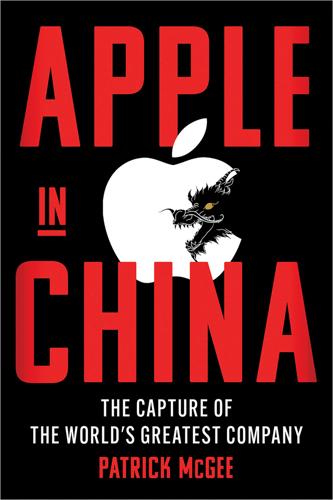
Apple in China: The Capture of the World's Greatest Company
by
Patrick McGee
Published 13 May 2025
As more of that work took place in China, with no other nation developing the same skills, Apple was growing dependent on the very capabilities it had created. The upshot was startling. The open architecture of the IBM PC in 1981 was a major catalyst for the globalization of the electronics industry. Companies on any continent could compete in the supply chain, a phenomenon captured by Thomas Friedman with his phrase “The world is flat.” Twenty-six years later, the closed architecture of the iPhone was driving a different trend: the Chinafication of the electronics industry. The more Apple scaled, the more economic sense it made for all the components inside its products to be made within the country. Some of the key parts would still be provided by American, German, Korean, Taiwanese, and Japanese companies, but as the years passed all were incentivized to build those parts within the borders of the Middle Kingdom.
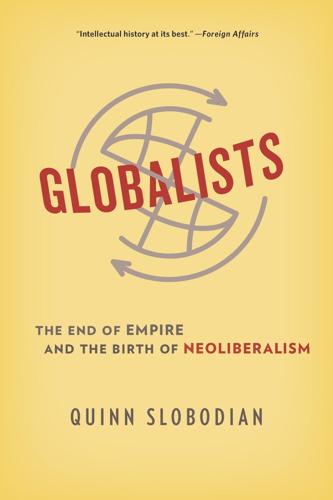
Globalists
by
Quinn Slobodian
Published 16 Mar 2018
Quoted in Wolfgang Streeck, Buying Time: The Delayed Crisis of Democratic Capitalism (New York: Verso, 2014), 213. 4. Chakravarthi Raghavan, “Trade: The Empire Strikes Back,” SUNS—South North Development Monitor, September 20, 1999; Michael Hardt and Antonio Negri, Empire (Cambridge, MA: Harvard University Press, 2000). 5. See Thomas L. Friedman, The World Is Flat: A Brief History of the Twenty-First Century (New York: Farrar, Straus and Giroux, 2005). 6. Rajesh Venugopal, “Neoliberalism as Concept,” Economy and Society 44, no. 2 (2015): 181. See also Bill Dunn, “Against Neoliberalism as a Concept,” Capital and Class, November 23, 2016, https://doi.org/10.1177/0309816816678583. 7.
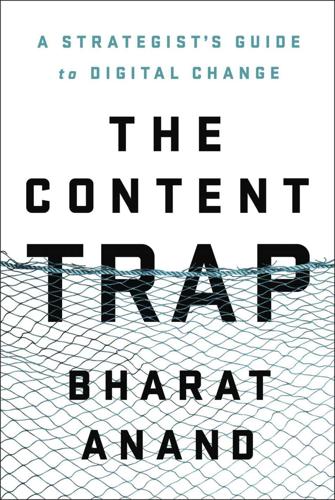
The Content Trap: A Strategist's Guide to Digital Change
by
Bharat Anand
Published 17 Oct 2016
Friedman, “The Professors’ Big Stage,” New York Times , March 5, 2013. diving for a decade Srikant Datar, David Garvin, and Patrick Cullen, Rethinking the MBA: Business Education at a Crossroads (Boston: Harvard Business Review Press, 2010). had written of a “flat world” Thomas L. Friedman, The World Is Flat: A Brief History of the Twenty-First Century (New York: Farrar, Straus & Giroux, 2005). inverted classroom Maureen J. Lage, Glenn J. Platt, and Michael Treglia, “Inverting the Classroom: A Gateway to Creating an Inclusive Learning Environment,” Journal of Economic Education 31, no. 1 (Winter 2000): 30–43.
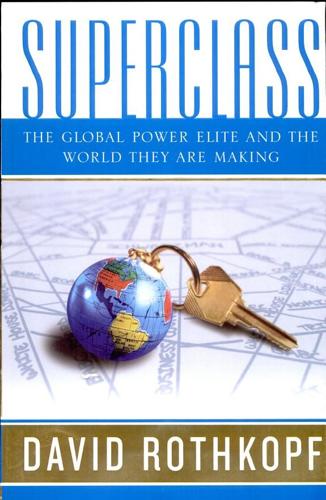
Superclass: The Global Power Elite and the World They Are Making
by
David Rothkopf
Published 18 Mar 2008
Or you can, in a nod to the intellectual leaders who have driven the phenomenon, call them Volcker-Greenspanism after the high priests at the U.S. central bank. I once heard someone, seeking to frame them in terms of free markets and globalization, call them Friedman-Friedmanism, after the Chicago Boys’ mentor Milton and Thomas, author of The World Is Flat. But perhaps the best way to characterize this family of ideas is market-marketism, the notion that central planning and big government have proved such a bust that the best way to solve any of society’s problems is by leaving it to the markets. But more than a generation after this doctrine began to be embraced by the world’s most influential people—by the evolving new global elite—it is now clear that it leaves many questions unanswered.
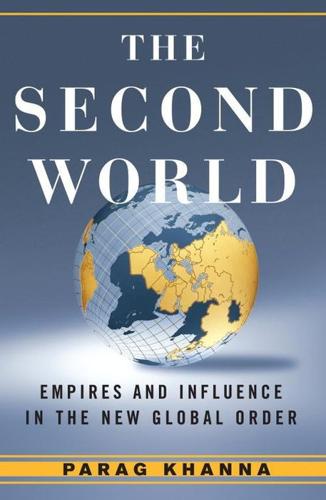
Second World: Empires and Influence in the New Global Order
by
Parag Khanna
Published 4 Mar 2008
New York: Columbia University Press, 2004. French, Howard W. A Continent for the Taking: The Tragedy and Hope of Africa. New York: Vintage, 2005. Freud, Sigmund. Forgetting Things. London: Penguin, 1941; reprint, 2002. Friedman, Thomas L. From Beirut to Jerusalem. New York: Farrar, Straus and Giroux, 1989. ———. The World Is Flat: A Brief History of the Twenty-first Century. New York: Farrar, Straus and Giroux, 2005. Fromkin, David. A Peace to End All Peace: The Fall of the Ottoman Empire and the Creation of the Modern Middle East. New York: Henry Holt, 1989. Fukuyama, Francis. America at the Crossroads: Democracy, Power, and the Neoconservative Legacy.

Connectography: Mapping the Future of Global Civilization
by
Parag Khanna
Published 18 Apr 2016
Oxford University Press, 2013. Freeland, Chrystia. Plutocrats: The Rise of the New Global Super-rich and the Fall of Everyone Else. Penguin Books, 2013. French, Howard W. China’s Second Continent: How a Million Migrants Are Building a New Empire in Africa. Knopf, 2014. Friedman, Thomas L. The World Is Flat: A Brief History of the Twenty-First Century. Farrar, Straus and Giroux, 2005. Fukuyama, Francis. The End of History and the Last Man. Free Press, 2006. ———. Political Order and Political Decay: From the Industrial Revolution to the Globalization of Democracy. Farrar, Straus and Giroux, 2014.
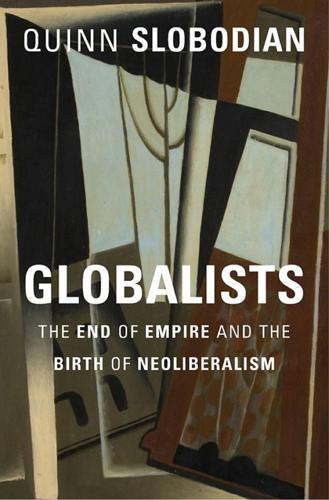
Globalists: The End of Empire and the Birth of Neoliberalism
by
Quinn Slobodian
Published 16 Mar 2018
Quoted in Wolfgang Streeck, Buying Time: The Delayed Crisis of Democratic Capitalism (New York: Verso, 2014), 213. 4. Chakravarthi Raghavan, “Trade: The Empire Strikes Back,” SUNS—South North Development Monitor, September 20, 1999; Michael Hardt and Antonio Negri, Empire (Cambridge, MA: Harvard University Press, 2000). 5. See Thomas L. Friedman, The World Is Flat: A Brief History of the Twenty-First Century (New York: Farrar, Straus and Giroux, 2005). 6. Rajesh Venugopal, “Neoliberalism as Concept,” Economy and Society 44, no. 2 (2015): 181. See also Bill Dunn, “Against Neoliberalism as a Concept,” Capital and Class, November 23, 2016, https://doi.org/10.1177/0309816816678583. 7.
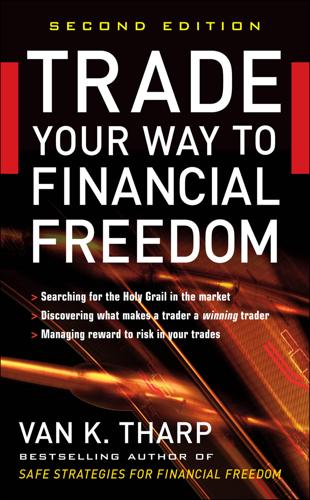
Trade Your Way to Financial Freedom
by
van K. Tharp
Published 1 Jan 1998
Thus, the first part of step 2 in the system development model is to develop a completely open mind. Here are some suggestions for doing that. First, you need to understand that just about everything you’ve ever been taught—including every sentence you’ve read so far in this book—consists of beliefs. “The world is flat” is a belief, just as is the statement “The world is round.” You might say, “No, the second statement is a fact.” Perhaps, but it is also a belief—with a lot of important meaning in each word. For example, what does round mean? Or for that matter, what does world mean? Anything that seems to be a fact is still relative and depends upon the semantics of the situation.

Who Stole the American Dream?
by
Hedrick Smith
Published 10 Sep 2012
Berkeley: University of California Press, 2007. Frank, Thomas. What’s the Matter with Kansas? How Conservatives Won the Heart of America. New York: Henry Holt & Co., 2004. Fraser, Steve. Wall Street: American’s Dream Palace. New Haven, CT: Yale University Press, 2008. Friedman, Thomas L. The World Is Flat: A Brief History of the Twenty-first Century. New York: Farrar, Straus & Giroux, 2005. Galbraith, John Kenneth. The New Industrial State. New York: New American Library, Signet, 1967. Gates, William H., Sr., and Chuck Collins. Wealth and Our Commonwealth: Why America Should Tax Accumulated Fortunes.

Likewar: The Weaponization of Social Media
by
Peter Warren Singer
and
Emerson T. Brooking
Published 15 Mar 2018
An explosion of interest in these systems has led to thousands of new applications. Some might be described as “helpful,” others “strange.” And a few—though developed with the best of intentions—are rightly described as nothing less than “mind-bendingly terrifying.” We’ve already seen how easy it is for obvious falsehoods (“The world is flat”; “The pizza parlor is a secret underage sex dungeon”) to take hold and spread across the internet. Neural networks are set to massively compound this problem with the creation of what are known as “deep fakes.” Just as they can study recorded speech to infer meaning, these networks can also study a database of words and sounds to infer the components of speech—pitch, cadence, intonation—and learn to mimic a speaker’s voice almost perfectly.

Dawn of the Code War: America's Battle Against Russia, China, and the Rising Global Cyber Threat
by
John P. Carlin
and
Garrett M. Graff
Published 15 Oct 2018
And, of course, your phones became full-power general-purpose computers in 2007, when the iPhone was introduced.”25 Fifth, the internet has blurred the line between borders, between domestic and international. One of the greatest strengths of the internet and the digital age has been how they have opened up the world—in Thomas Friedman’s famous phrasing, “The world is flat.” The internet has allowed instant access to far corners of the globe, allowed people sitting at their desks in one country to chat via video with people a continent away, and given anyone with internet access the ability to reach as many readers or viewers as the New York Times or CNN. This trend has provided all-new challenges to governments and nation-states.

Owning the Earth: The Transforming History of Land Ownership
by
Andro Linklater
Published 12 Nov 2013
In reciprocal fashion, American debt was sold everywhere from Oslo to Sydney, but the most significant buyers turned out to be the city and provincial as well as central governments in the coastal crescent from Shanghai to Beijing. The collapse of Communism in the Soviet Union in 1989, and the growing strength of China’s market economy, made it appear that one economic system now circled the world. Soaring on the wings of hubris, Thomas Friedman named his popular book on the globalized economy The World is Flat, while Francis Fukuyama updated Walt Rostow’s development strategy and, in a scholarly article that assumed universal capitalism must lead to universal democracy, predicted “The End of History.” Absent from the writings of either author and from the published deliberations of the Federal Reserve and the Bank of England, of governments on either side of the Atlantic, of most of Wall Street and the City of London, and an array of international financial experts, was any suggestion that they understood that the phenomenon of globalization grew out of the disparity between two ways of owning the earth.

How to Hide an Empire: A History of the Greater United States
by
Daniel Immerwahr
Published 19 Feb 2019
“domination without”: George Marion, Bases and Empire: A Chart of American Expansion (New York, 1948), chap. 12. great coordinating process: A point developed cogently in Neil Smith, American Empire: Roosevelt’s Geographer and the Prelude to Globalization (Berkeley, CA, 2003). “flat”: Thomas L. Friedman, The World Is Flat: A Brief History of the Twenty-First Century (New York, 2005). 19. LANGUAGE IS A VIRUS “broken English”: William Bradford, History of Plymouth Plantation, 1606–1646, ed. William T. Davis (1651; New York, 1908), 135. On Squanto, I’ve relied on Neil Salisbury, “Squanto: Last of the Patuxets,” in Struggle and Survival in Colonial America, ed.
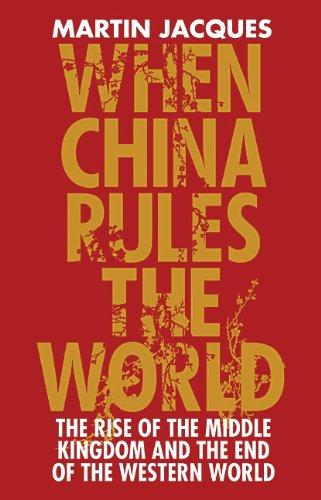
When China Rules the World: The End of the Western World and the Rise of the Middle Kingdom
by
Martin Jacques
Published 12 Nov 2009
International Herald Tribune, 1 June 2006 ——‘Side by Side in China, While Still Worlds Apart’, International Herald Tribune, 20 March 2008 ——and Lydia Polgreen, ‘China Brings Its Deep Pockets to Africa’, International Herald Tribune, 13 August 2007 Friedman, Thomas L., ‘China’s Sunshine Boys’, International Herald Tribune, 7 December 2006 ——‘Democrats and China’, International Herald Tribune, 11- 12 November 2006 ——The Lexus and the Olive Tree: Understanding Globalization (New York: Farrar, Straus and Giroux, 1999) ——The World is Flat: A Brief History of the Globalized World in the Twenty-first Century (London: Allen Lane, 2005) Fukuyama, Francis, ‘The End of History?’, National Interest, 16, Summer 1989 ——The End of History and the Last Man (London: Hamish Hamilton, 1992) ——Trust: The Social Virtues and the Creation of Prosperity (London: Hamish Hamilton, 1995) Gall, Susan, and Irene Natividad, eds, The Asian American Almanac: A Reference Work on Asians in the United States (Detroit: Gale Research, 1995) Gardner, Howard, To Open Minds (New York: Basic Books, 1989) Garrett, Valery M., Chinese Clothing: An Illustrated Guide (Oxford: Oxford University Press, 1994) ——Traditional Chinese Clothing in Hong Kong and South China, 1840- 1980 (Hong Kong: Oxford University Press, 1987) Garrison, Jim, America as Empire: Global Leader or Rogue Power?
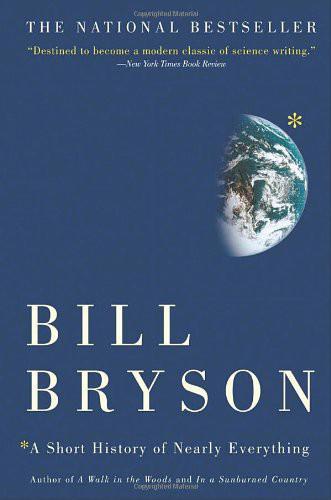
A Short History of Nearly Everything
by
Bill Bryson
Published 5 May 2003
Quoted by Guth, p. 14. 18 “He makes an analogy with a very large clothing store . . .” Discover, November 2000. 19 “with the slightest tweaking of the numbers . . .” Rees, Just Six Numbers, p. 147. 20 “gravity may turn out to be a little too strong . . .” Financial Times, “Riddle of the Flat Universe,” July 1–2, 2000; and Economist, “The World Is Flat After All,” May 20, 2000, p. 97. 21 “the galaxies are rushing apart.” Weinberg, Dreams of a Final Theory, p. 34. 22 “Scientists just assume that we can't really be the center . . .” Hawking, A Brief History of Time, p. 47. 23 “the universe we know and can talk about . . .” Hawking, A Brief History of Time, p. 13. 24 “the number of light-years to the edge . . .”

The Innovators: How a Group of Inventors, Hackers, Geniuses and Geeks Created the Digital Revolution
by
Walter Isaacson
Published 6 Oct 2014
“The Trips Festival marked Stewart Brand’s emergence as a countercultural entrepreneur—but in a deeply technocratic mold,” wrote the cultural historian Fred Turner.17 A month after the Trips Festival, in February 1966, Brand was sitting on his gravelly rooftop in San Francisco’s North Beach enjoying the effects of 100 micrograms of LSD. Staring at the skyline, he ruminated on something that Buckminster Fuller had said: our perception that the world is flat and stretches indefinitely, rather than round and small, is because we have never seen it from outer space. Abetted by the acid, he began to grok the smallness of the earth and the importance of other people appreciating that as well. “It had to be broadcast, this fundamental point of leverage on the world’s ills,” he recalled.

The Mask of Sanity: An Attempt to Clarify Some Issues About the So Called Psychopathic Personality
by
Hervey Cleckley
Published 1 Jan 1955
Despite the similarity between the way such beliefs are adopted and the way a schizoid or paranoid patient arrives at his delusions, and despite the similar lack of evidence for considering either true, people such as those now under discussion are usually capable of leading useful lives in harmony with the community and sometimes of benefit to society. Few things, in my opinion, are more basic than the necessity for men to allow each other freedom to believe or not to believe, however sacred, or however false, different creeds may be held by different groups. Convictions that the world is flat, that one must not begin a job on Friday, or that Mr. Arthur Bell of Mankind United193 is omnipotent are apparently held by some in reverent identity with the deepest religious attitudes of which they are capable. In this basic sense, each man’s religion, as contrasted with the dogma or illusion in which he may frame it, his basic attitude and emotional response to whatever meaning and purpose he has been able to find in his living, deserves respect and consideration.
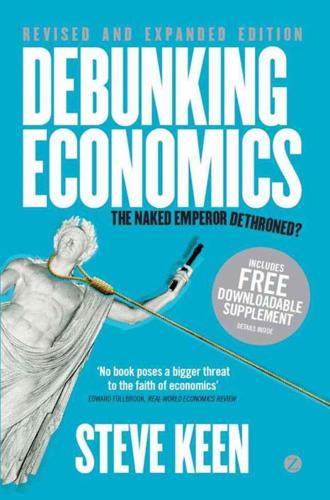
Debunking Economics - Revised, Expanded and Integrated Edition: The Naked Emperor Dethroned?
by
Steve Keen
Published 21 Sep 2011
When that error is corrected, it is easily shown that a competitive market will also set price above marginal cost, and therefore a supply curve that is independent of the demand curve can’t be drawn. The other half of the ‘Totem of the Micro’ disappears. The kernel Try this party trick: convince someone that the world is flat, starting from the premise that it is a sphere. The argument is simple. If you take a small enough segment of the world – say, the two feet your victim is standing on – then the curvature of that segment is so small that it is, to all intents and purposes, flat. Then consider the segment you’re standing on – it is also so small that it is effectively flat.

The Portable Atheist: Essential Readings for the Nonbeliever
by
Christopher Hitchens
Published 14 Jun 2007
The kalâm argument has been severely challenged by philosophers on logical grounds,16 which need not be repeated here since we are focusing on the science. In his writings, Craig takes the first premise to be self-evident, with no justification other than common, everyday experience. That’s the type of experience that tells us the world is flat. In fact, physical events at the atomic and subatomic level are observed to have no evident cause. For example, when an atom in an excited energy level drops to a lower level and emits a photon, a particle of light, we find no cause of that event. Similarly, no cause is evident in the decay of a radioactive nucleus.

Why the West Rules--For Now: The Patterns of History, and What They Reveal About the Future
by
Ian Morris
Published 11 Oct 2010
America’s Secret War: Inside the Hidden Worldwide Struggle Between America and Its Enemies. New York: Doubleday, 2004. ———. The Next Hundred Years: A Forecast for the Twenty-First Century. New York: Doubleday, 2009. Friedman, Thomas. The Lexus and the Olive Tree. New York: Anchor, 1999. ———. The World Is Flat: A Brief History of the Twenty-First Century. New York: Farrar, Straus and Giroux, 2005. ———. Hot, Flat, and Crowded: Why We Need a Green Revolution. New York: Farrar, Straus and Giroux, 2008. Frye, James, Rajagopal Ananthanarayanan, and Dharmendra Modha. “Towards Real-Time, Mouse-Scale Cortical Simulations.”

Dhalgren
by
Samuel R. Delany
Published 31 Dec 1973
and yet as I said that into the chin mike, I was thinking: You certainly could never mistake the two conditions for one another. But I couldn't think of any way to say what was different about it, so I just described the way everybody, who'd never been there themselves, had told me it was going to feel like. Later I thought, that's like telling someone the world is flat and sending him off to the edge; but because he doesn't know quite how to describe such gentle roundness, he mumbles and stammers and says, 'Well yeah, I was at the… edge.' And the thing about the moon itself, the one thing I've really never told anybody, because I don't think I would have known how before those experiments: it's another world, and when you're there, you have no way of knowing what anything means.

Melody Beattie 4 Title Bundle: Codependent No More and 3 Other Best Sellers by Melody Beattie: A Collection of Four Melody Beattie Best Sellers
by
Melody Beattie
Published 30 May 2010
Maybe he can stay sober, but I can’t change my life. As children we’re filled with wonder at the world around us. Anything is possible, anything at all. But all too soon the weight of the shouldn’ts, impossible’s, and won’ts comes sneaking in around our shoulders tying us down to lowered expectations and limited beliefs. The world is flat. If you sail to the edge, you will fall off. Everything that can be invented already has been. Man will never walk on the moon. Believe in yourself. Believe in a wonderful God. Believe in the programs and support structures that help you every day. Say what it is you want, the lessons you want to learn, the goals you want to achieve, the relationships that you want to have, and then go out and allow the universe to manifest them in your life.

Empire of Things: How We Became a World of Consumers, From the Fifteenth Century to the Twenty-First
by
Frank Trentmann
Published 1 Dec 2015
China Business Weekly, 7–13 Aug. 2006, 9. 55. http://residence.net.cn/main.htm. 56. 2004, quoted in Deborah Davis, ‘Urban Consumer Culture’, in: China Quarterly, 2005: 692–709, 706. See also: Deborah S. Davis, ed., The Consumer Revolution in Urban China (Berkeley, CA, 2000). 57. Thomas L. Friedman, The World is Flat: A Brief History of the Globalized World in the Twenty-first Century (London, 2005). 58. Shunya Yoshimi, ‘Consuming America, Producing Japan,’ in: Garon & Maclachlan, eds., Ambivalent Consumer, 64. 59. Harootunian, Overcome by Modernity, esp. chs. 2–3. 60. Shunya Yoshimi, ‘Consuming America, Producing Japan’, in: Garon and Maclachlan, eds., Ambivalent Consumer, ch. 3.